May 19, 2007 - Cretaceous Fossils, Montgomery Co, AL
Large Cretoxyrhina mantelli (Ginsu shark) tooth
Small pycnodont fish tooth - Genus Anomoeodus.
Small pycnodont fish tooth - Genus Anomoeodus.
- ‹ previous
- 619 of 629
- next ›
Large Cretoxyrhina mantelli (Ginsu shark) tooth
Small pycnodont fish tooth - Genus Anomoeodus.
Small pycnodont fish tooth - Genus Anomoeodus.
A few BPS members drove over to Tuscaloosa, AL to hear a lecture on fossil whales. We arrived early, and decided to "fossil hunt" at the Geological Survey of Alabama building. The steps and bannisters are of limestone, and are nicely weathered out to show beautiful fossils.
(Photos courtesy Vicki Lais, with special thanks to George Phillips for his assistance!)
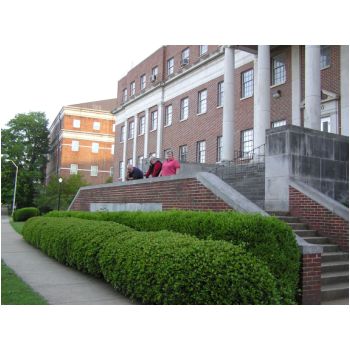
|
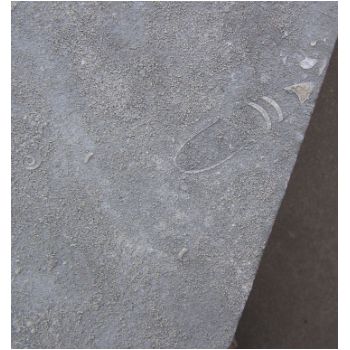
|
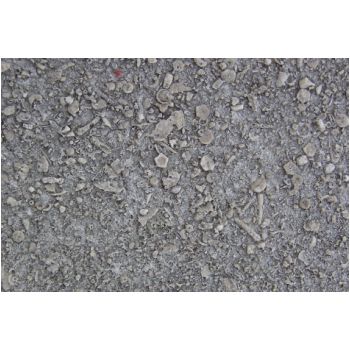
|
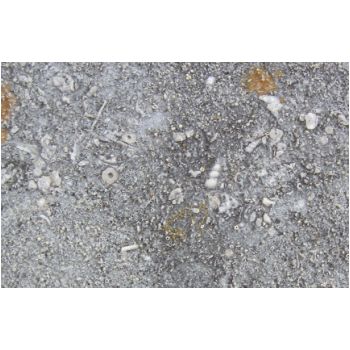
|
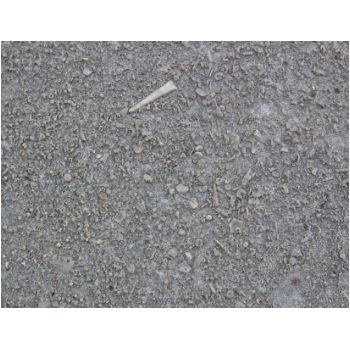
|
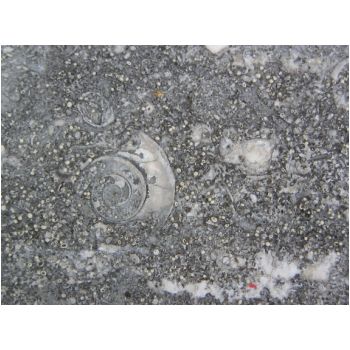
|
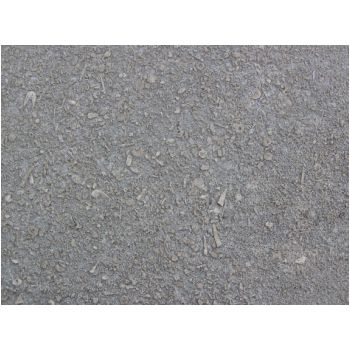
|
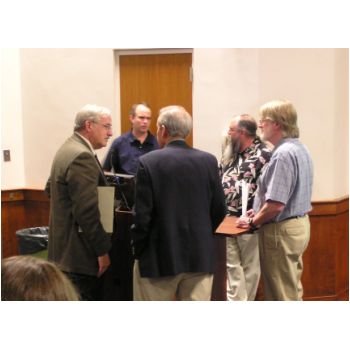
|
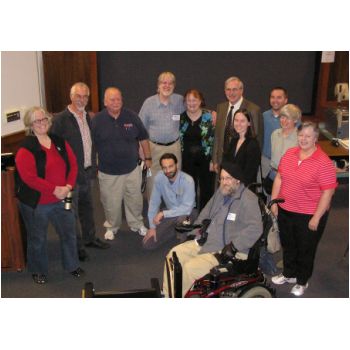
|
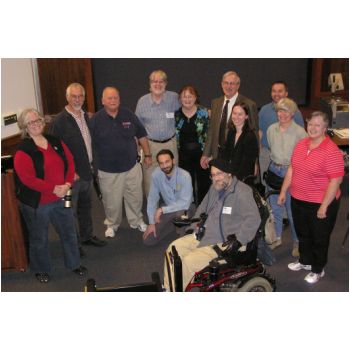
|
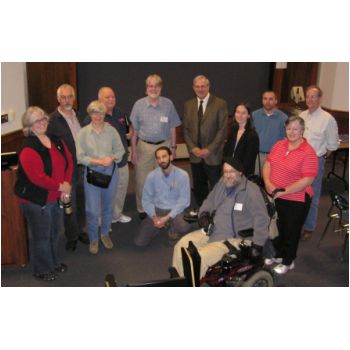
|
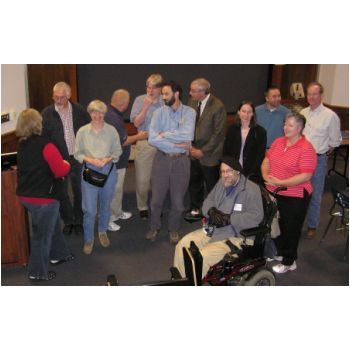
|
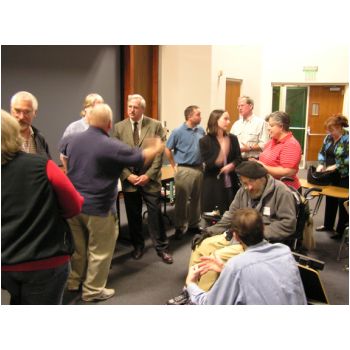
|
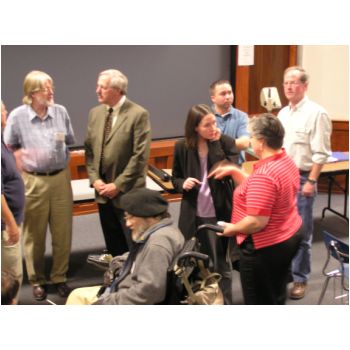 |
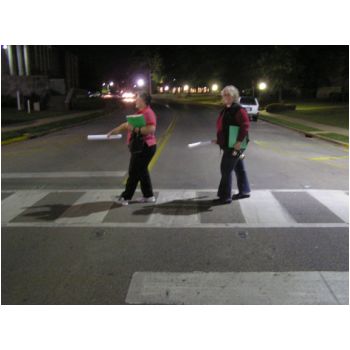
|
Everyone met at a central location, and a brief introduction to the geology of the area was given before driving about 12 more miles to the entrance to the site. While past trips to this location have found the entrance roads to be very slick from rain, this years access was dry and easy. The entire caravan was able to drive to the limestone hilltop parking area.
The fossil hunting started the moment you exited your car with small gastropods and segments of large ammonites being found on the cleared hill top. The trail down to the creek provided more ammonites.
The creek was beautiful with white quartz sand beaches at many of the bends. Shark teeth, ray teeth, fossil bone, ammonite pieces and nautiloids were found in the gravel bars, along with numerous non-fossilized bones and teeth from various mammals. Some of the more interesting finds were various human artifacts rather than fossils. Indian potshards, some with incised decorations, a couple of projectile points and an Indian pipe, probably of European origin, were found.
The end of the day found the diehard fossil hunters resting at the beach where the trail intersected the creek. The Novaks organized a fire on the beach to roast small sausages, while others brought snacks to contribute, and the Stewarts returned to the parking area to set up camp for the night and fix their dinner.
By dark, everyone headed home, leaving Pam and Bob to enjoy a pleasant night at the site with owls hooting and Whip-poor-wills calling. At daybreak turkeys could be heard at the tree line adjacent to the camp area. After a couple of hours of walking the creek on Sunday morning the Stewarts packed up and reluctantly left the site, letting it return to nature.
(Photos courtesy Jan Novak, Bob Stewart, Becky Guthrie, and Vicki Lais)
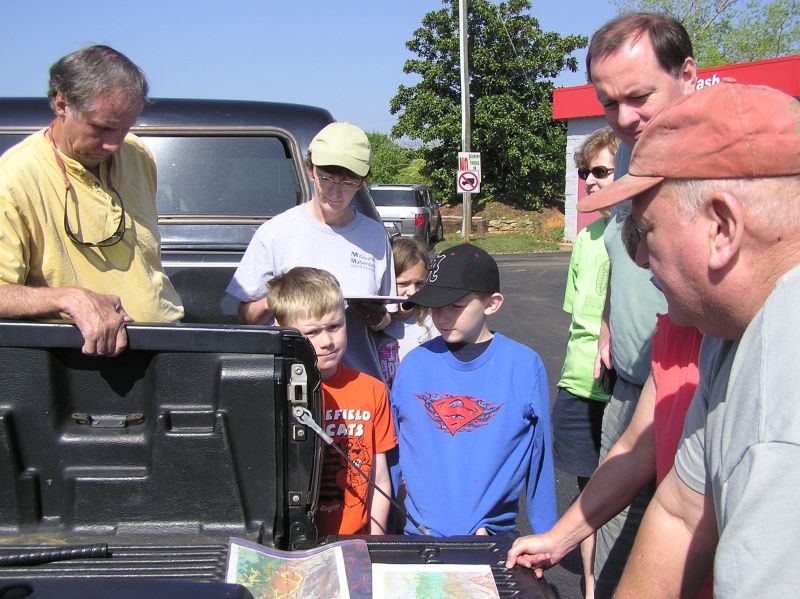
Vice President Greg gives an overview of the geology of the site and collecting rules.
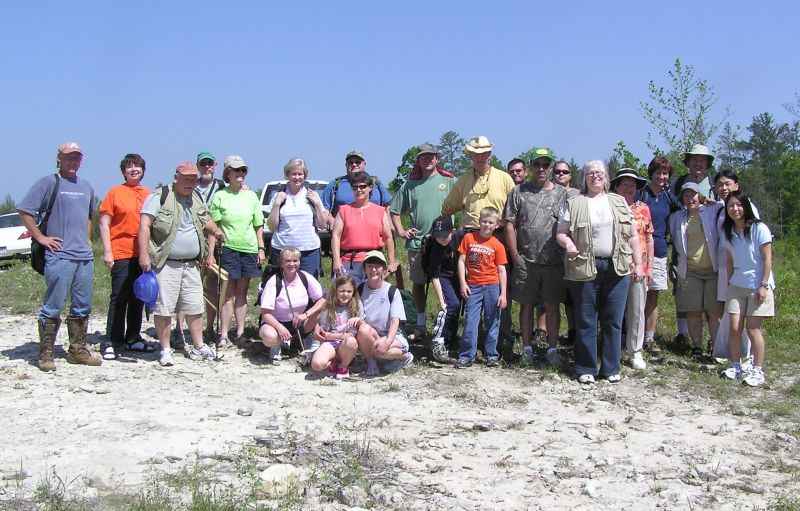
A lot of excited people showed up for the field trip - fossils can even be found on the limestone earth in the foreground.
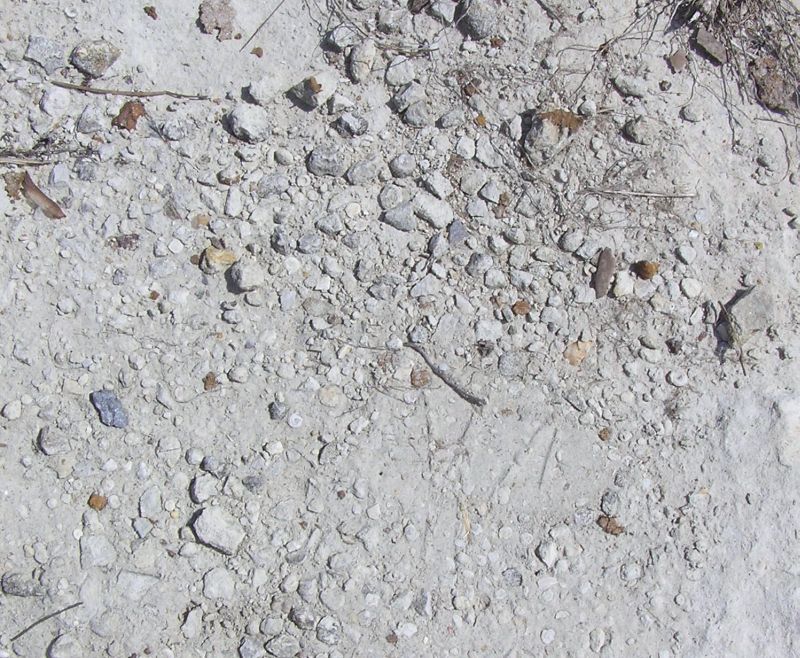
If you look carefully, you can spot tiny round gastropods, each approximately 3/8 inch across.
Hiking down to the creek from the parking area (and of course, looking for fossils along the way!)
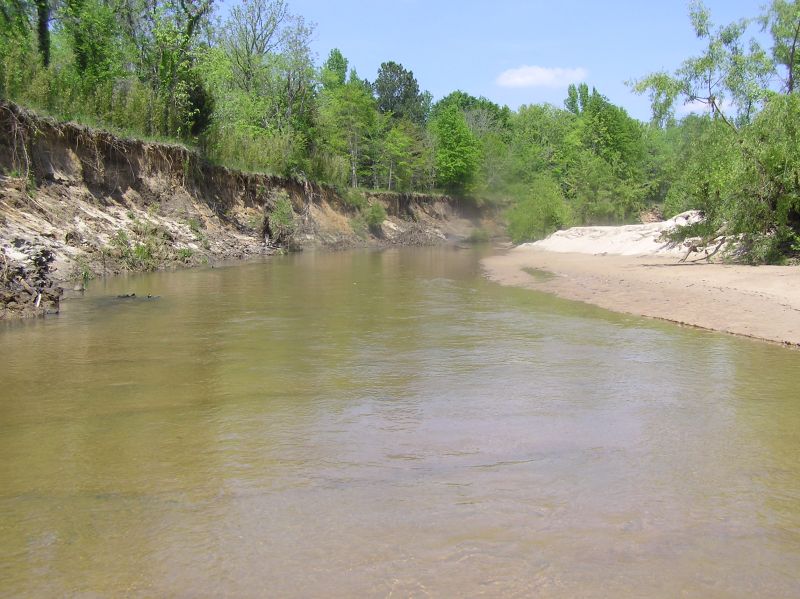
The creek was higher this year than normal, but there were still numerous gravel bars.
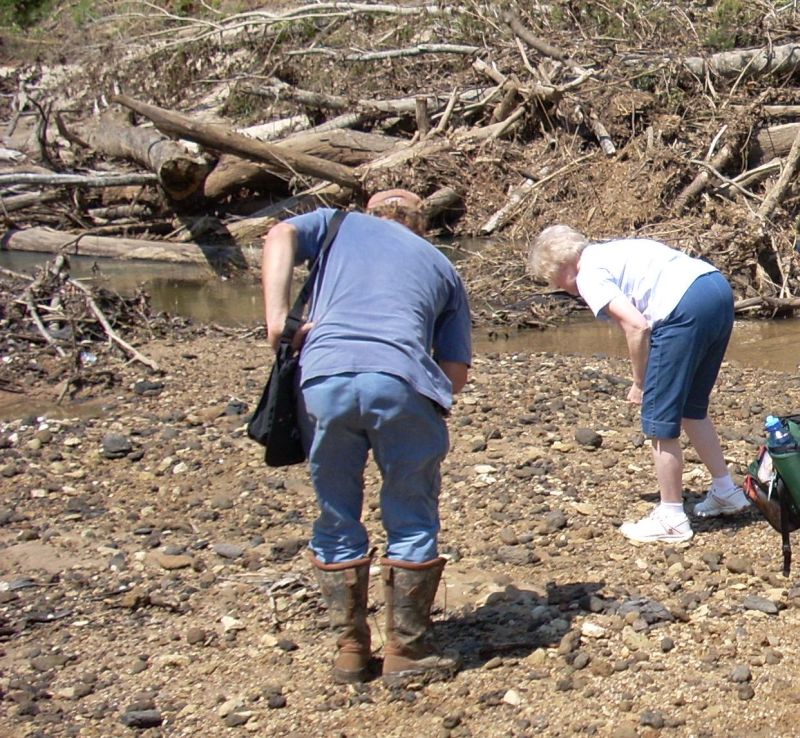
A recent storm had washed up a huge pile of brush and trees, and left behind rocky rubble and mud rather than the white sand we normally find.
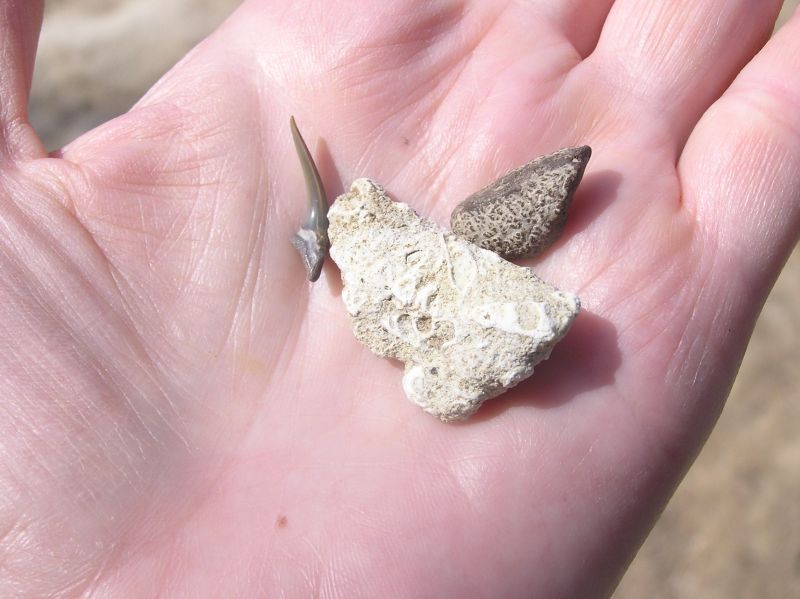
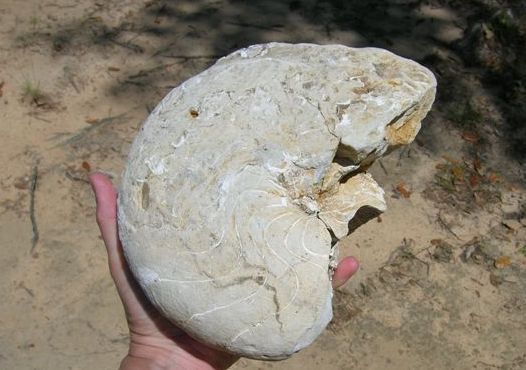
Nice nautiloid found by David.
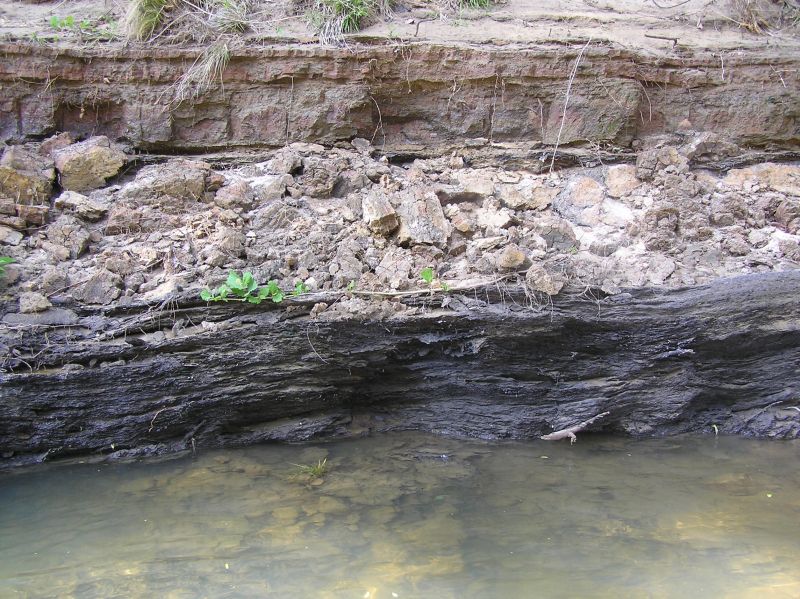
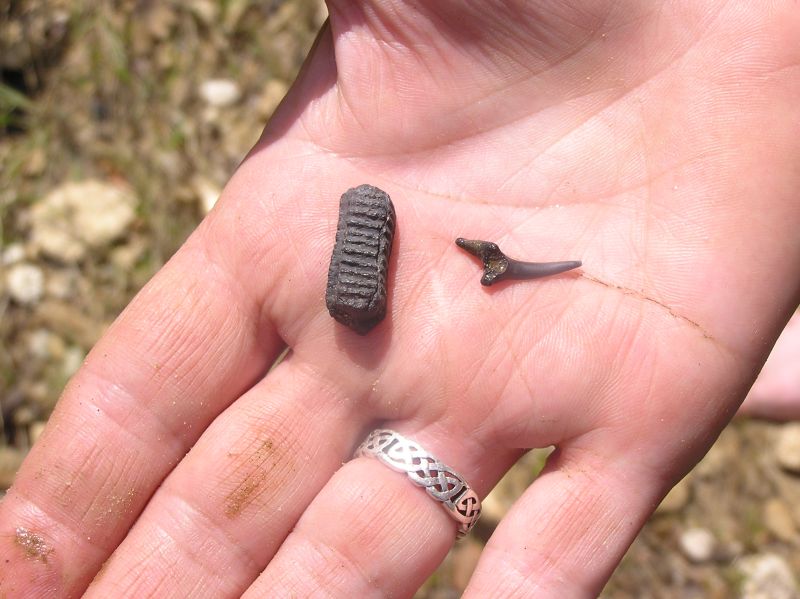
Ray tooth and shark tooth.
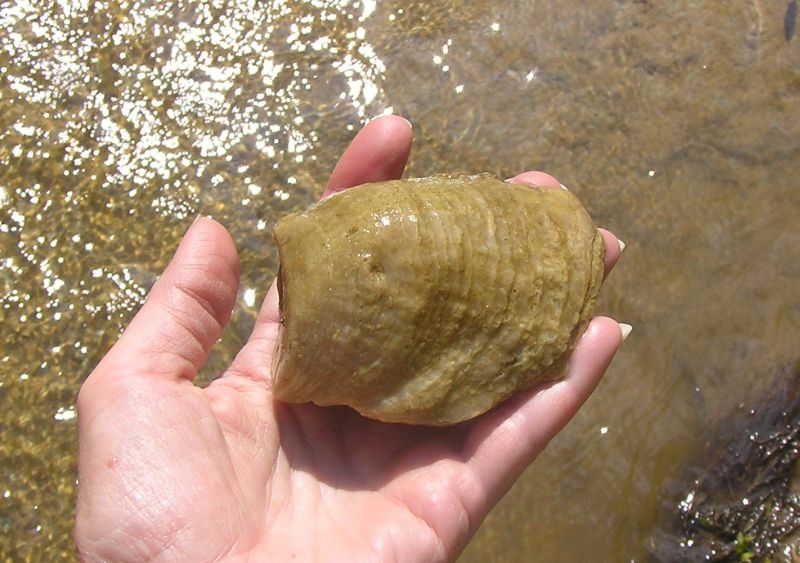
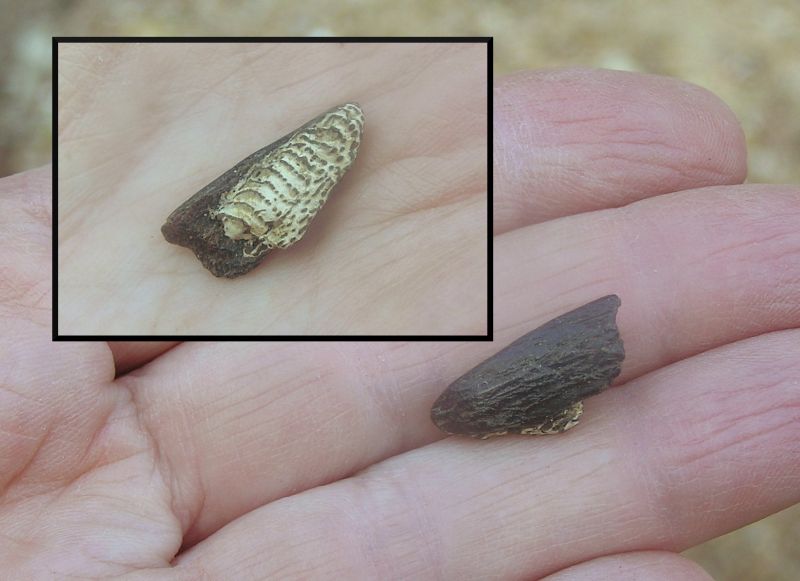
Unknown item, can anyone identify? Looks kind of like a tooth. . . .but . . . .
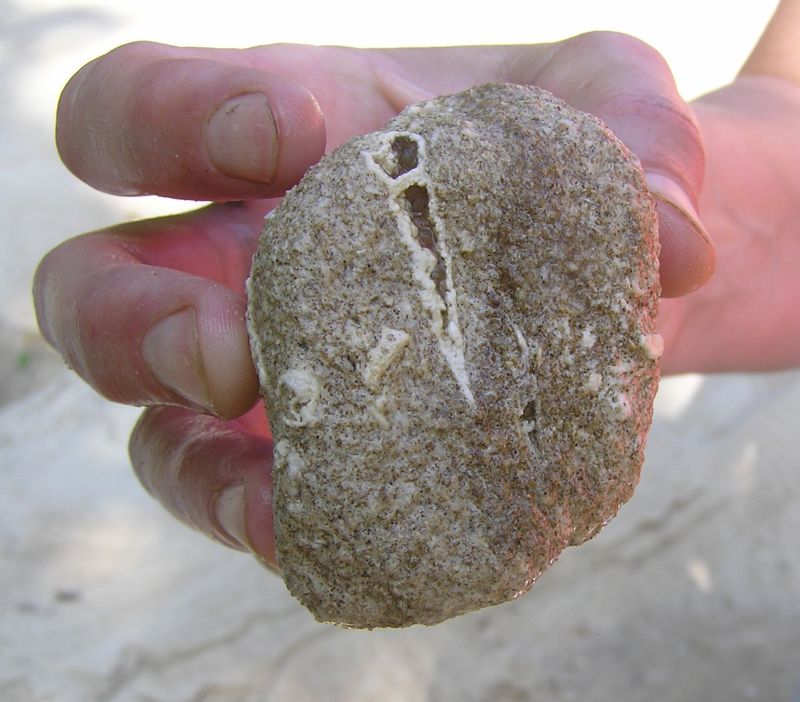
Nice turritella in coquina.
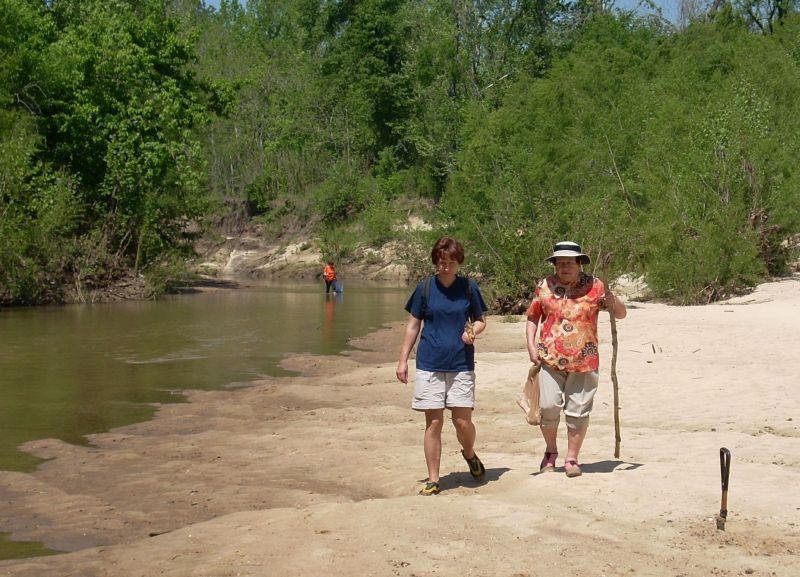
Lea's mom was visiting from the Czech Republic, and decided to join us for the fun!
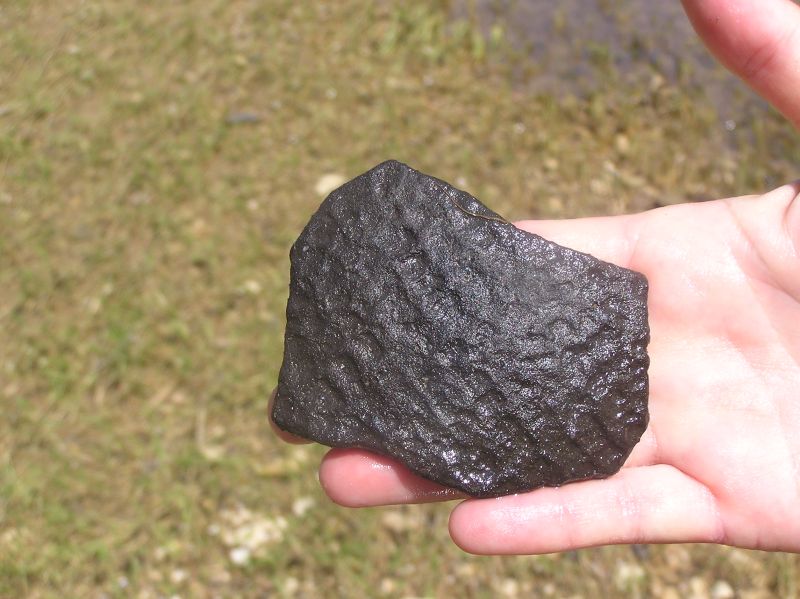
Shells in matrix.
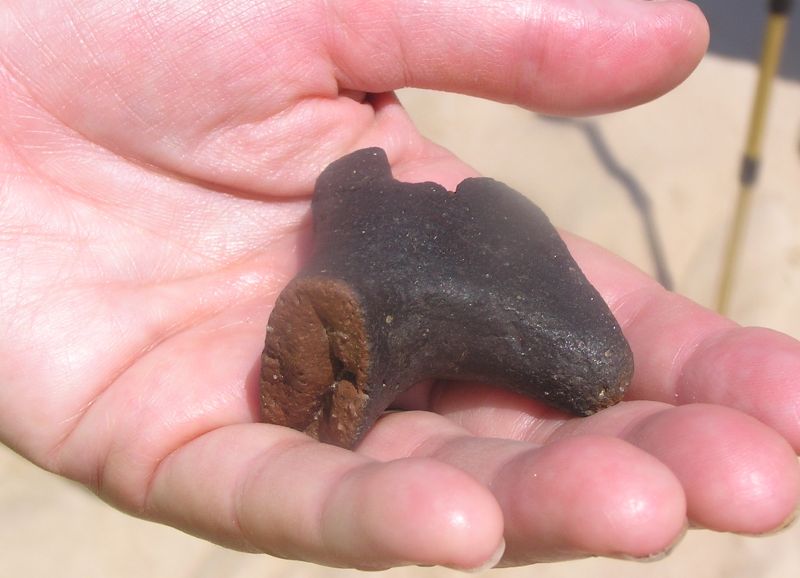
Probably a pottery handle.
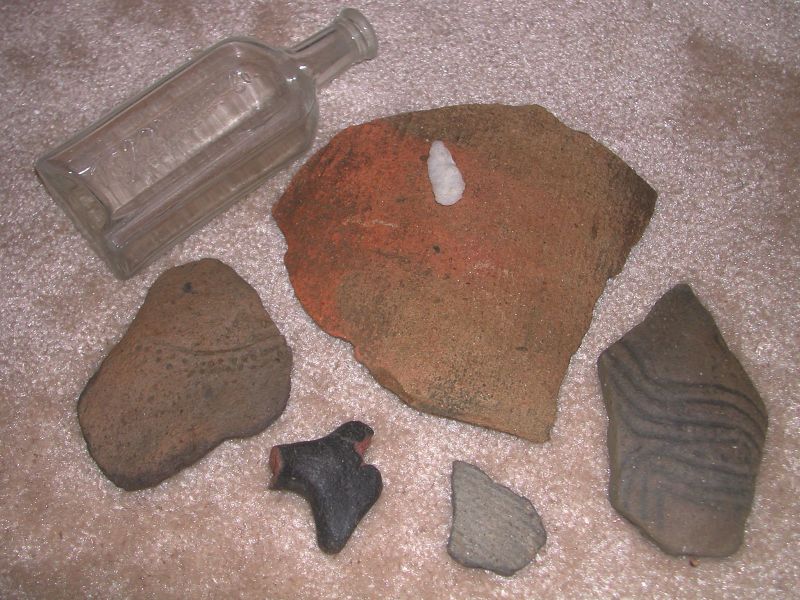
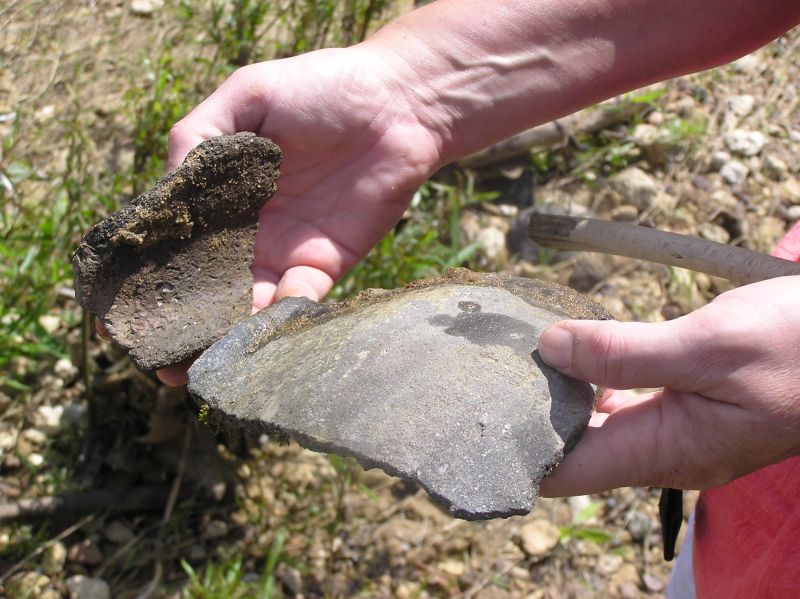
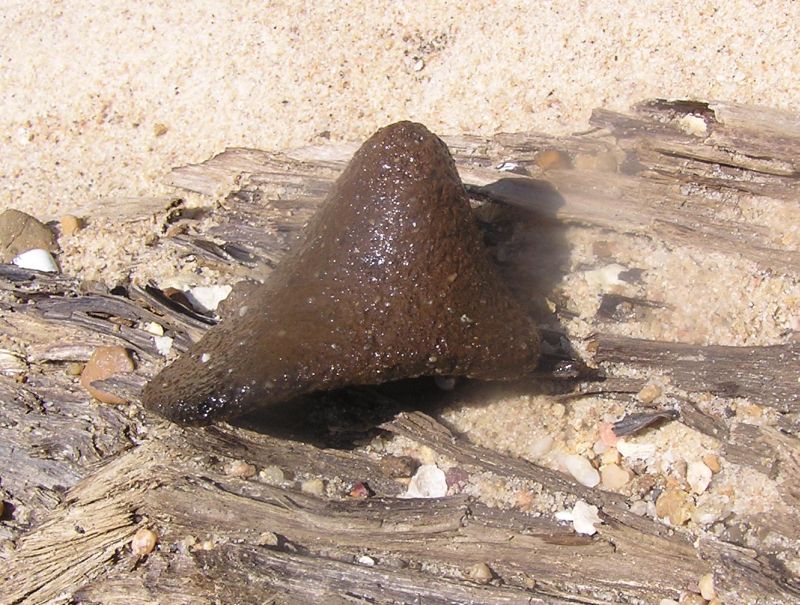
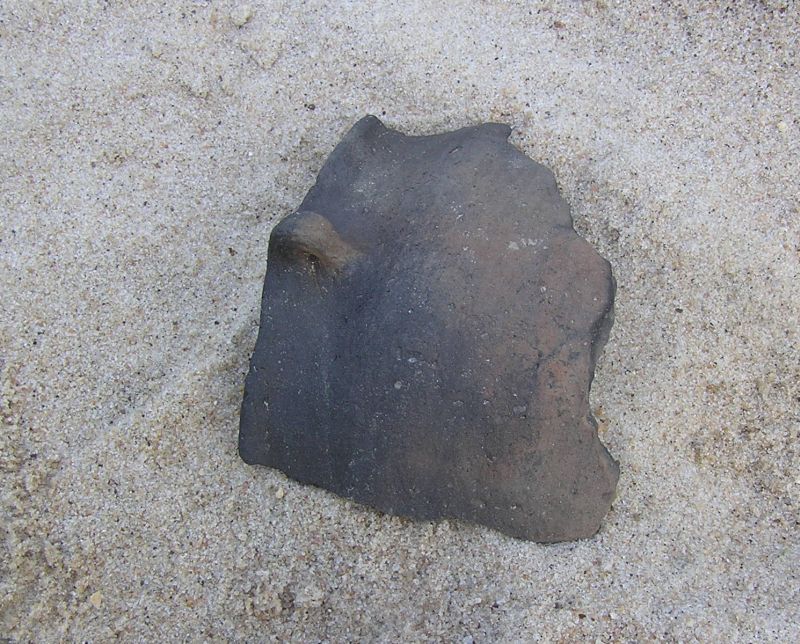
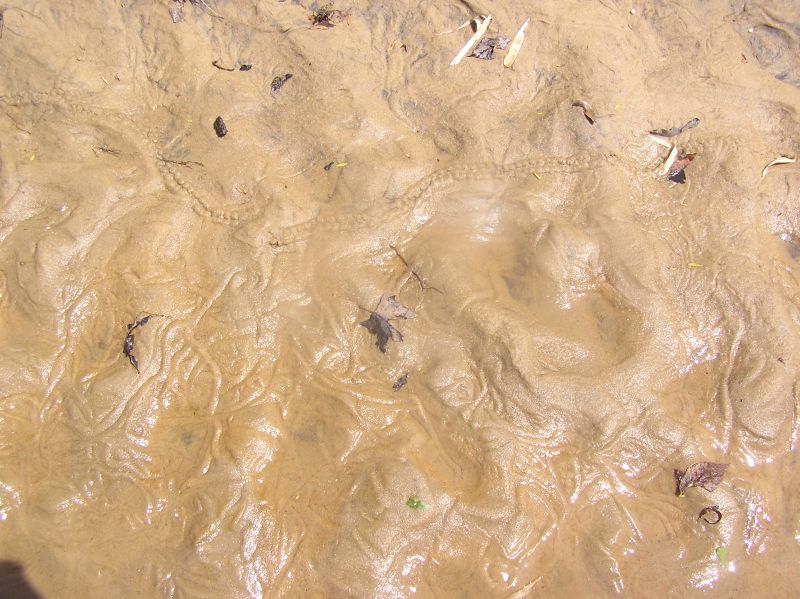
Worm tracks in the sand. Fossil worm tracks much like these are found in shale in north Alabama.
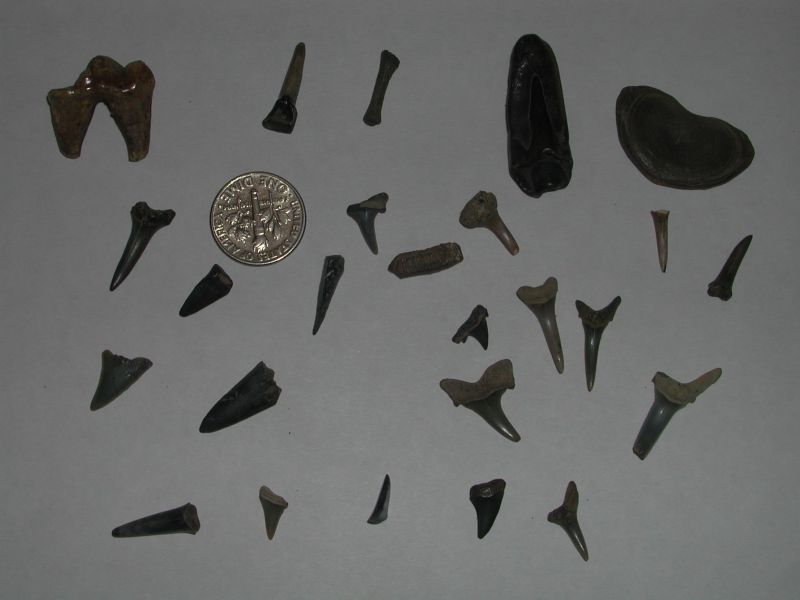
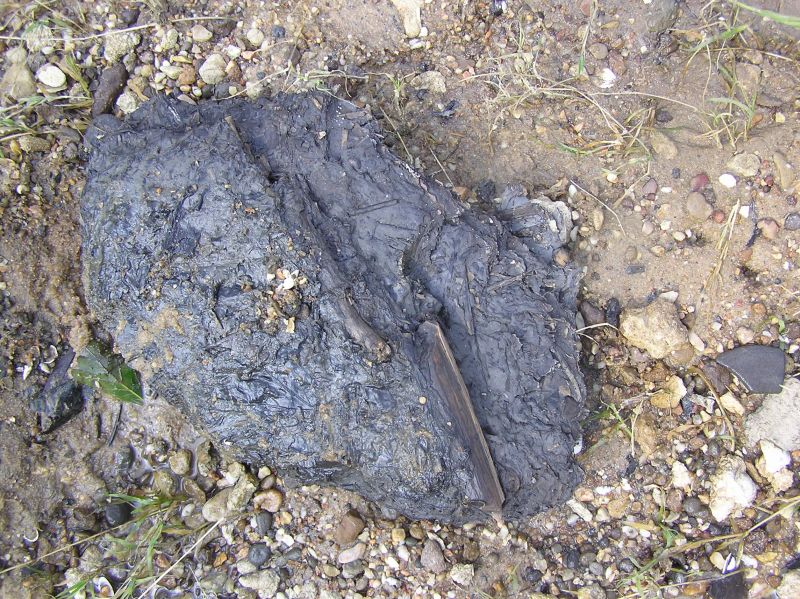
Numerous clayballs were found in the creek. This one shows bits and pieces of plant debris. The finder did not examine it closely to determine whether these were fossil leaves or recent, however, based on the geology of the area, they could easily be cretaceous fossil remains.
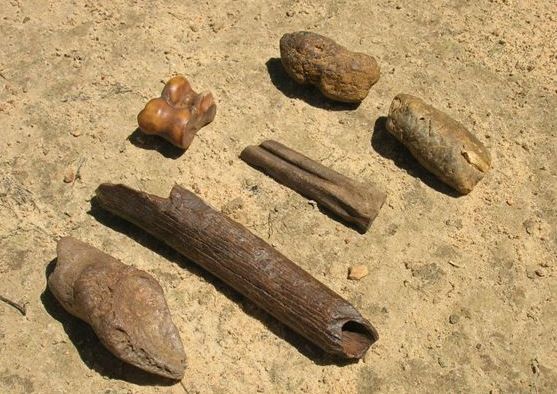
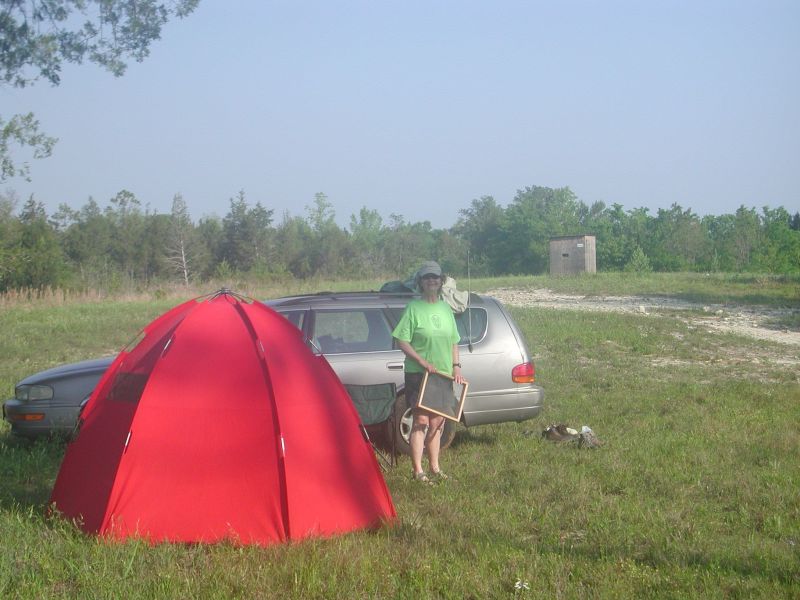
While Bob & Pam set their tent up . . .
The others built a fire and enjoyed the evening.
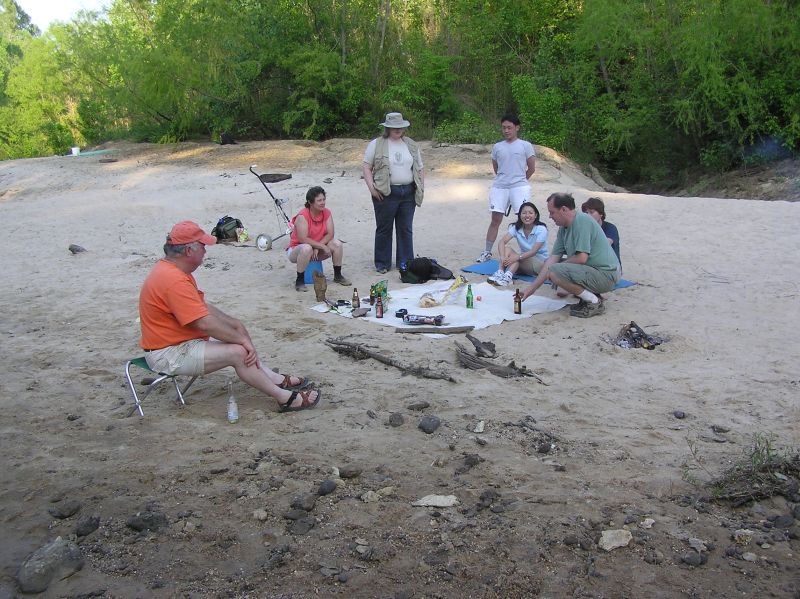
The campfire has about died out as some of the diehard fossil hounds hang out wringing that last little bit of enjoyment from the day!
The March field trip was graced with perfect weather for playing in a creek. The morning started out pleasantly cool but was shorts and T-shirt weather by the time we got to the site.
Many varieties of sharks teeth were found including Otodus, Squalicorax and Ptychodus. Besides shark teeth the group found Oyster, petrified wood, fish vertebra, a mosasaur vertebra and other items of interest.
We had an "early leavers" group and an "it isn't dark yet" group; both groups stopped to enjoy dinner and continue the fossil discussions, fill their bellies, and wind down before the long drive home.
--Leisa Whitlow, Contributor
--Edited by Vicki Lais
(Photos courtest Jan Novak and Vicki Lais)
Most of the gang!
The long hike down the hill to the creek.
Are you sure we're supposed to go here, Aunt Mel?
The creek was quite low, and shark teeth were immediately found.
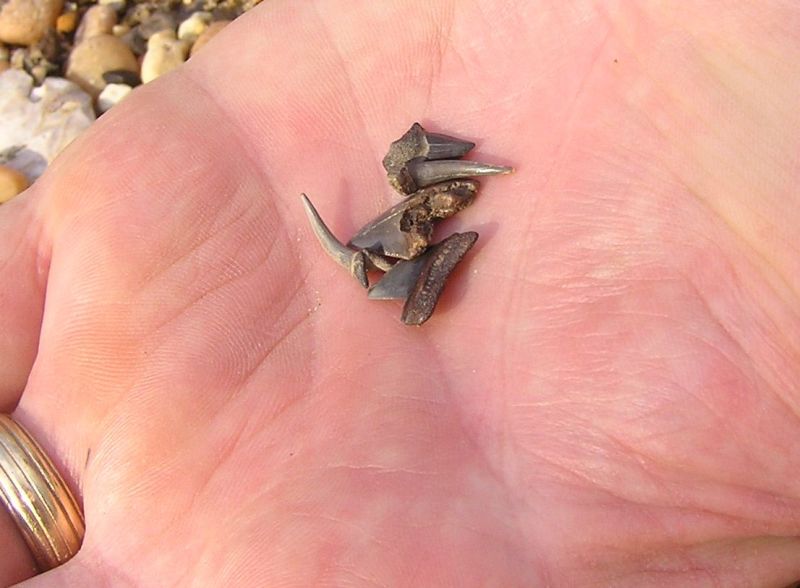
Start 'um early, and they love fossils for life! (Or maybe it's just the rock throwing . . .)
The easy way to hunt fossils . . .
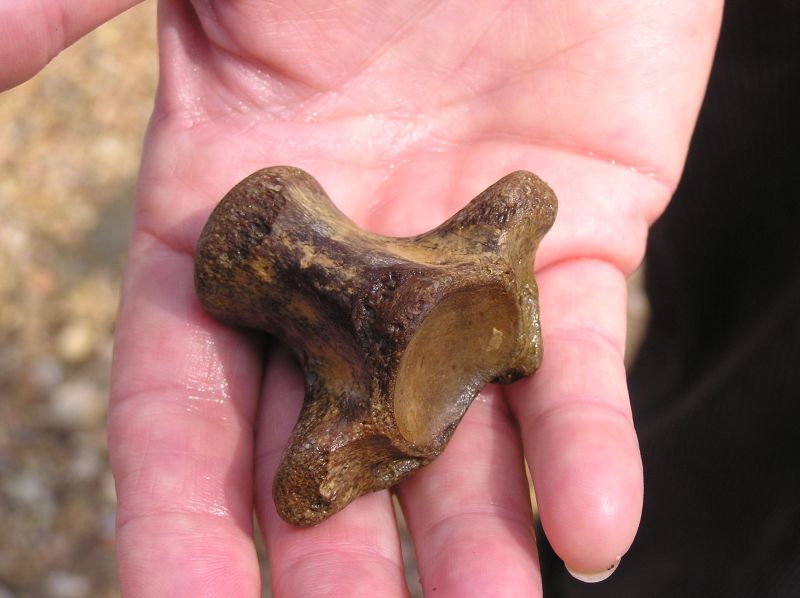
Mosasaur vertebra.
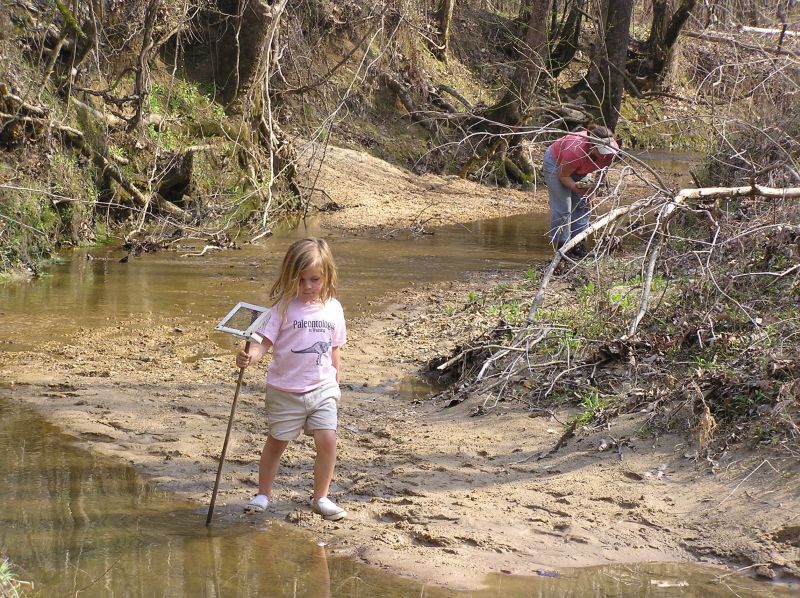
A perfect outing for our future paleontologist!
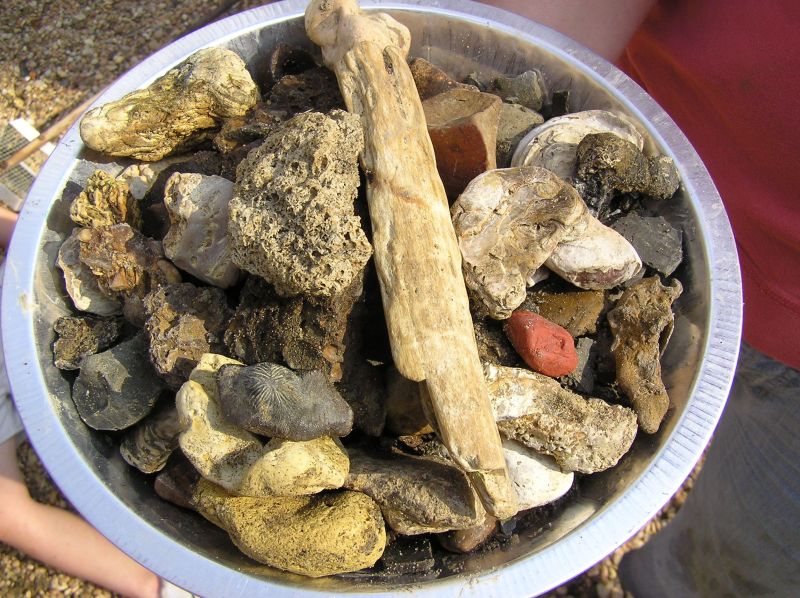
What did you find, young lady? A nice collection of shark teeth, ptychodus teeth, petrified wood, coral, and pretty pebbles.
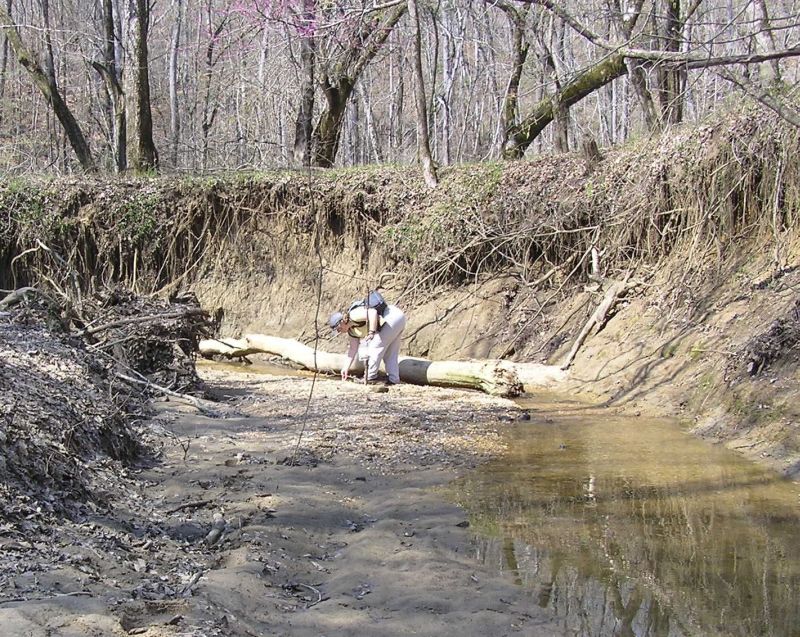
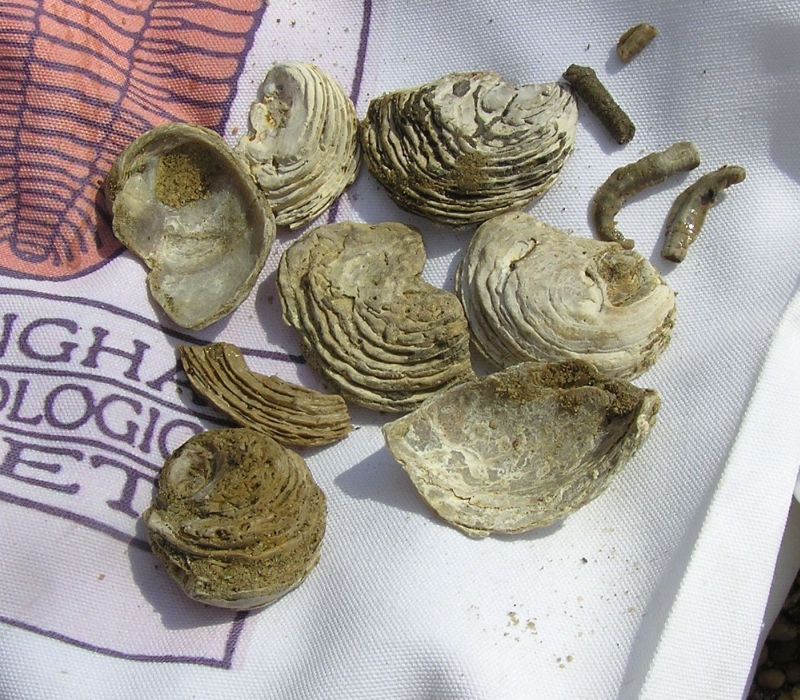
Quite a few oyster shells were found.
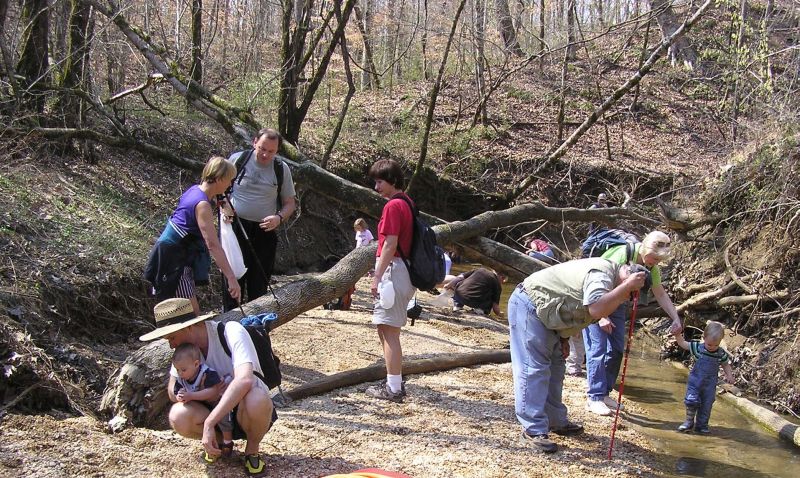 ]
]
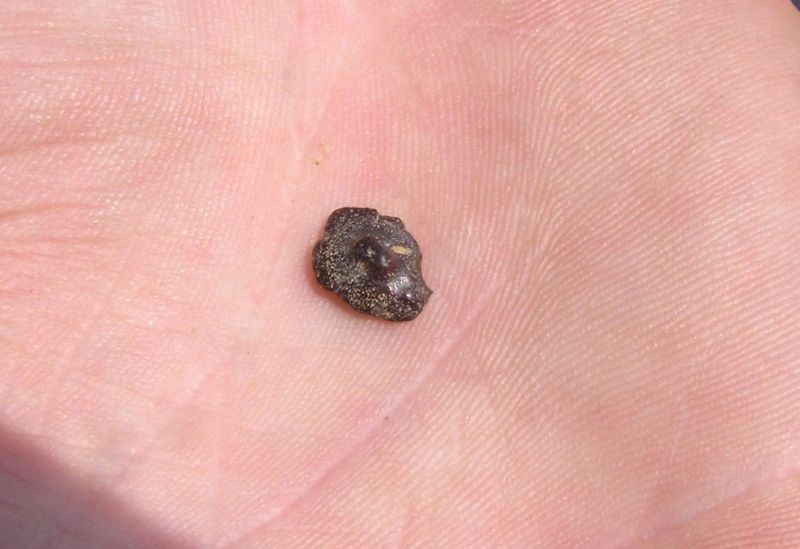
Appears to be a tiny crocodile scute.
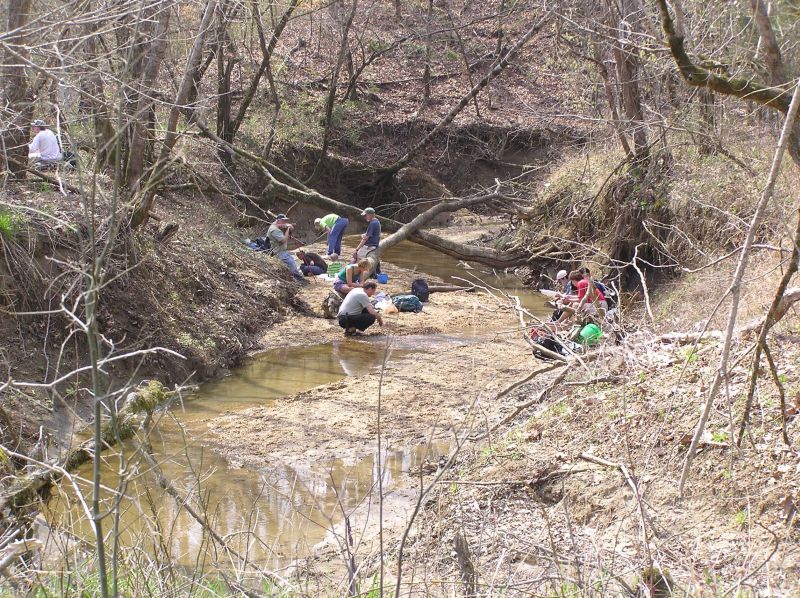
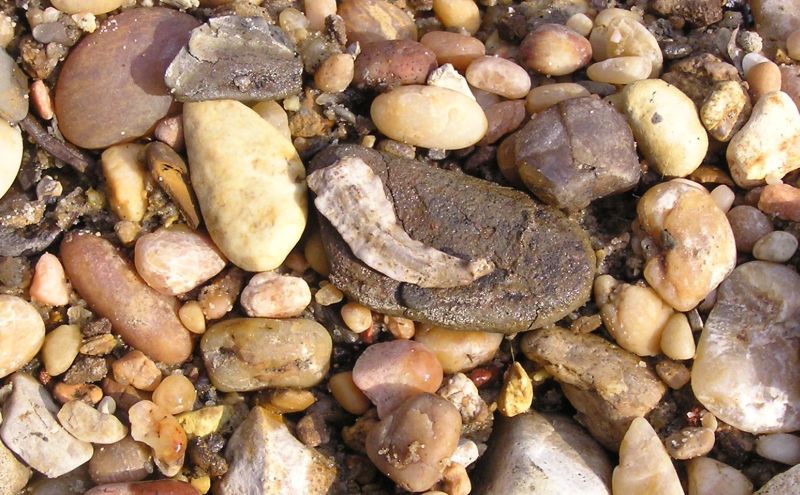
Nicely preserved worm tube.
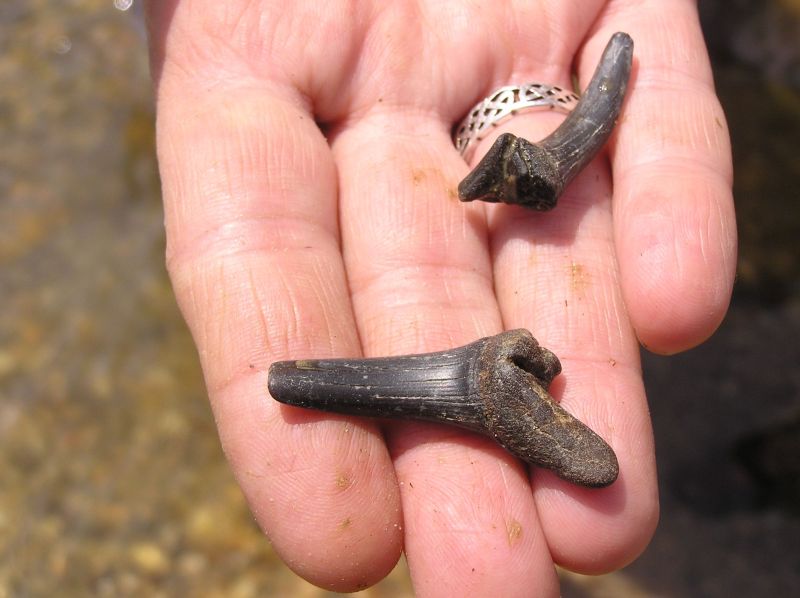
More shark teeth.
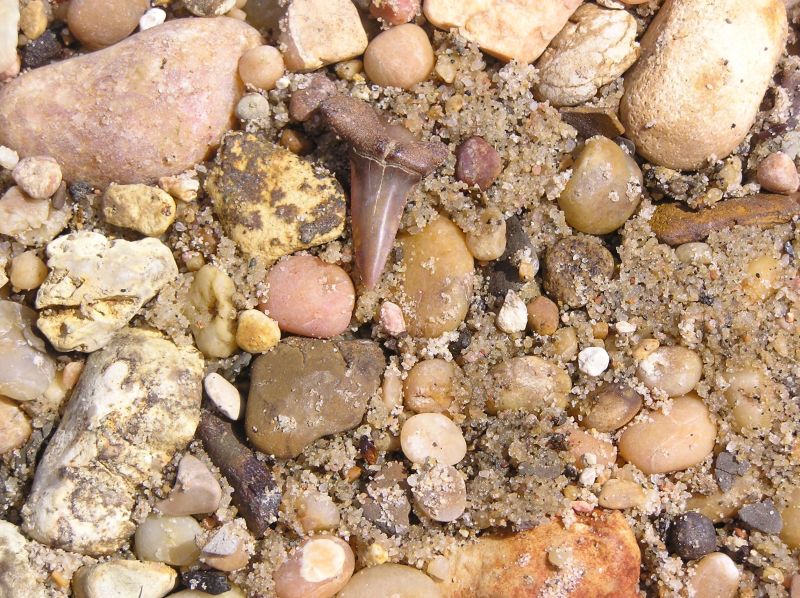
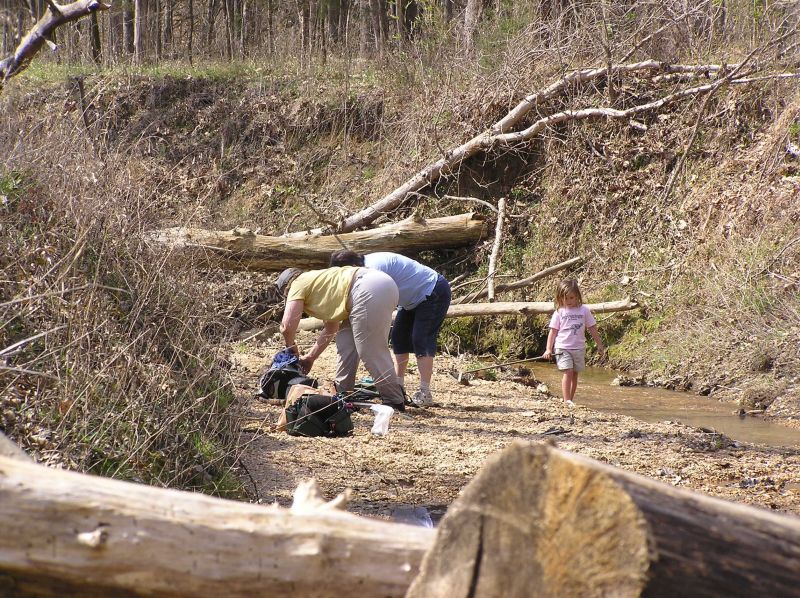
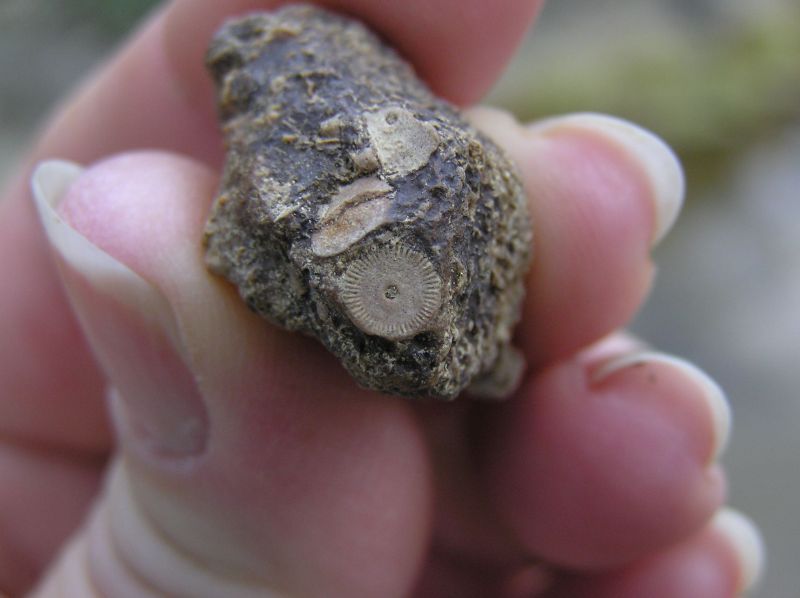
Not sure what this is, any ideas?
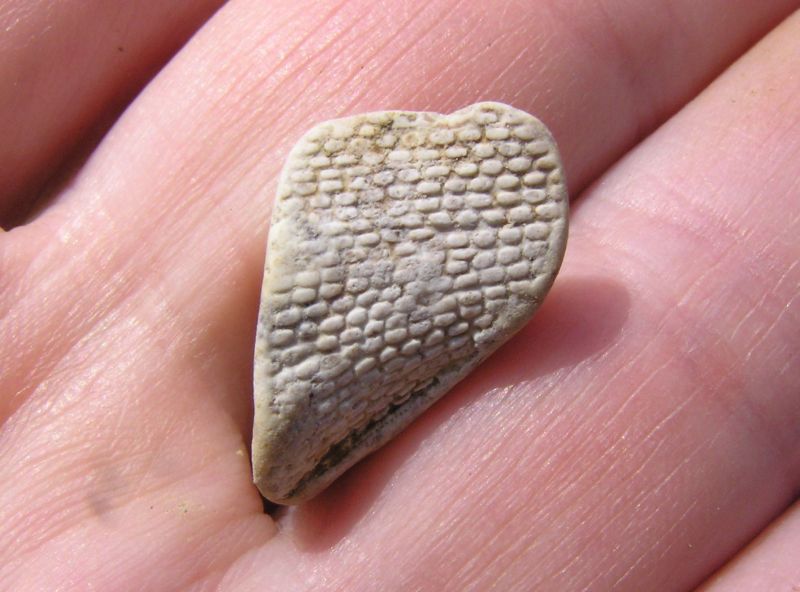
Another unidentified fossil.
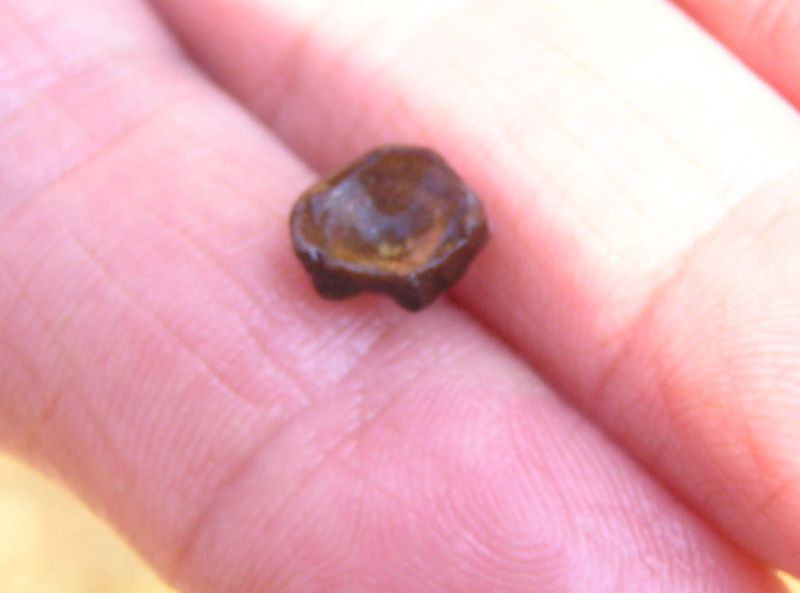
Tiny fish vertebra.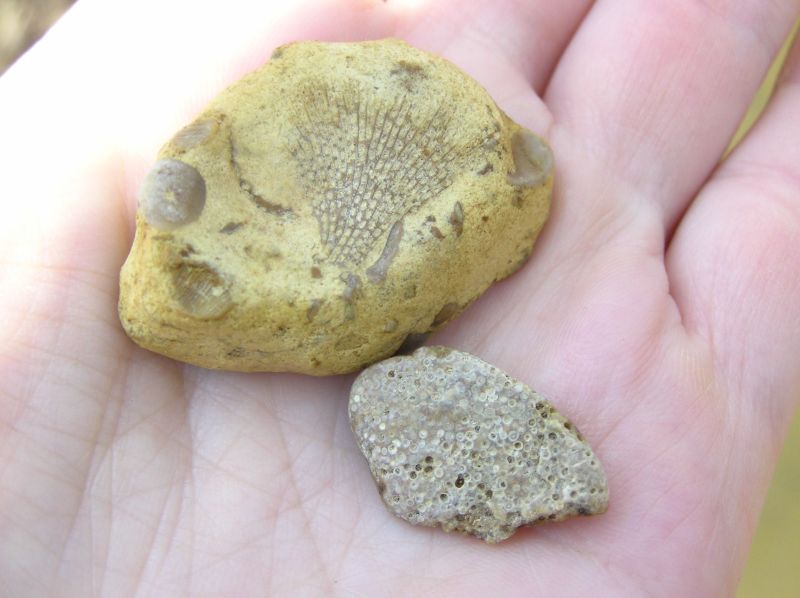
Decisions, decisions.. . . Do we want to collect in those gullies over there, or head out for supper? How about both?
Once again, the word, "intrepid" comes to mind when BPS makes a midwinter trip! With the temps in the upper 30's and low 40's and 15-20 mph winds, it was a toss up as to which trip to this site was the coldest! In spite of the weather, around 23 fossil seekers came for the fun. Our first stop was under sunny skys and slight winds which brought the temperature up to a bearable level. This is a great site, featuring a prehistoric coral reef that always has excellent specimens washed out during the previous year. It's always a temptation go after the big boulders, but they're much larger than they look (like iceburgs) so we can only stand and drool and capture them on camera. At the first stop on the lake numerous specimens of blastoids, archimedes, and crinoid stems were found, and a very nice piece of petrified/ permineralized wood. Next we went to the other side of the lake where it was downright windy and bitter cold. More crinoid stems, straight cephalapods, and some unknown specimens were collected as well as great slabs of fossil hash. These make great teaching tools as well as attractive showpieces. We were also treated to the sight of Bill "walking on water!" Next we stopped at a roadcut which yielded a few more nice specimens, and a lot more icy wind. After one last site check, hunger was the issue, so most of the group organized to follow Greg, who always seems to know the best places to chow down, to a long enjoyable evening meal at a "secret" local steak house, After a great time of good food, rehashing the day and catching up, tired BPS members headed home.
--Edited by Vicki Lais
(Photos courtesy Jan Novak, Bill Fowler, Chris Lais, & Vicki Lais)
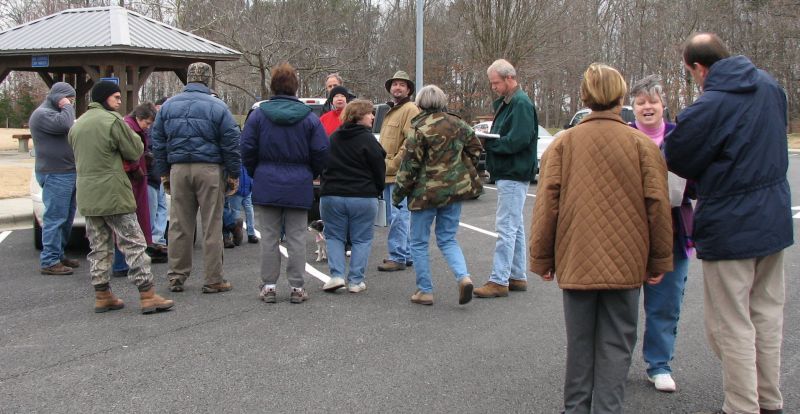
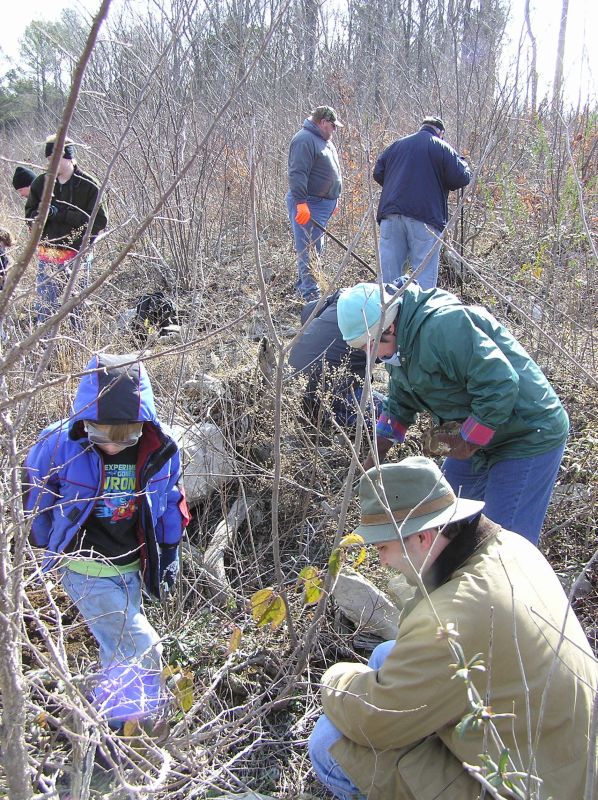
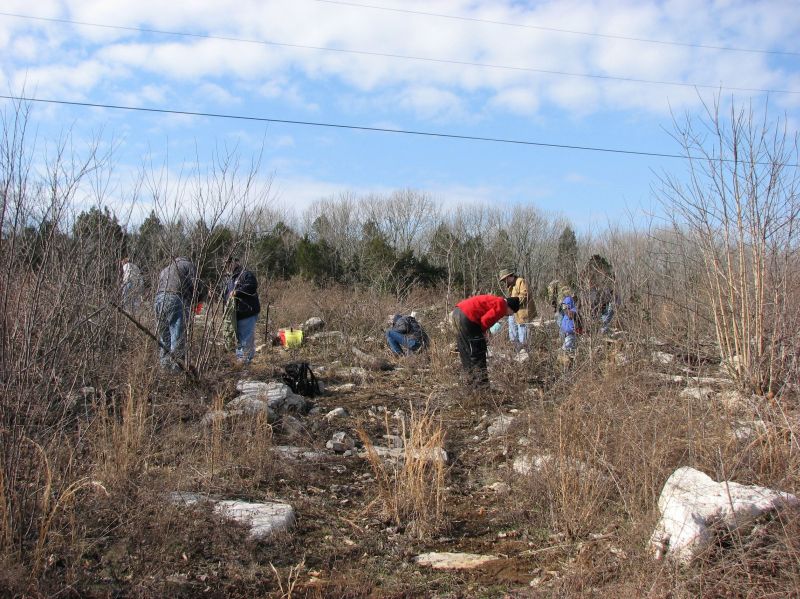
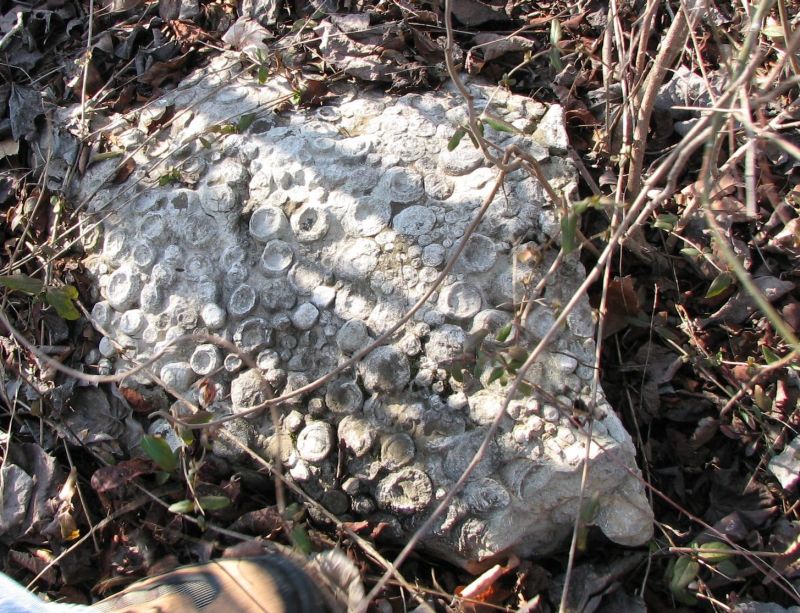
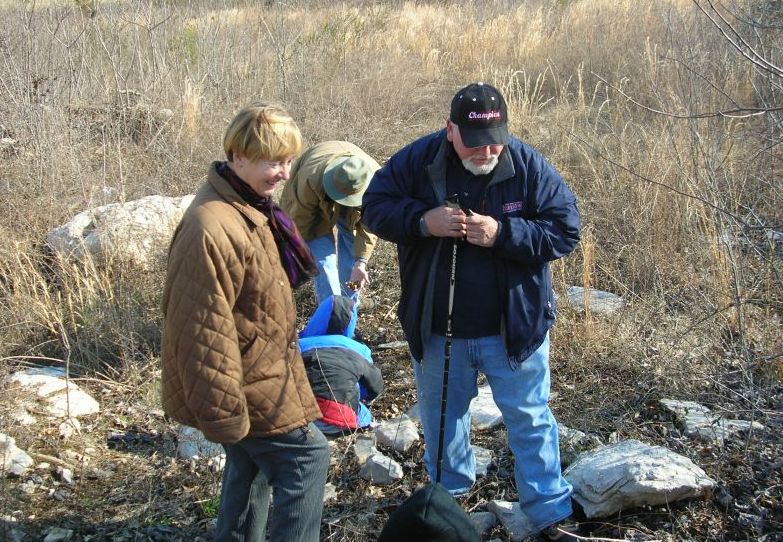
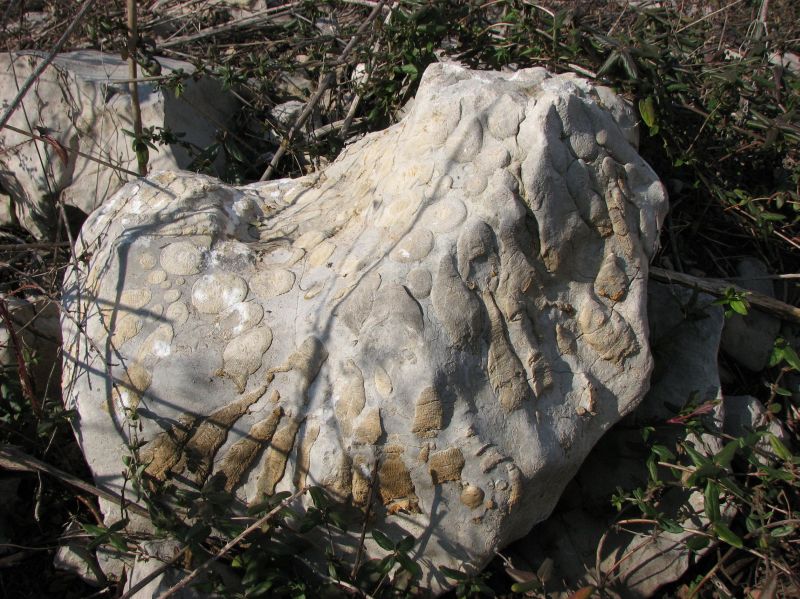
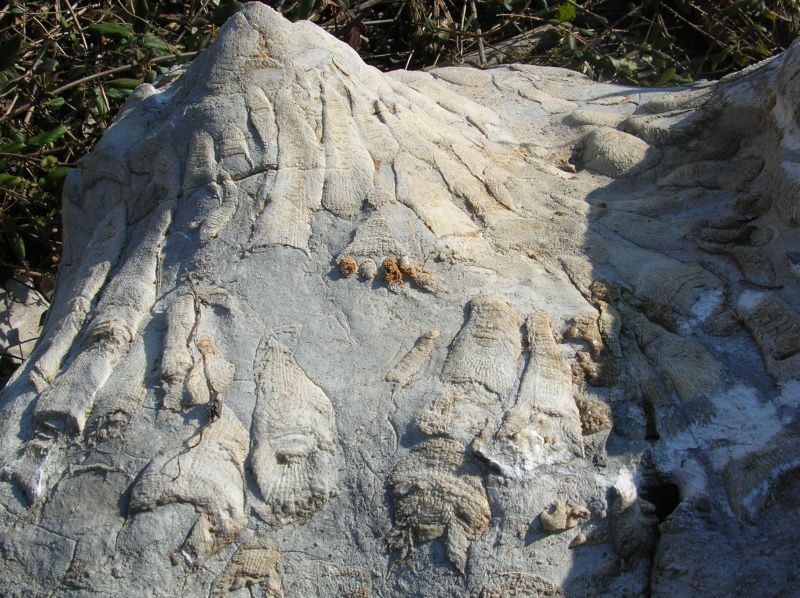
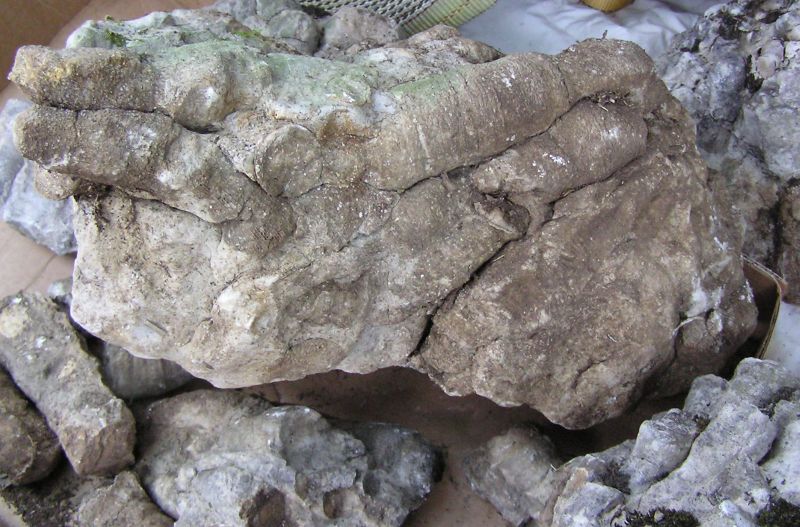
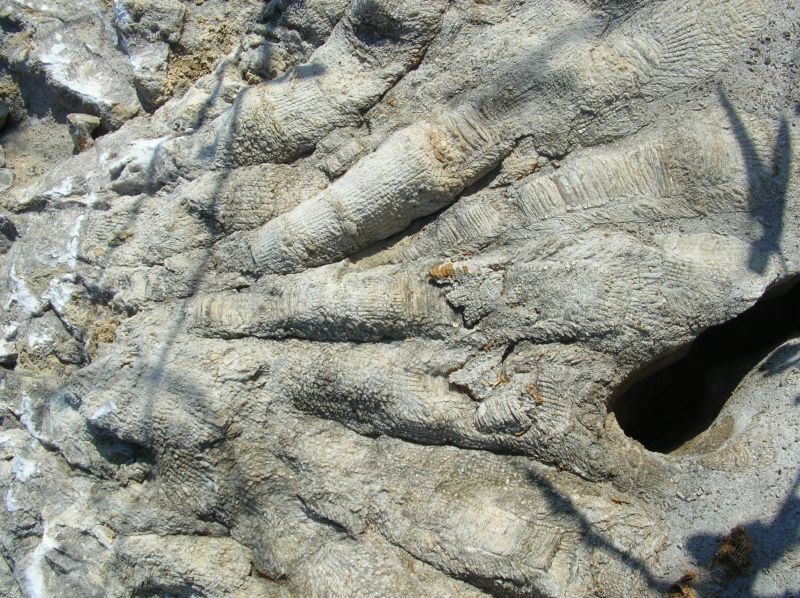
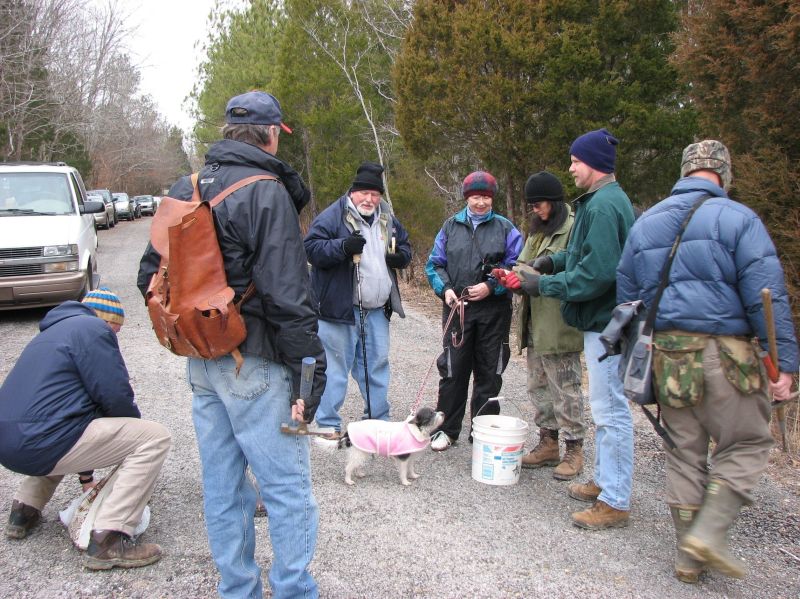
On to the next stop, where we were given an overview of the collecting area.
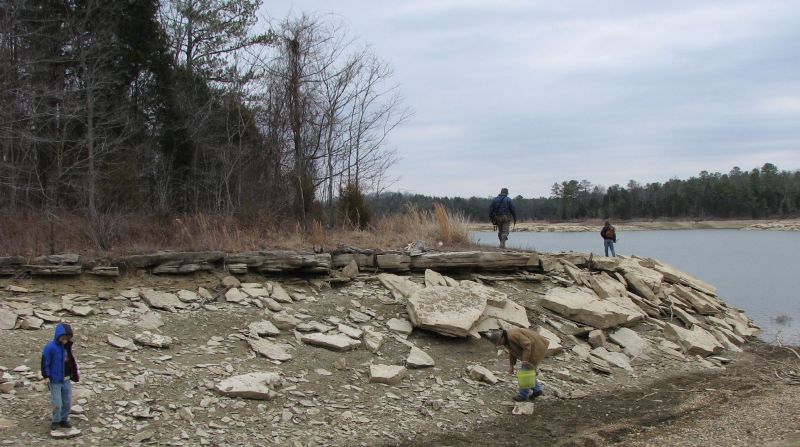
Shoreline of the lake, water is way down in winter.
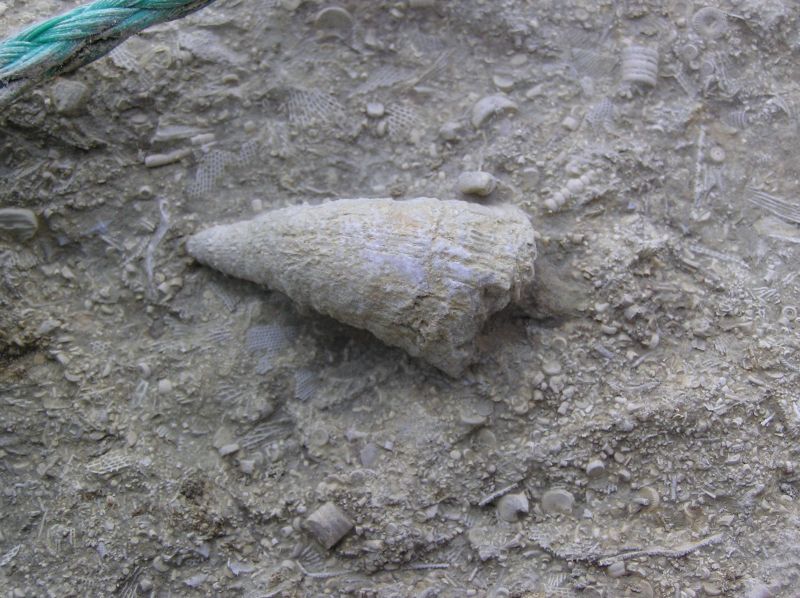
Horned coral.
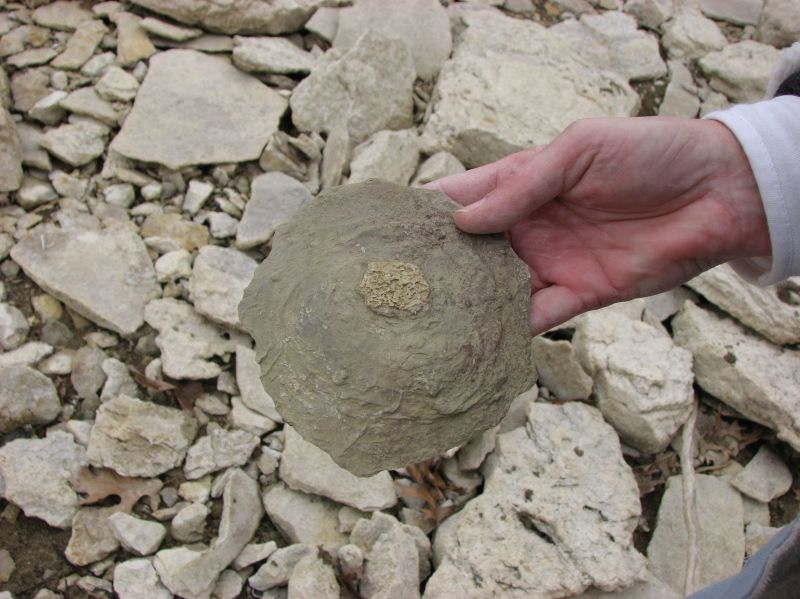
A sponge?
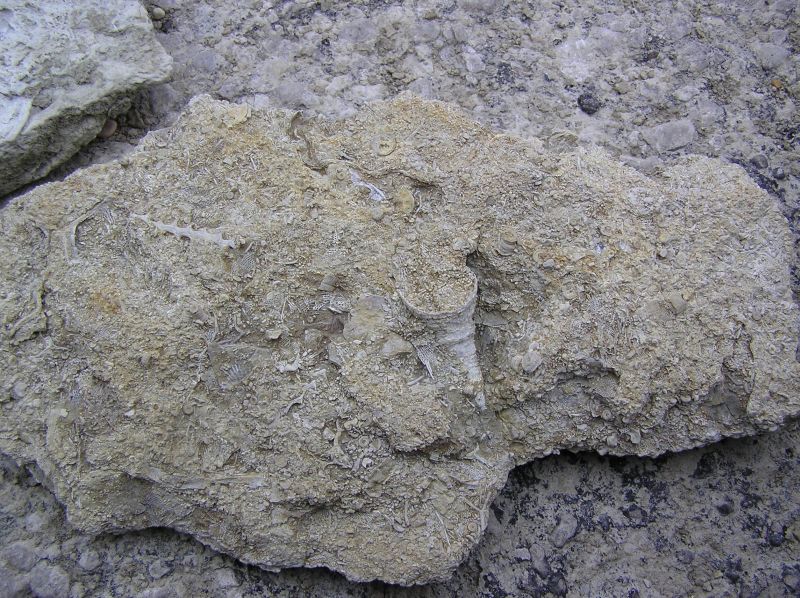
Horned coral.
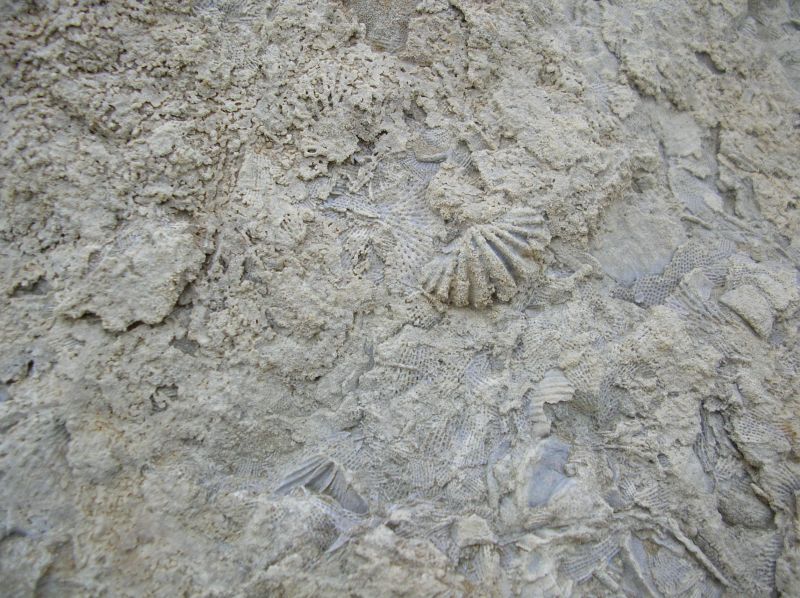
Nice brachiopod.
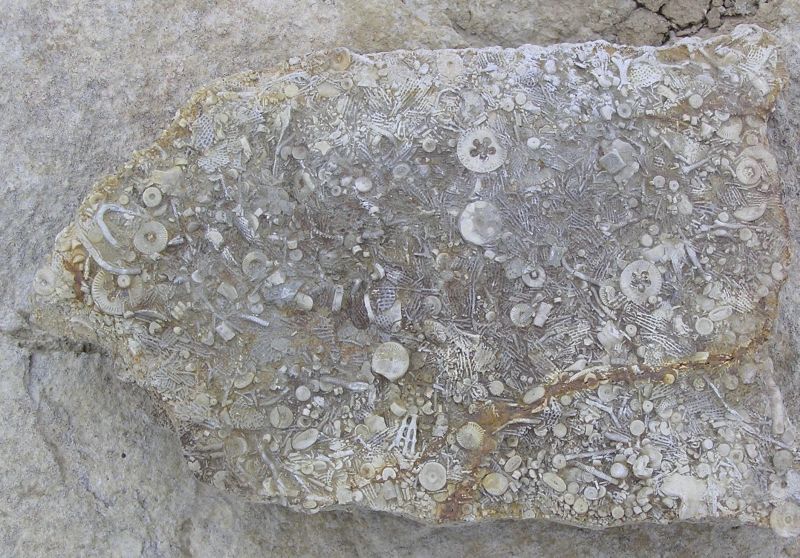
Most rocks in the area consist of numerous small fragments of fossils. Most visible on this specimen are crinoid stems and bryozoan (or the netting material from archimedes.)
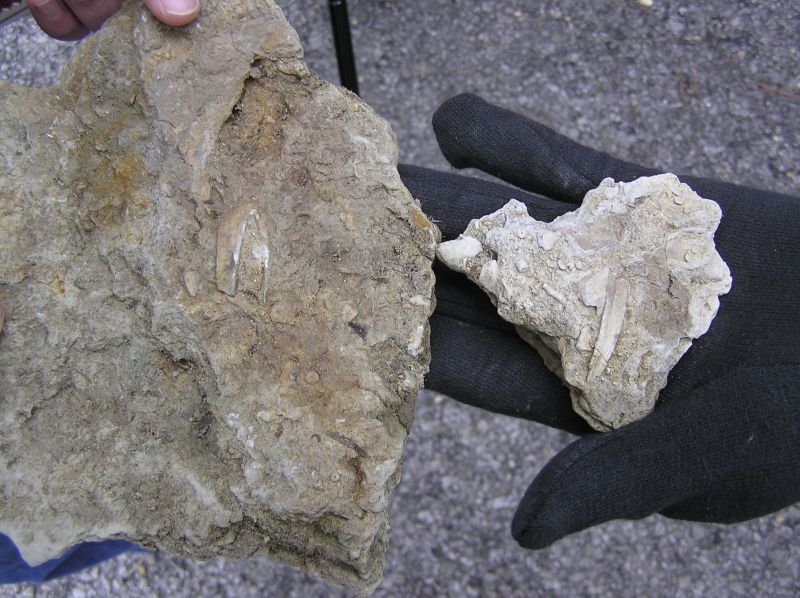
Parts of very large, but broken, blastiods.
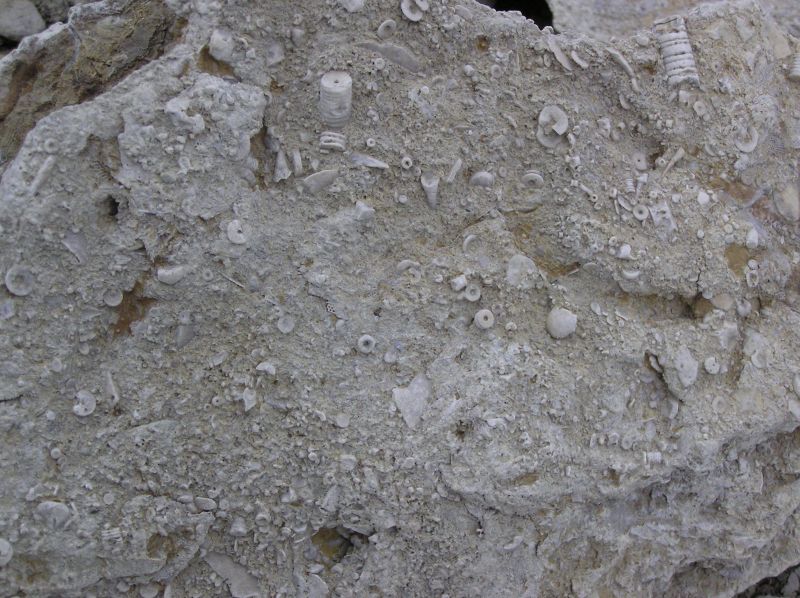
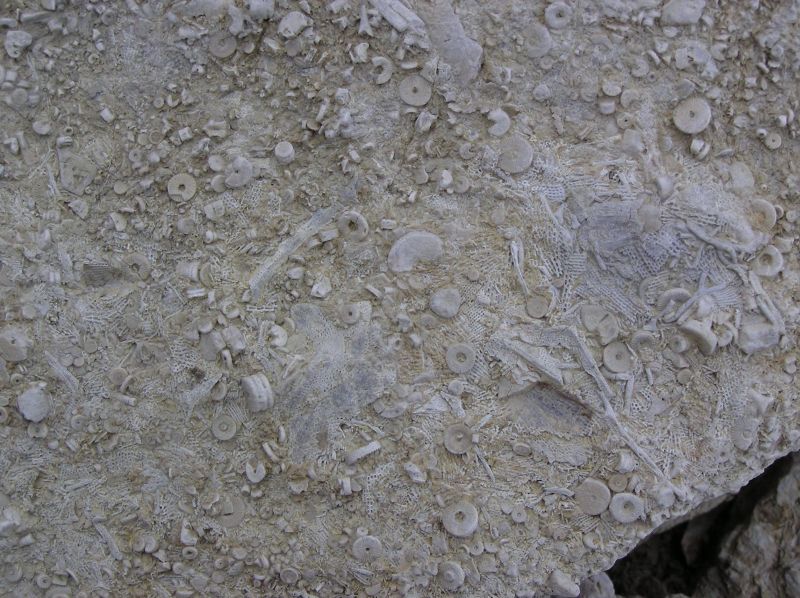
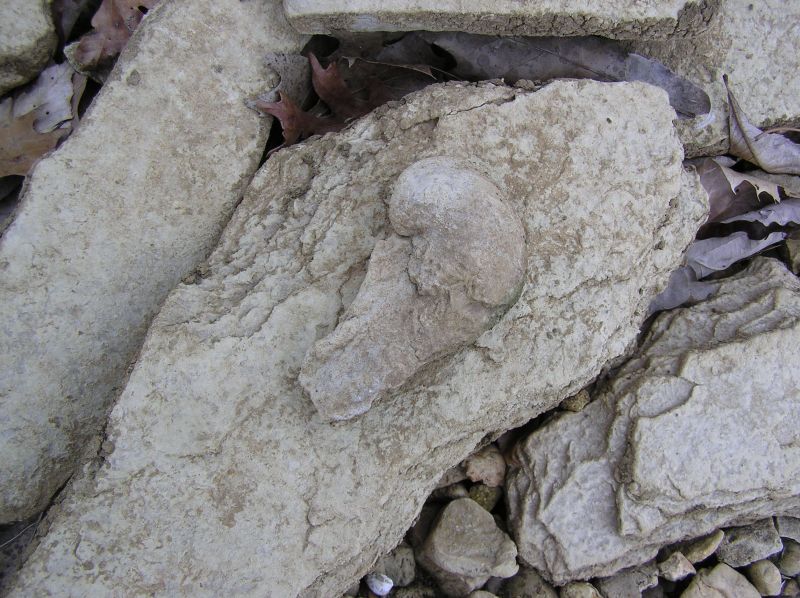
Tiny gastropod.
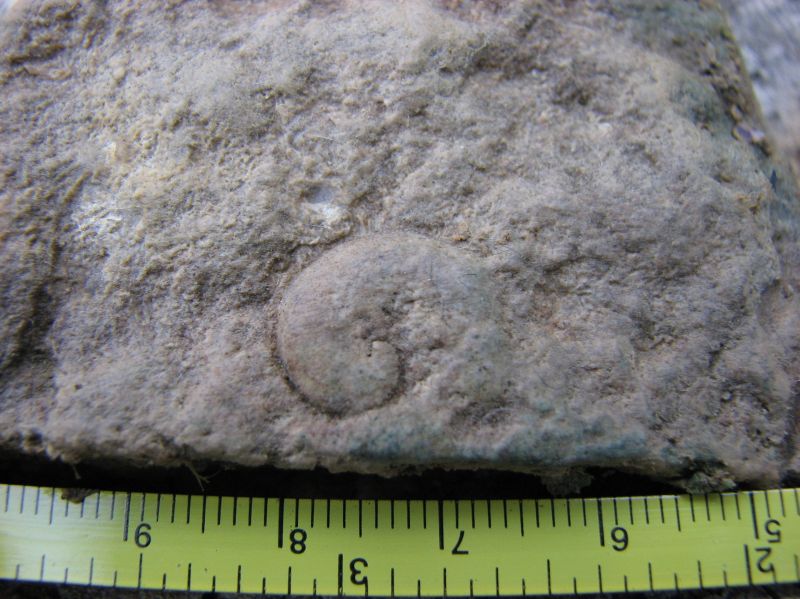
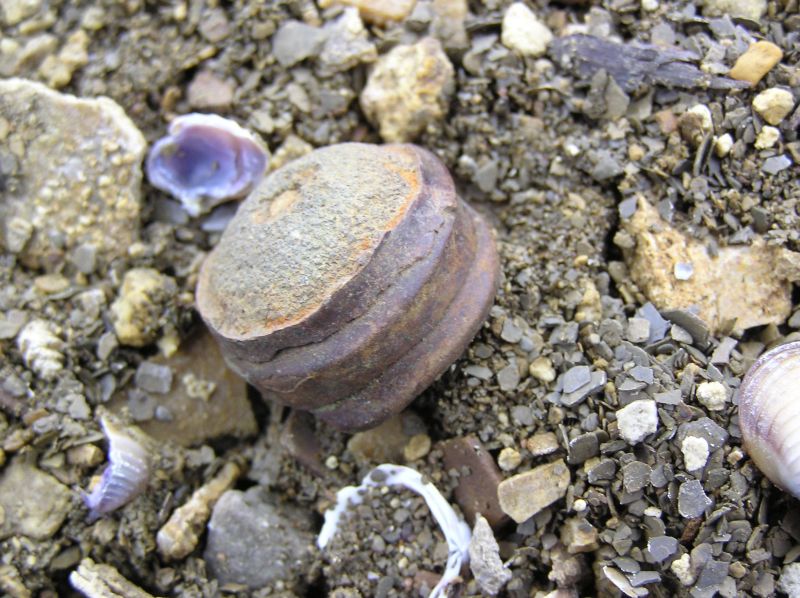
Unknown round fossil.
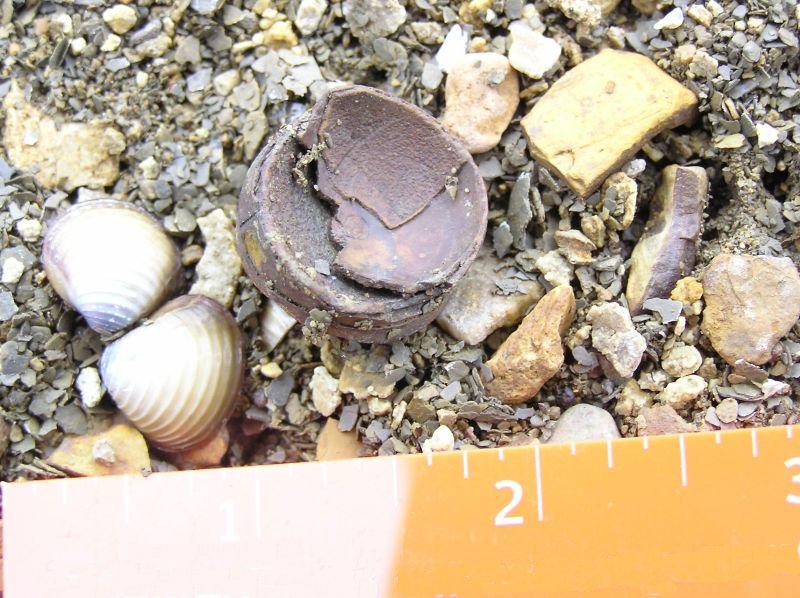
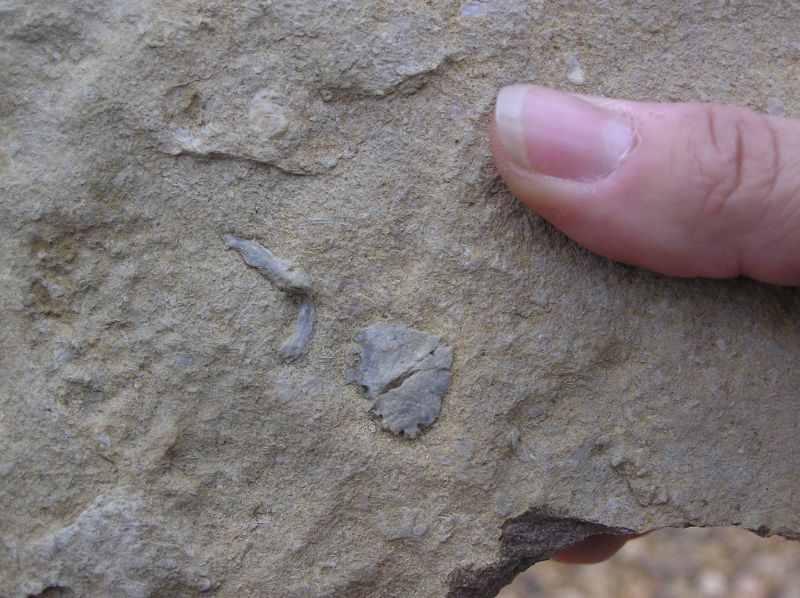
Another unknown fossil.
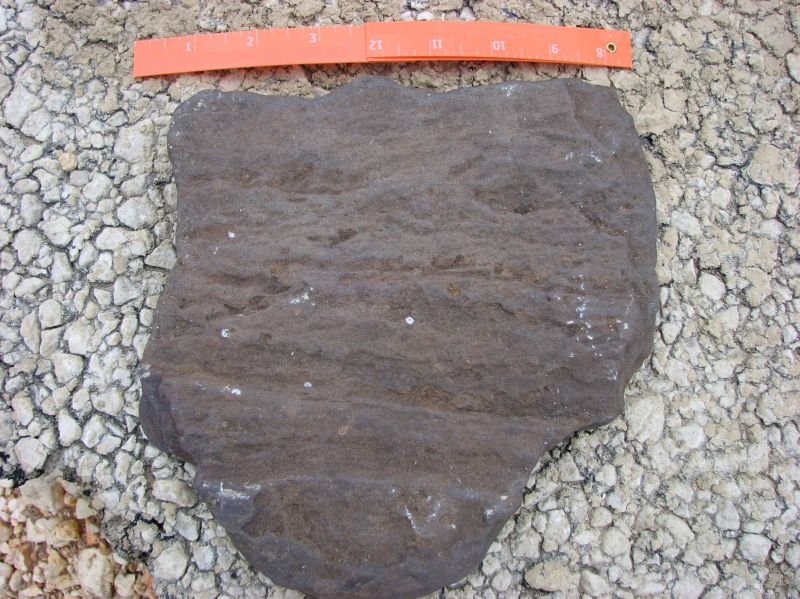
Very nice specimen of petrified/permineralized wood.
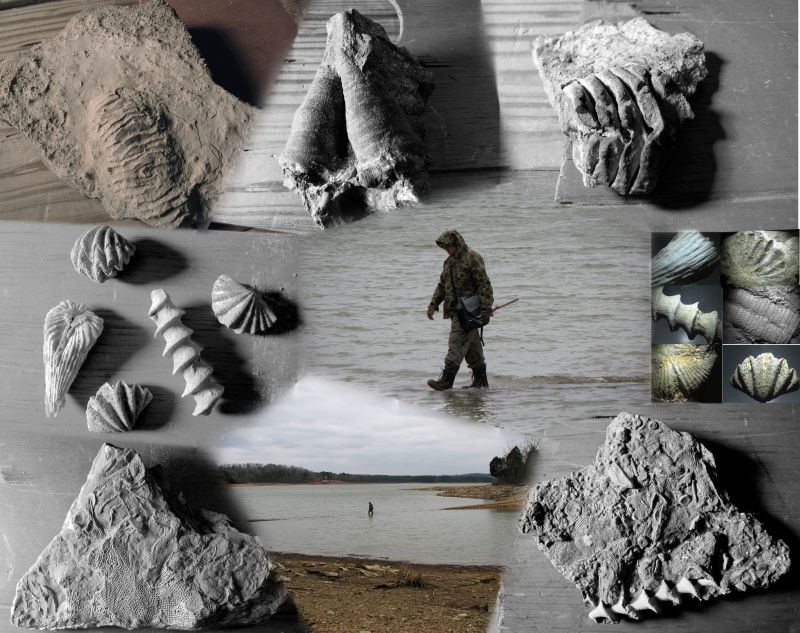
How'd he do that?? Bill has found several nice specimens. Click, then click again for larger image.
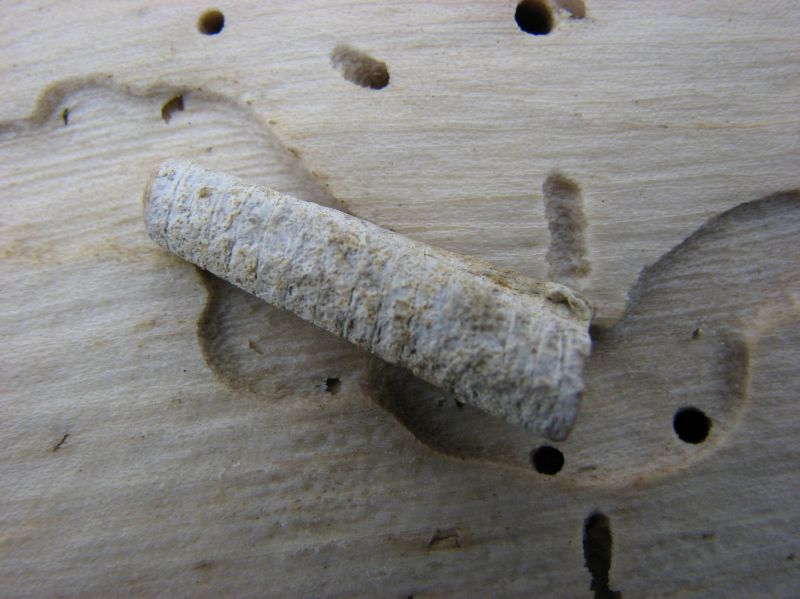
Nice cephalopod.
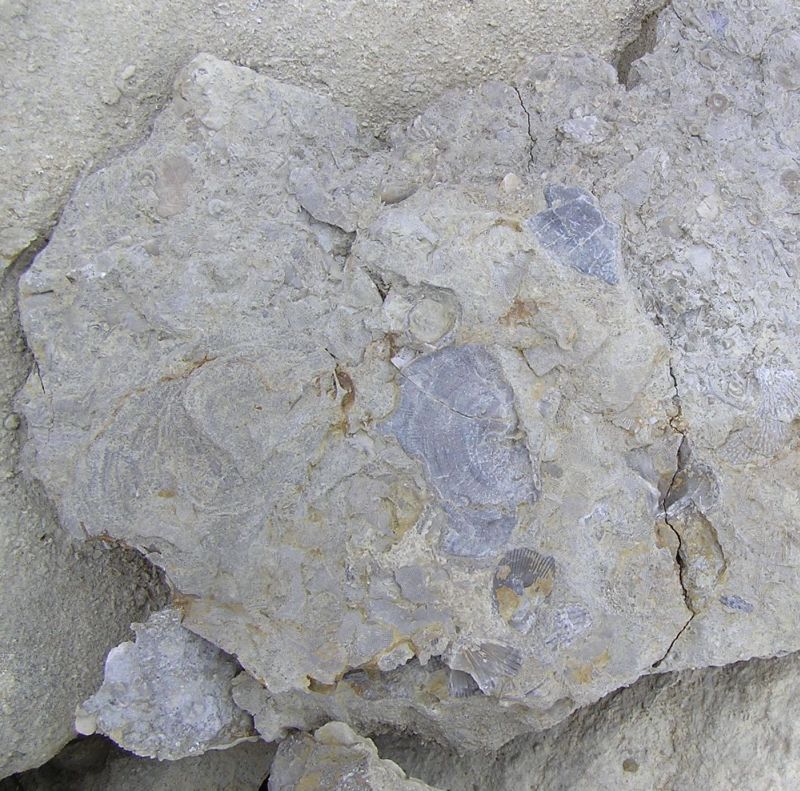
Brachiopods.
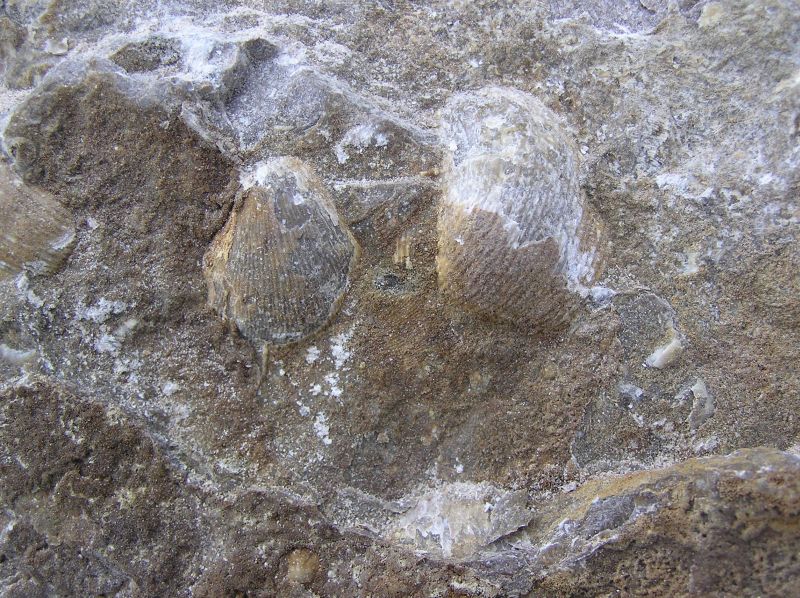
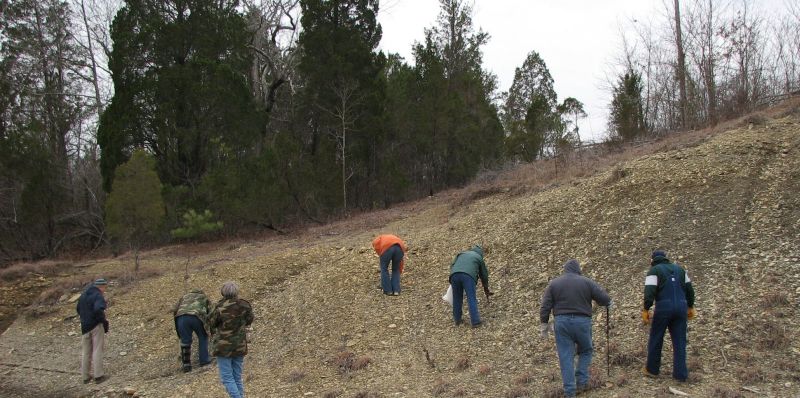
After the lake, we collected at a nearby roadcut.
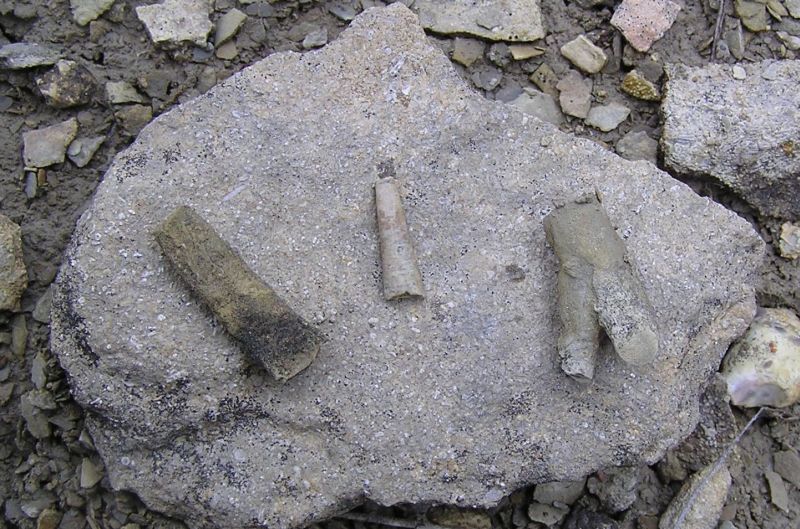
Numerous specimens of burrow casts were found, and also a few straight cephalopod's (in middle).
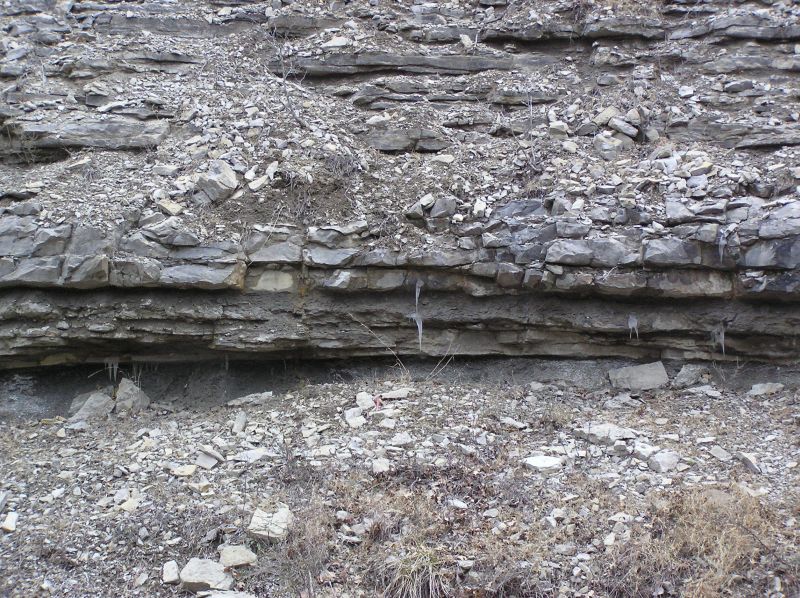
At the last stop of the day, geologic layering is very prominent.
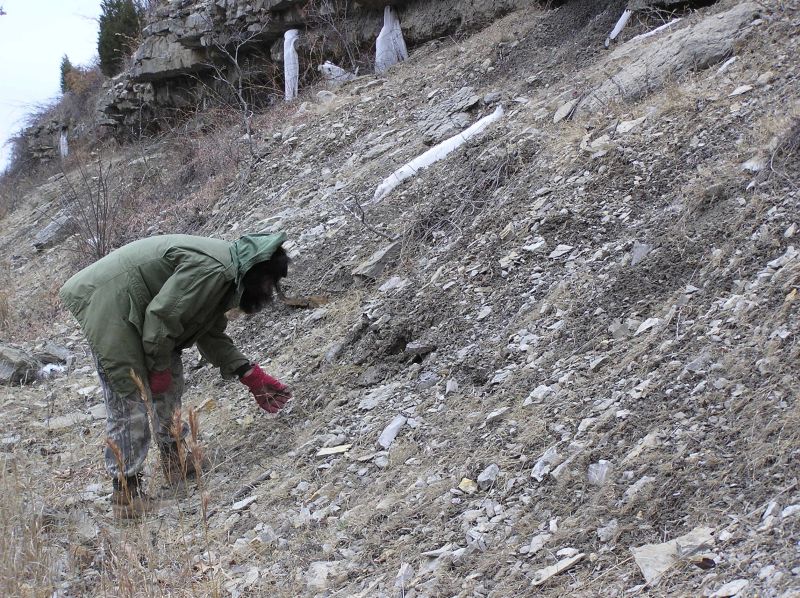
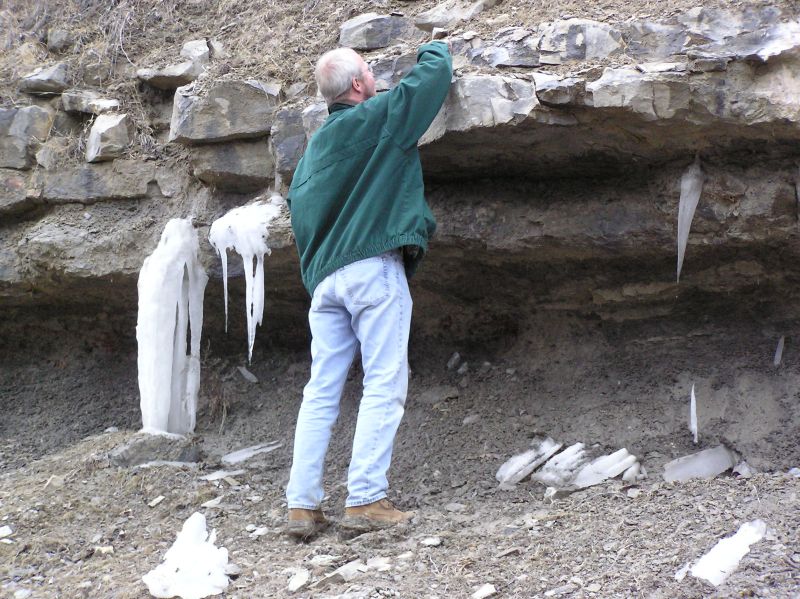
Tall people have a distinct advantage!
Stop 1 was a late Cambrian site, Dresdachian stage, (515 MYA) which yielded a number of Brooksella.
Stop 2 was in the Albertan stage approx 530MYA. Thanks to Capt. Steve, a short boat trip to the collecting site yielded some good specimens of trilobites which appear to be Kingstonia, Densonella, Norwoodella, and Cossella.
The evening of the first day was spent at a local Seafood house followed by a delightful evening spent at a cabin rented by BPS. We celebrated Jan and Lea Novaks birthdays; Lea baked her own cake, a Czech trilobite cake, which was great. This was followed by much good drink, a spirited backgammon game, Pro football on the big screen TV (yes we were roughing it), more good drink, talk and blues on the radio.
Day 2 was another warm day for January starting with a good and inexpensive breakfast at the local fish camp. There was more fossil hunting on the local beach followed by several hours of splitting shale on another beach which was also fruitful. Later in the afternoon, a number of members decided to scout some new sites which we were told about by a local fossil hunter we met at our first stop.
(Photos courtesy Bill Fowler, Steve Corvin, and Vicki Lais)
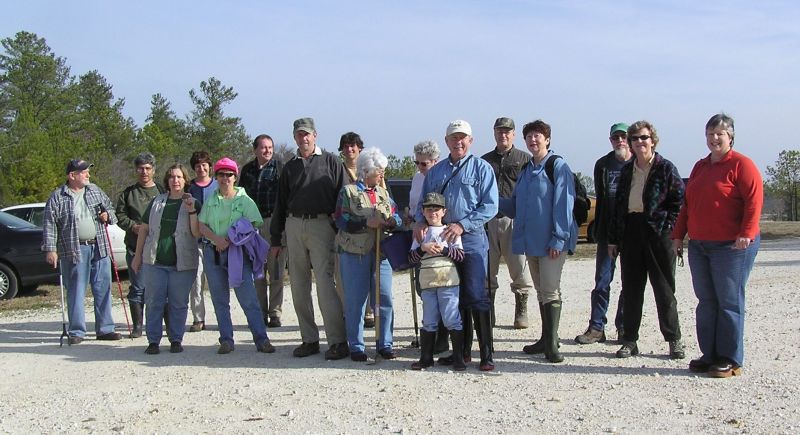
Everyone is anticipating a great day of collecting!
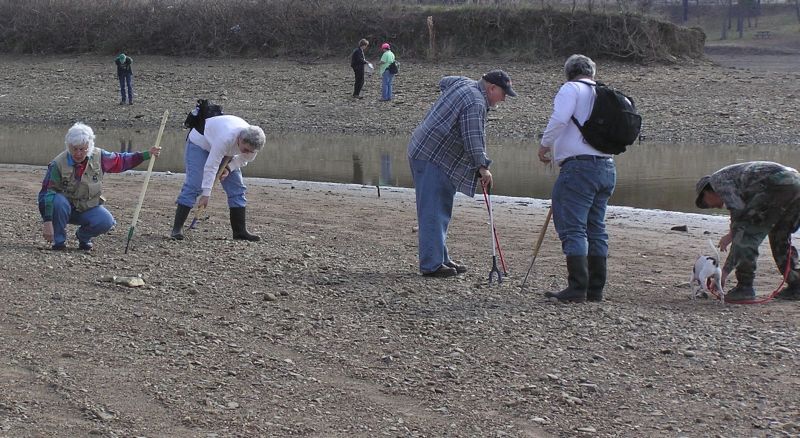
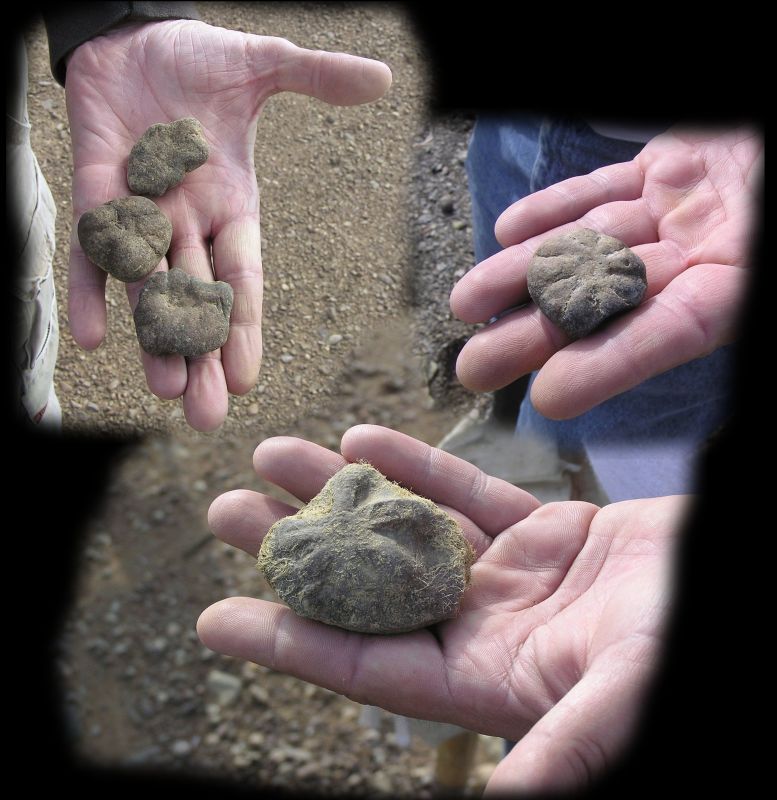
Samples of the nice brooksellas that were found.
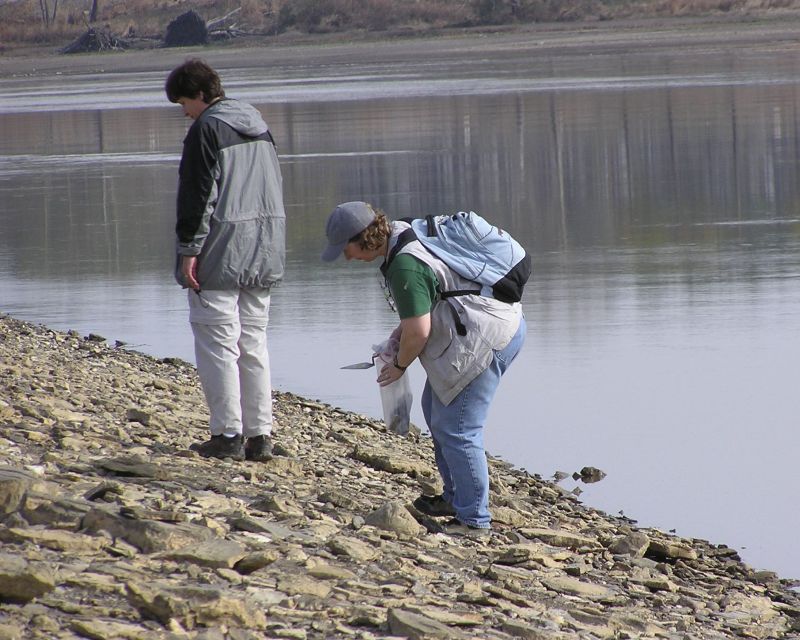
Lea and Claire surveying the area.
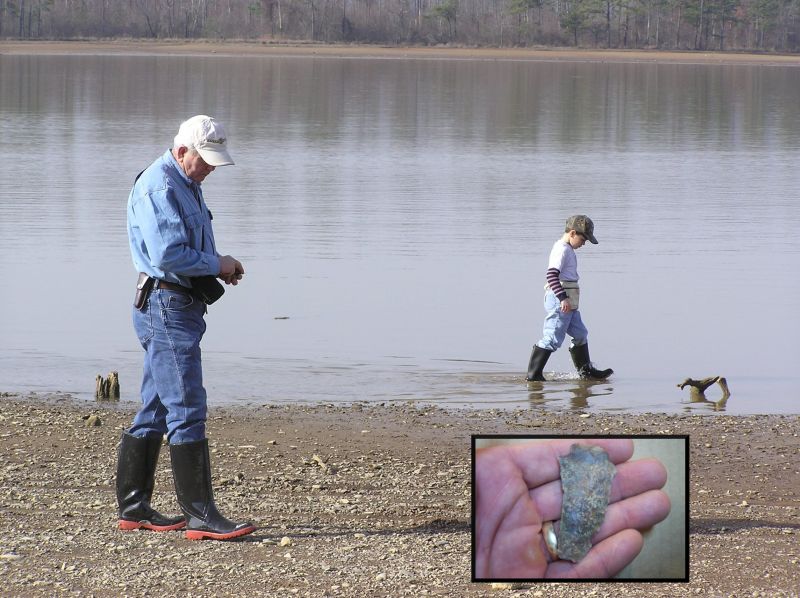
Steve found a nice point in the area.
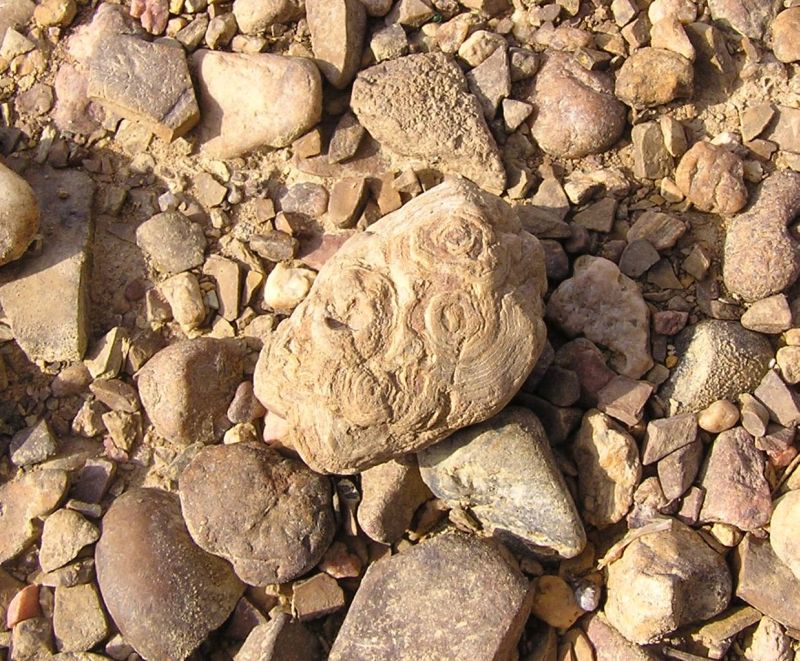
Nice stromatolite found by Vicki.
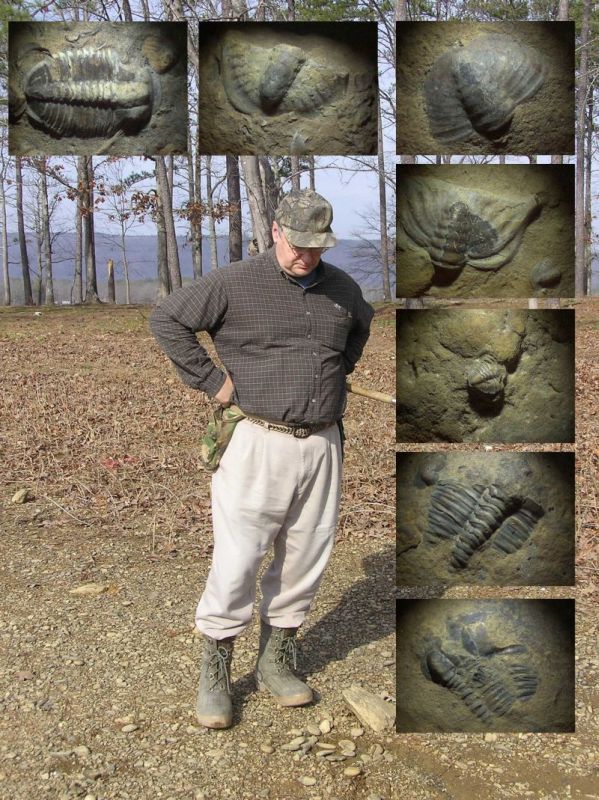
Bill and some of his small trilobite finds under the microscope. Click photo (then click photo) for larger image.
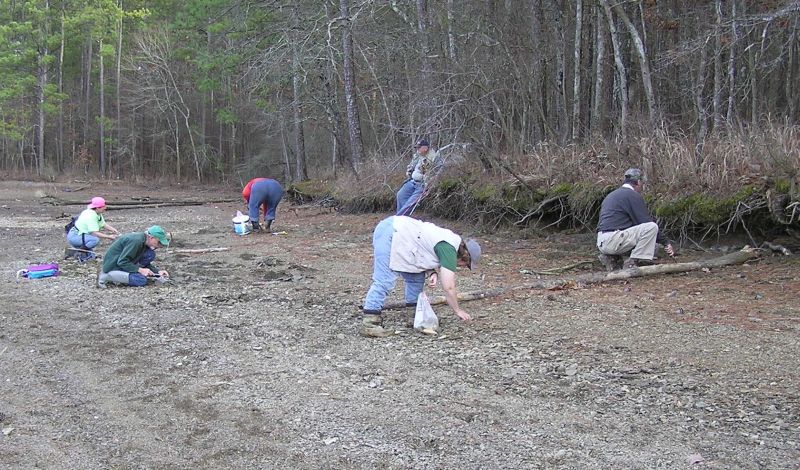
The next site required a short boat trip. The shoreline in this area is composed of deteriorated Conasauga shale.
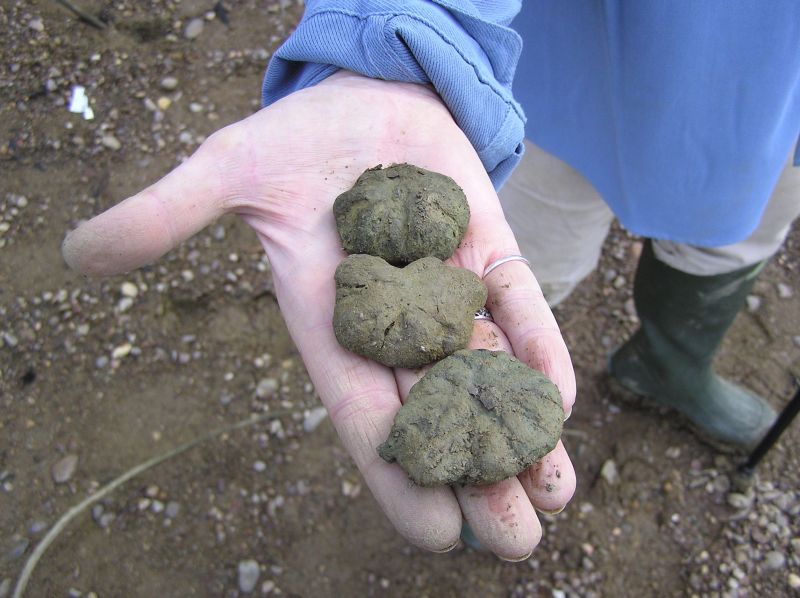
Nancy found some nice (but decidedly muddy!) brooksella.
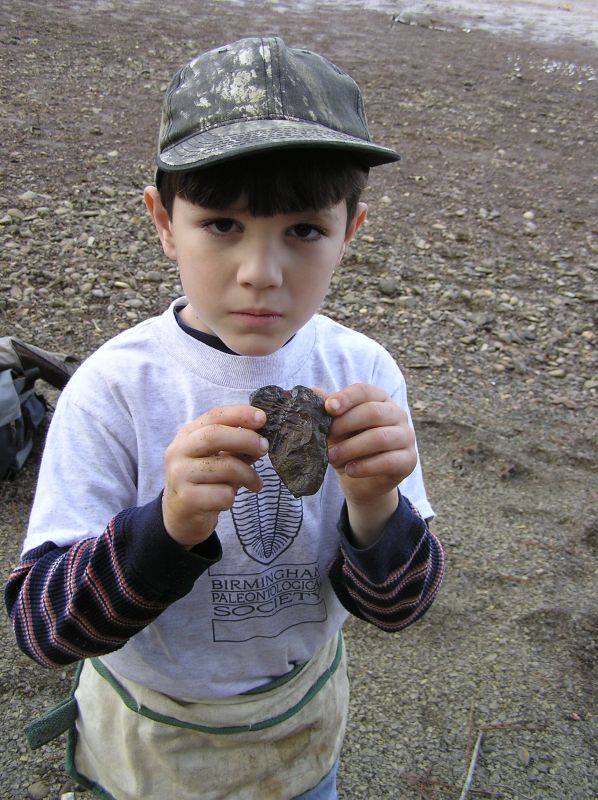
Steven with his trilobite find.
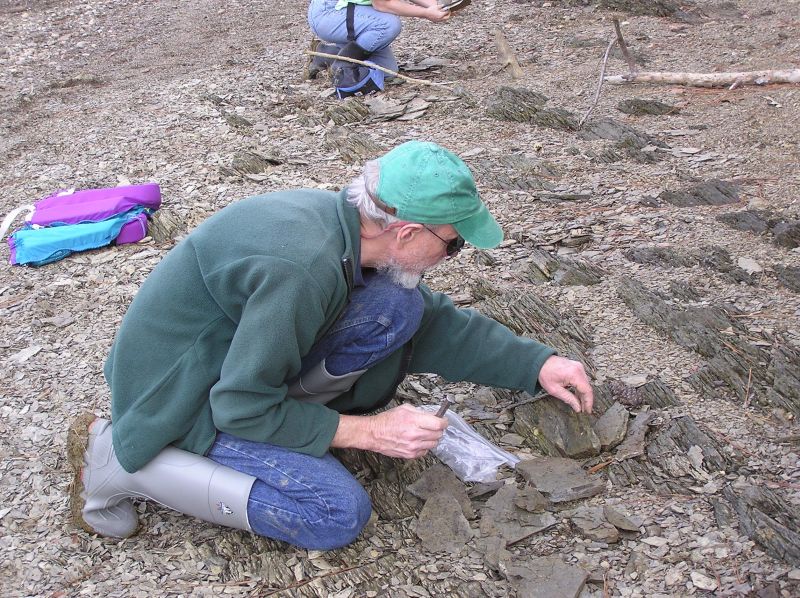
Searching for trilobites in the broken shale.
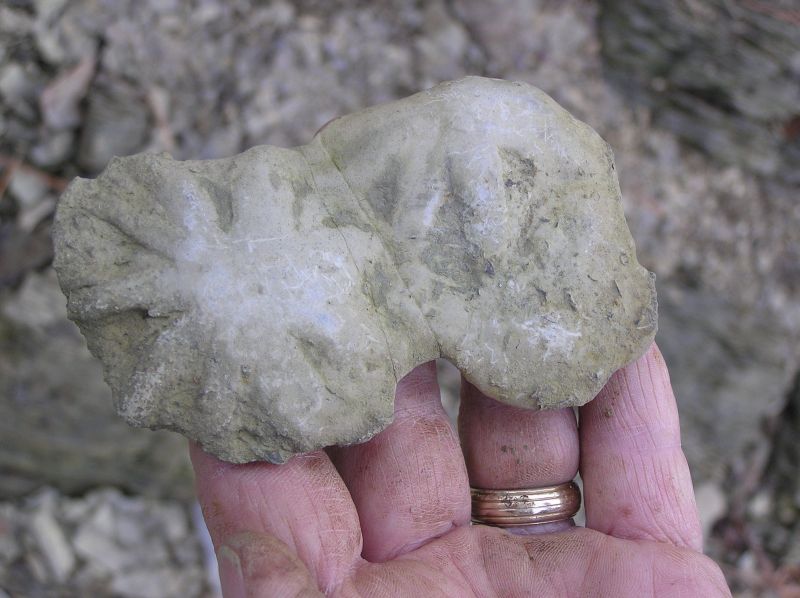
Bob found a double brooksella.
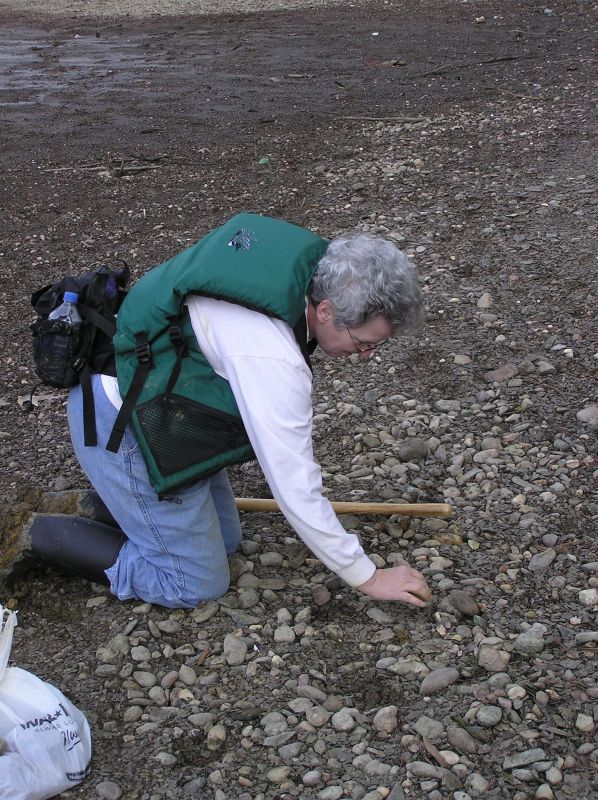
We learned the meaning of "don't leave any rock unturned" today . . .
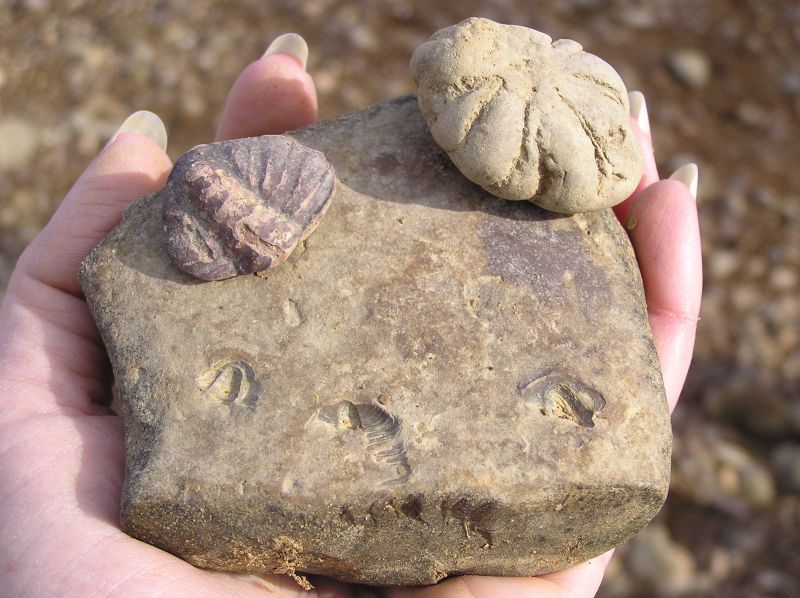
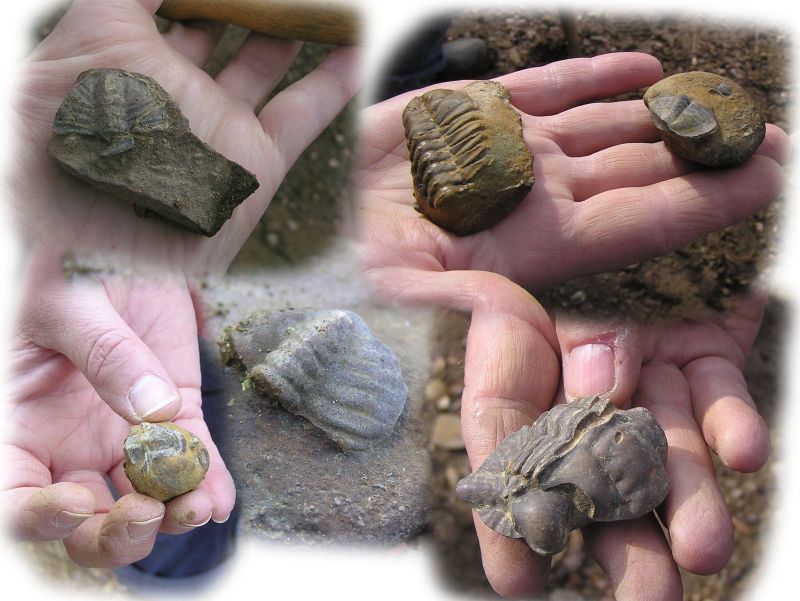
Samples of what was found on day 1.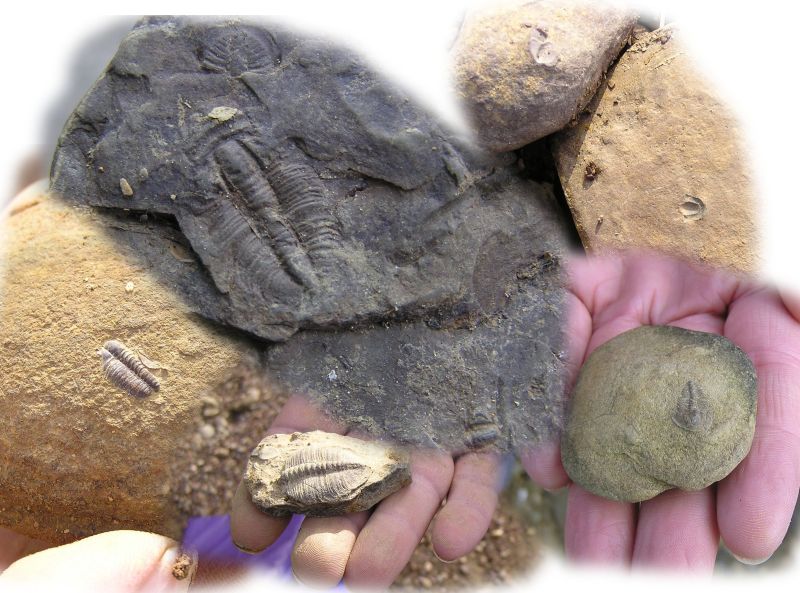
More trilobite specimens from day 1.
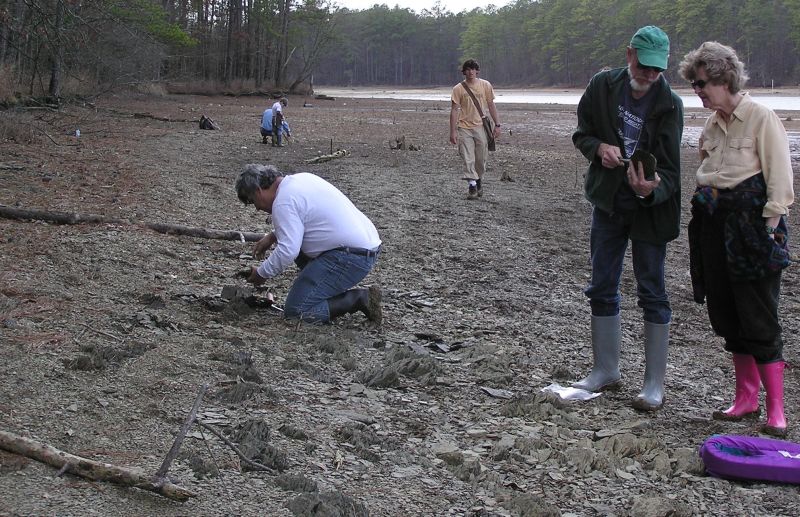
People were scattered all up and down the shoreline.
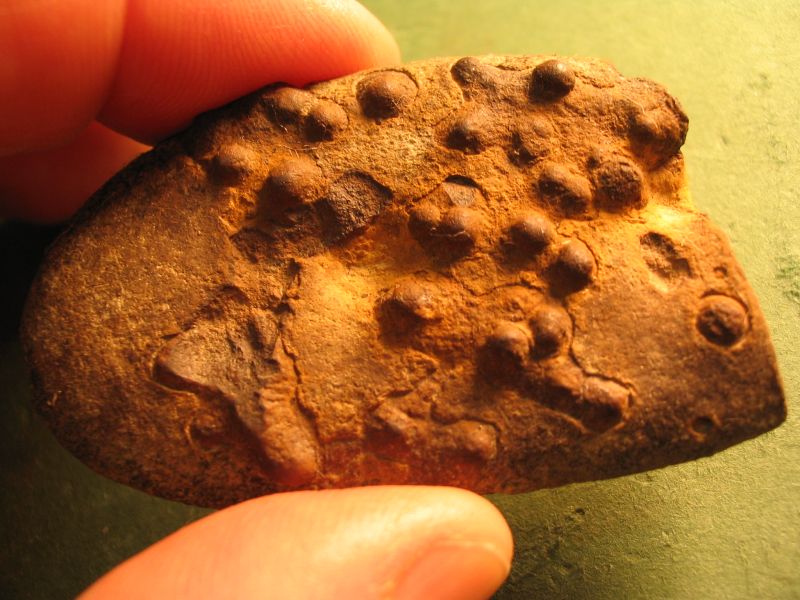
Another find by Bill, shown under the microscope.
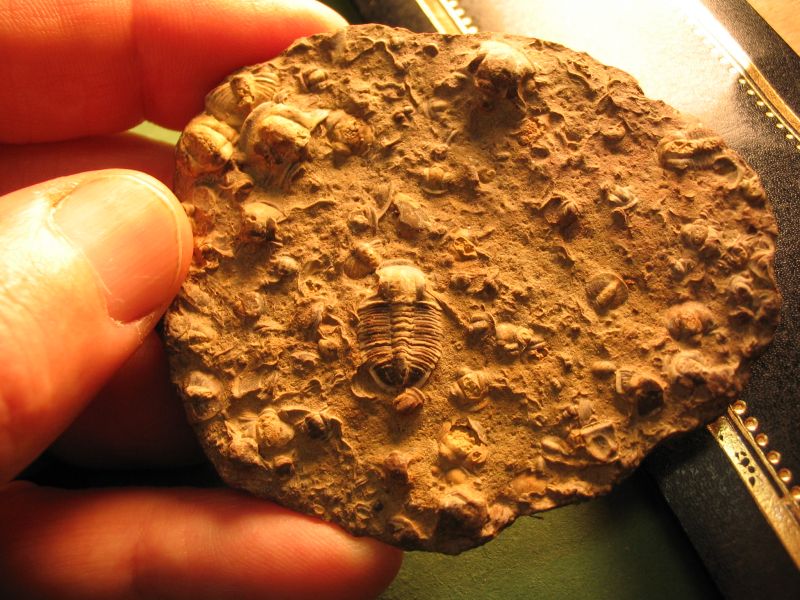
A pebble filled with small trilobites, found by Bill.
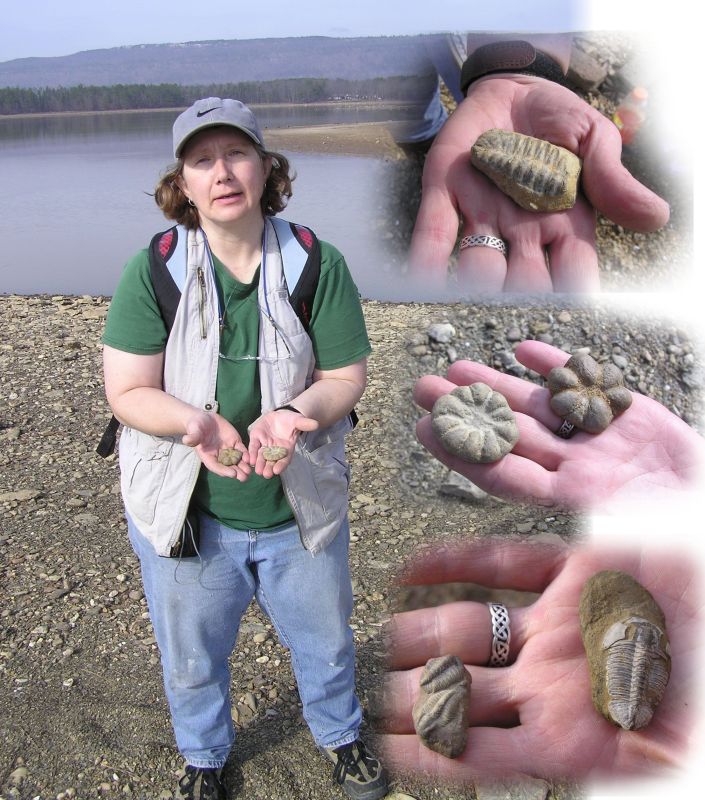
Claire and her best finds of the day - very nice brooksella and trilobites.
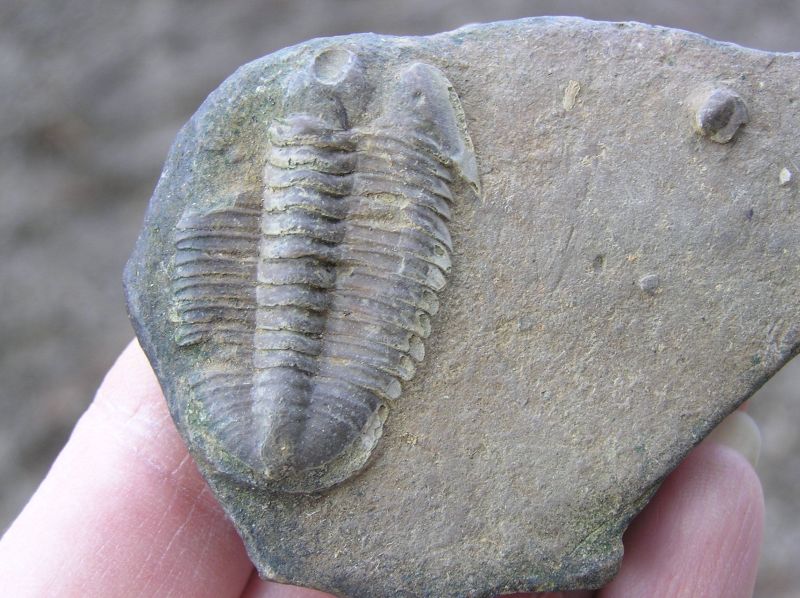
Very nice trilobite found by Bobby.
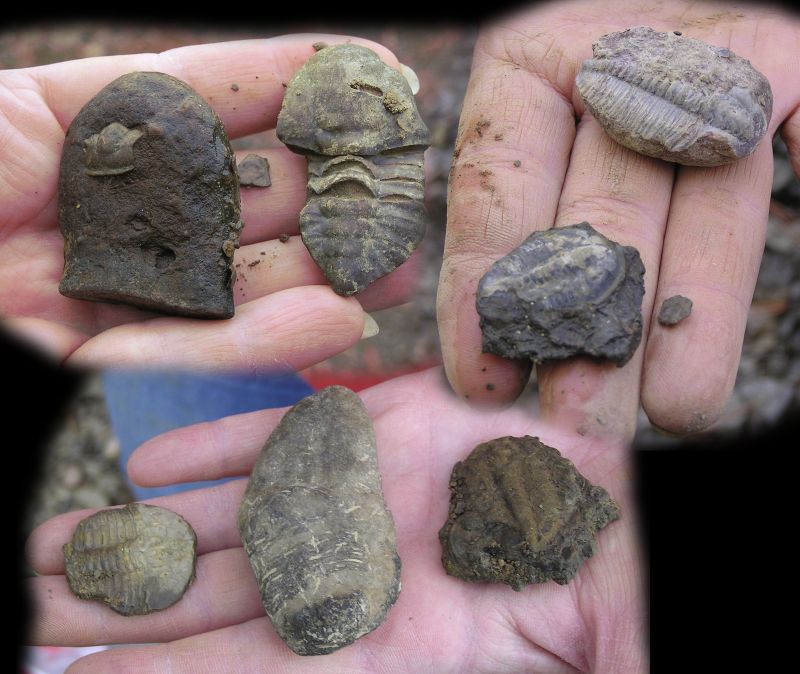
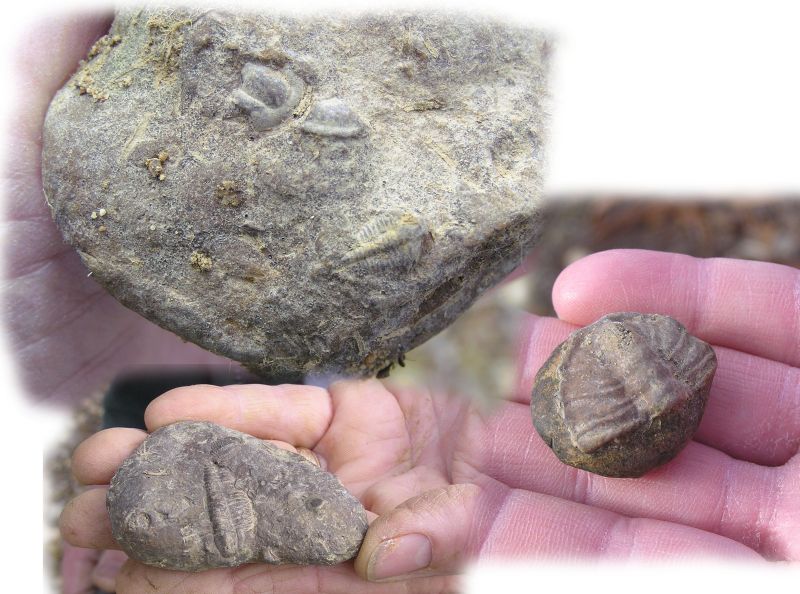
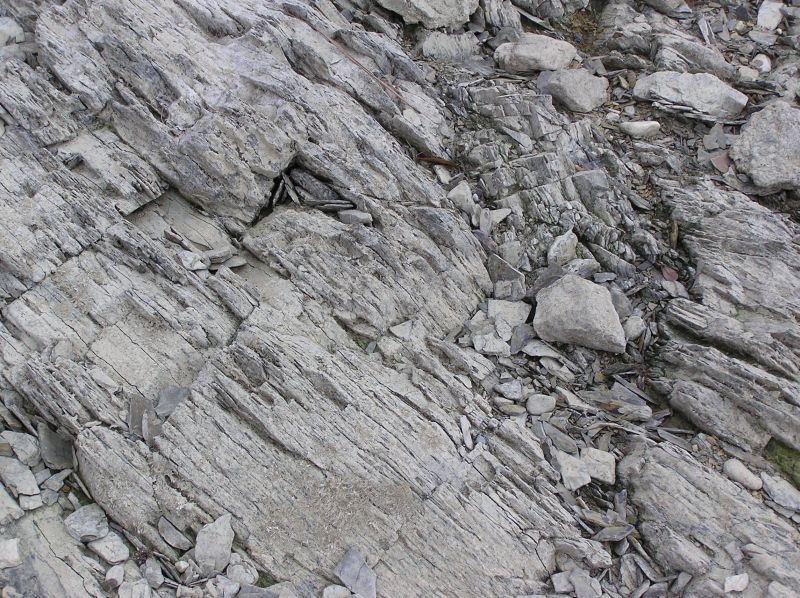
On day 2 we collected at a different site. Large outcrops of Conasauga shale turned on edge held numerous trilobites.
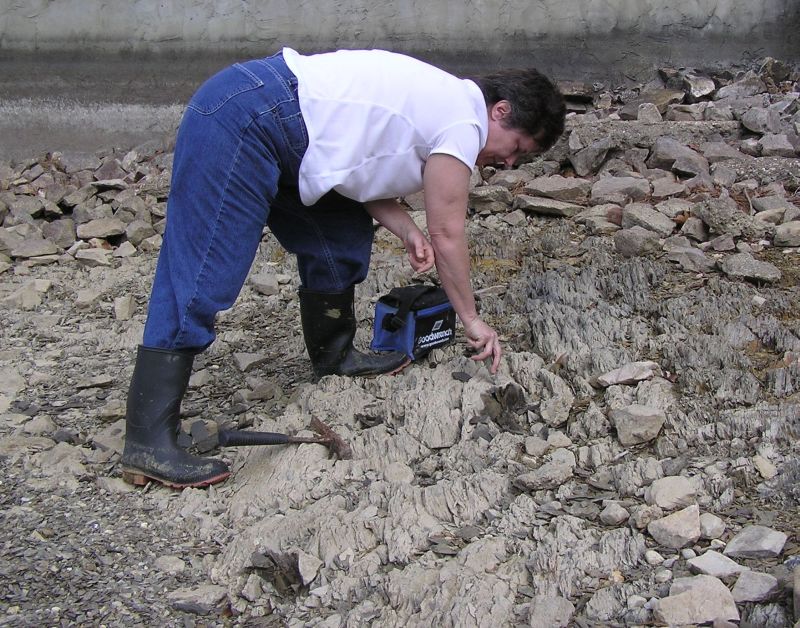
Becky is extracting small hunks of the shale to carefully split apart.
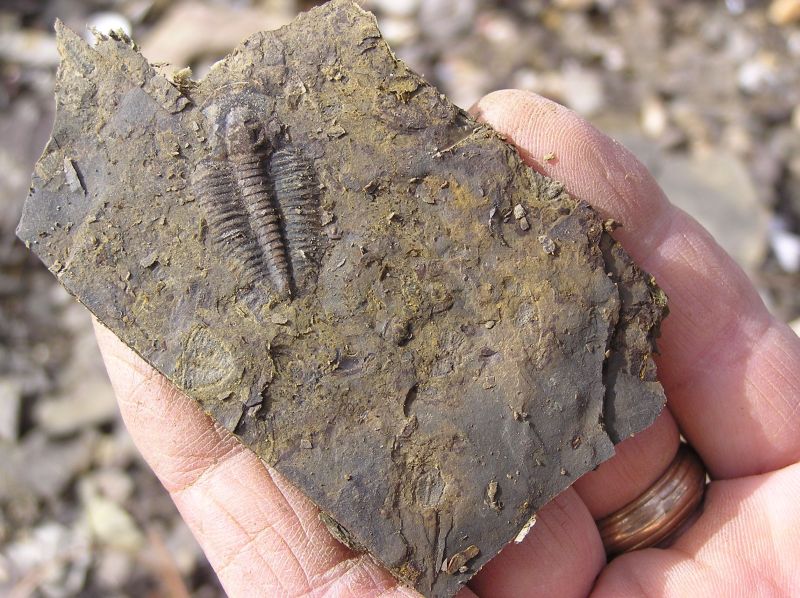
Nice trilobite specimen found at this site, found by Pam and Bob.
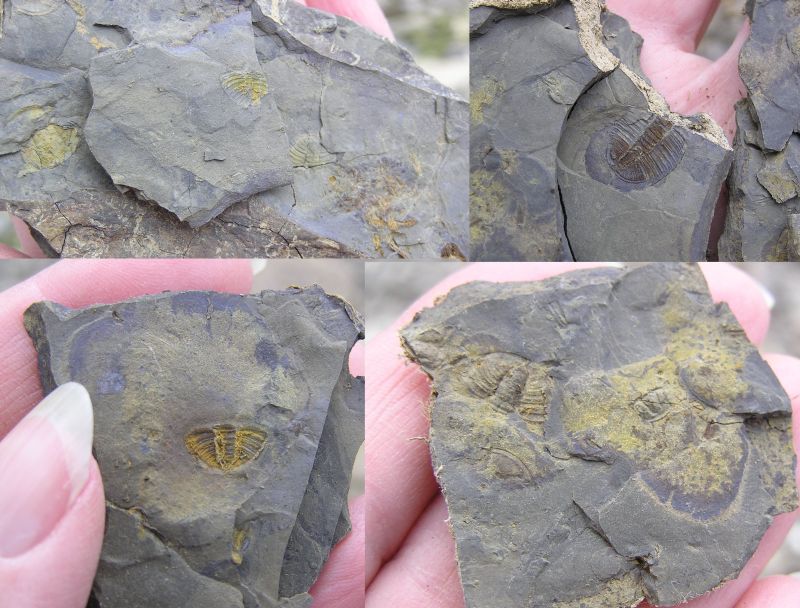
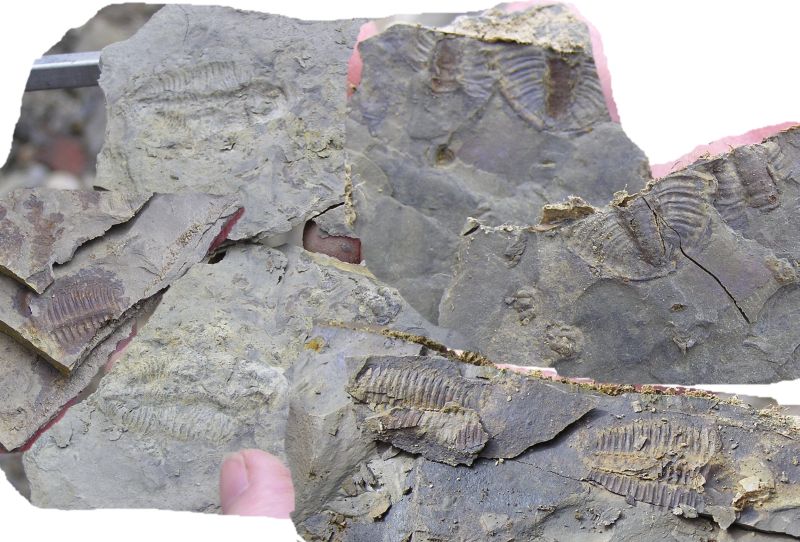
Leisa was having very good luck splitting the shale.
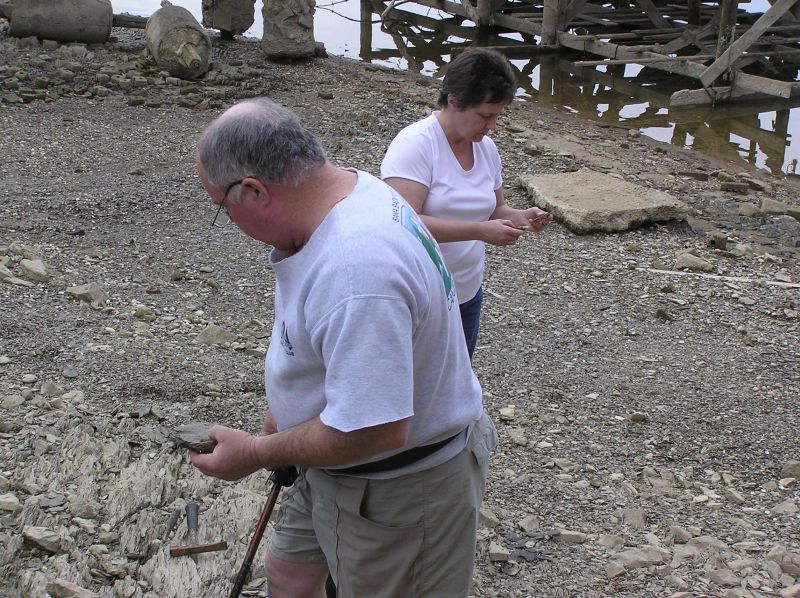
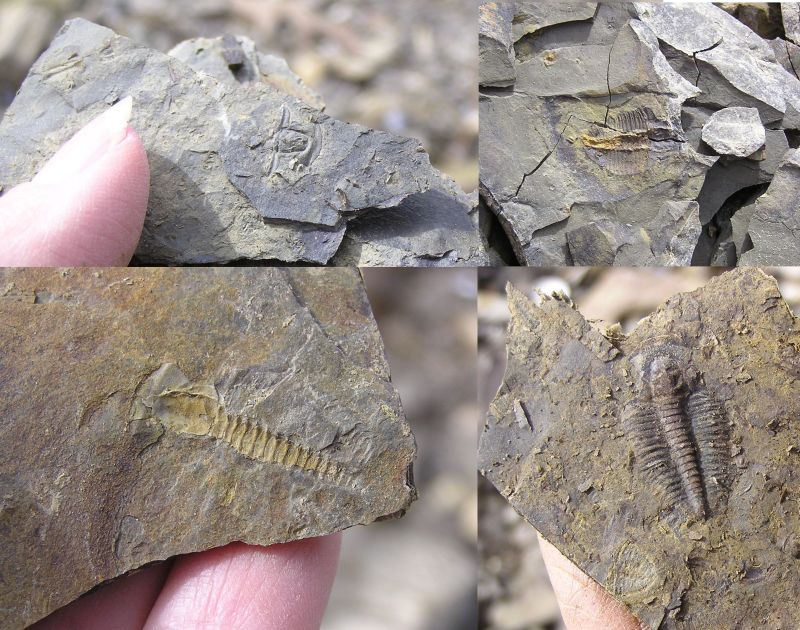
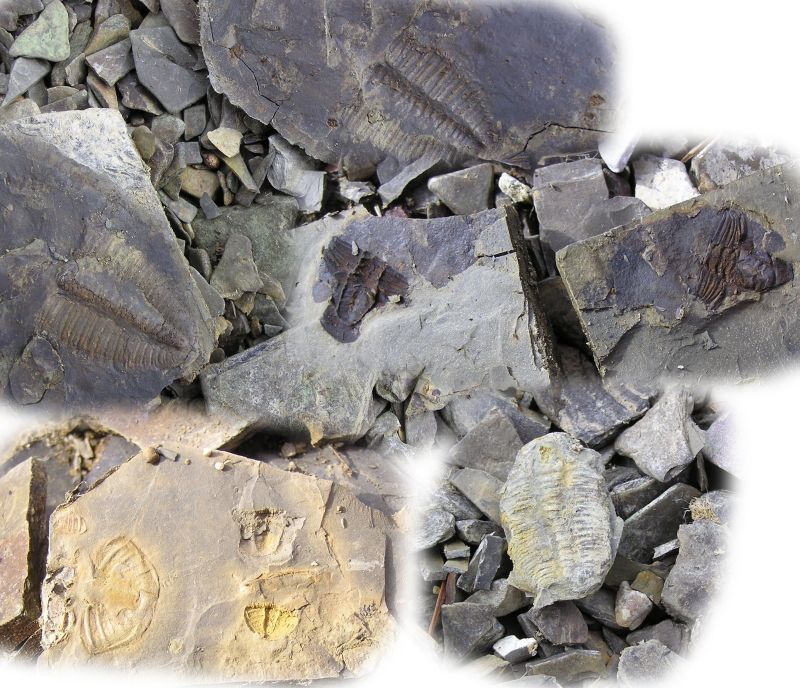
Since the grey-on-grey of the limestone makes it difficult to photograph the details clearly, Chris took multiple photos of the boulder, then used “stitch” photo technology to create detailed photographs of the complete rock surface. By using extreme macro and pasting the sections together, we have gotten far better records of those surfaces and the fossils they contain than with past techniques.
The Ruffner Mountain quarry is a fascinating place to visit and learn more about the Alabama fossil record. BPS is glad that we can contribute to the educational services of the Nature Center by our documentation.
After a late lunch at a locally famous hamburger joint, it was time to head home and get ready to party! All-in-all, a great day, topped off by the annual Xmas party. Good company, good food, Dirty Santa, a lot of laughter, and live music from our very own Lea Novak. It doesn’t get much better than that!
--Edited by Vicki Lais
(Photos courtesy Chris and Vicki Lais)
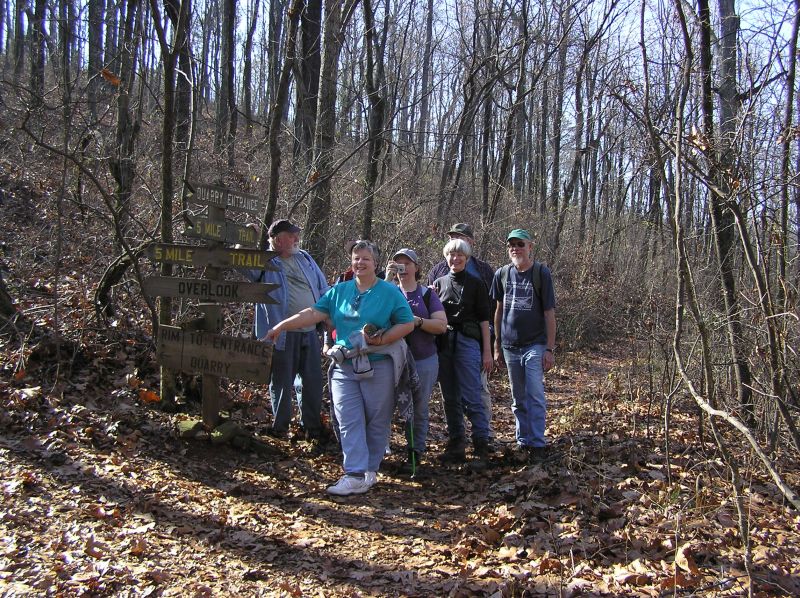

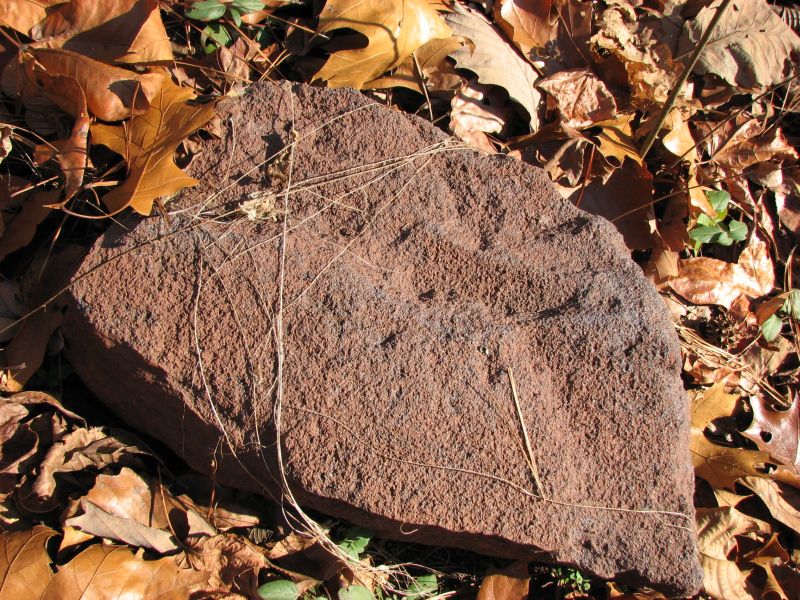
Iron ore spotted on path to quarry.
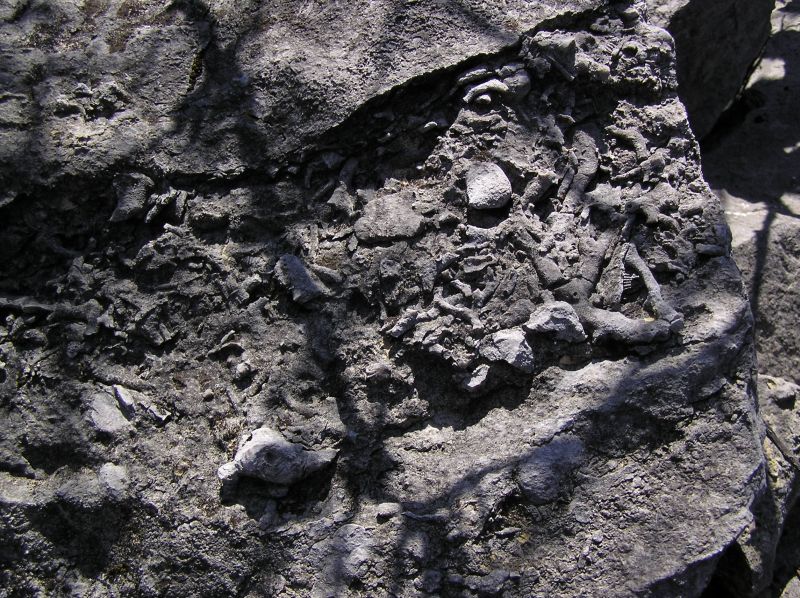
Mixture of fossils including brachiopods and bryozoans.
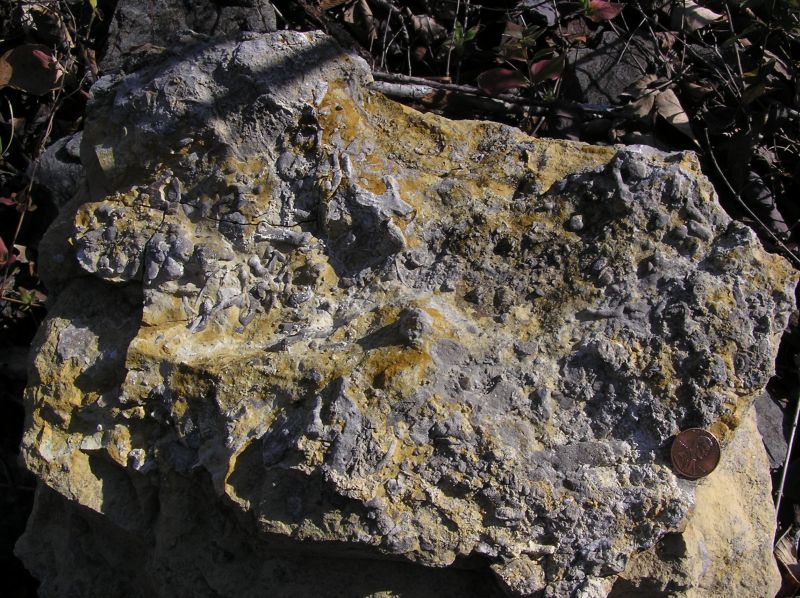
Most of the fossils are badly weathered.
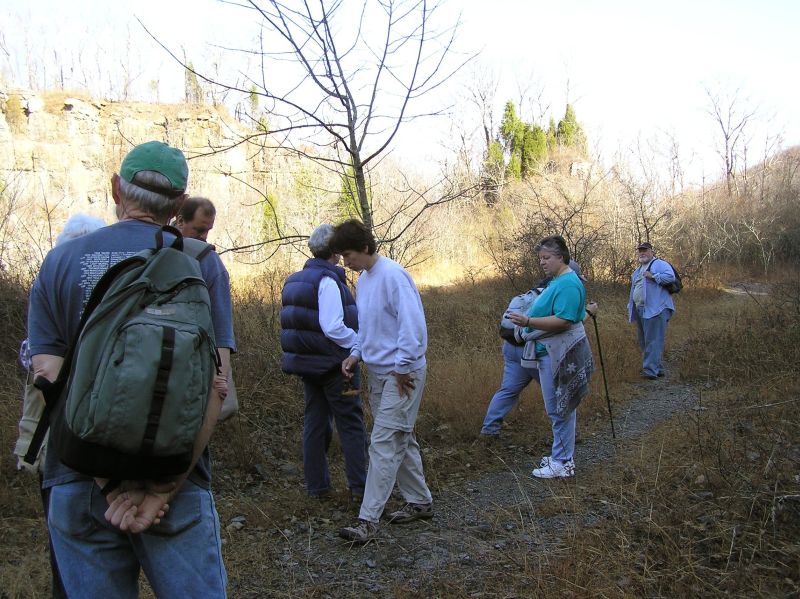
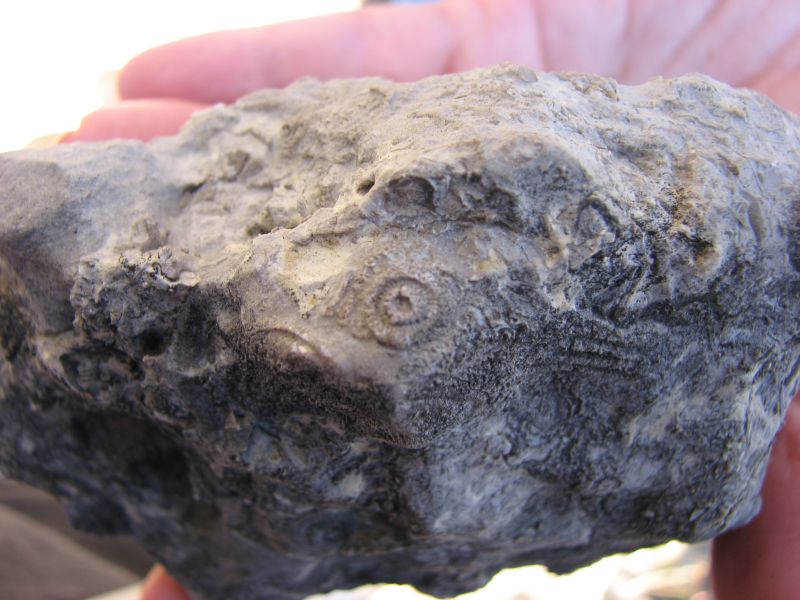
Coral.
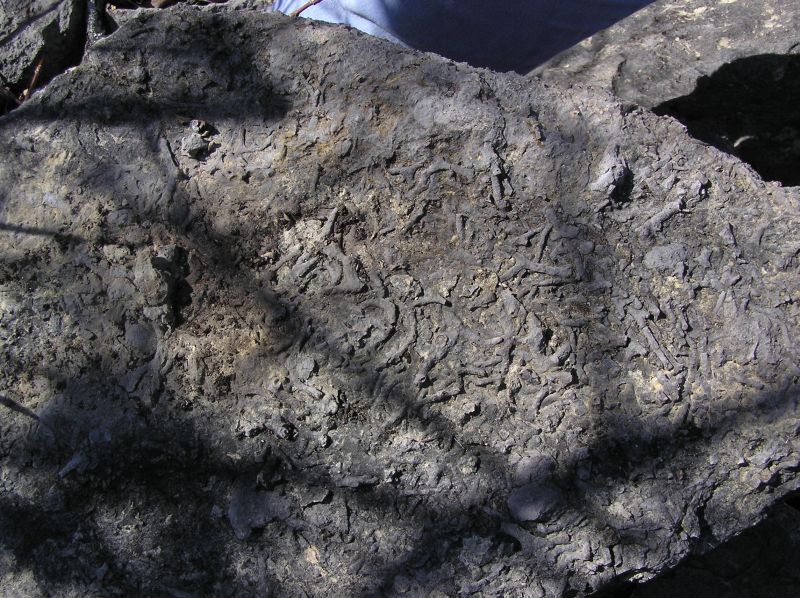
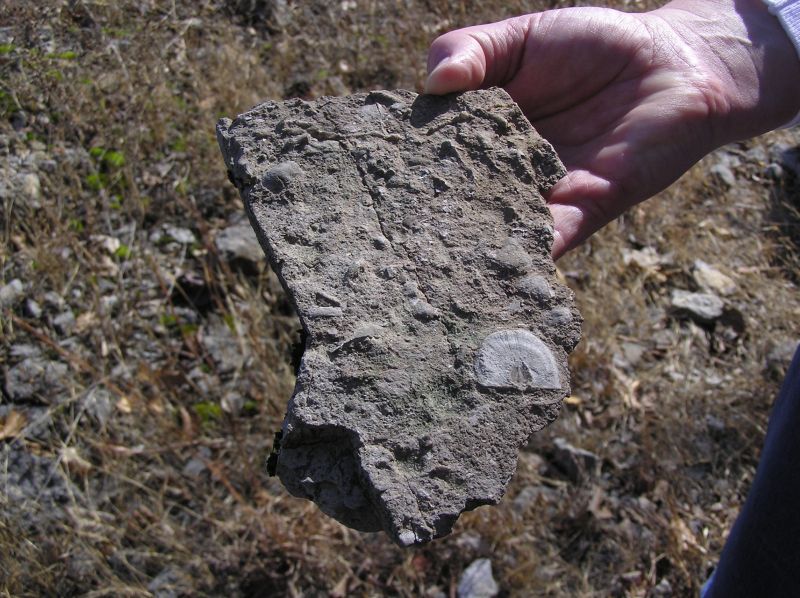
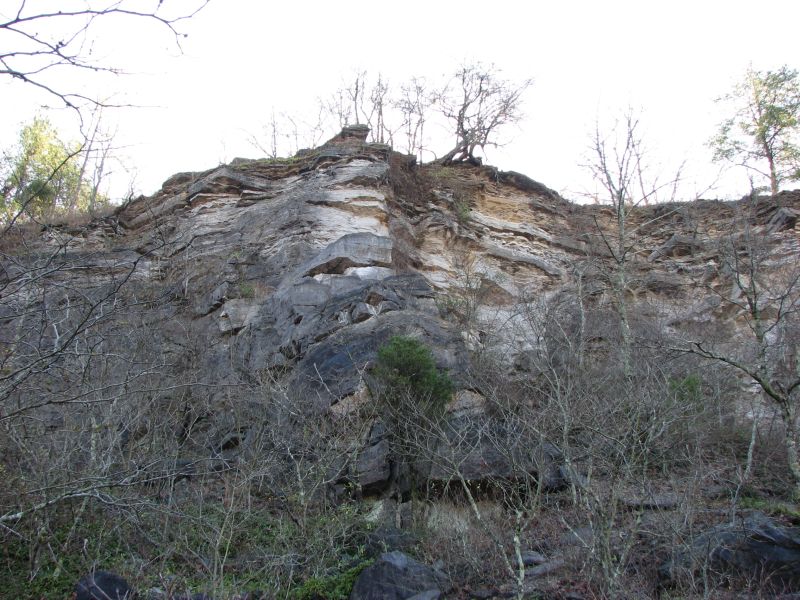
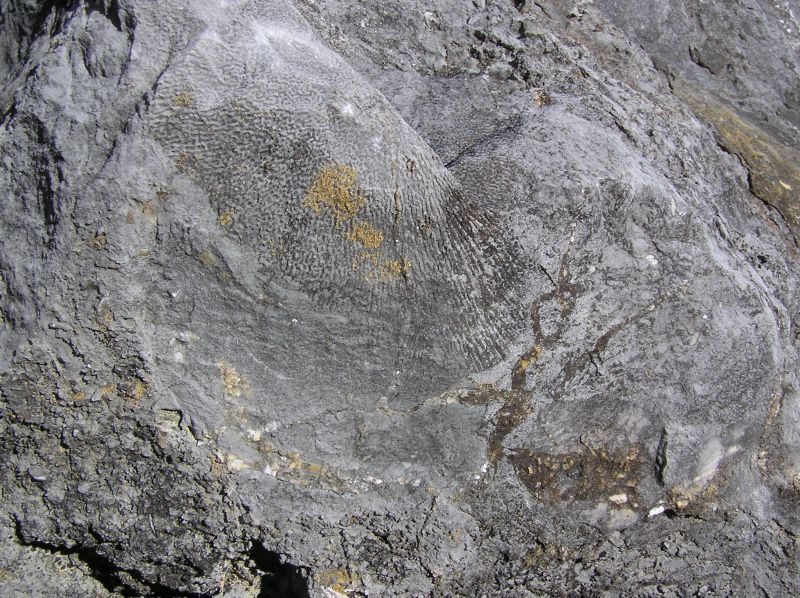
Large coral in boulder.
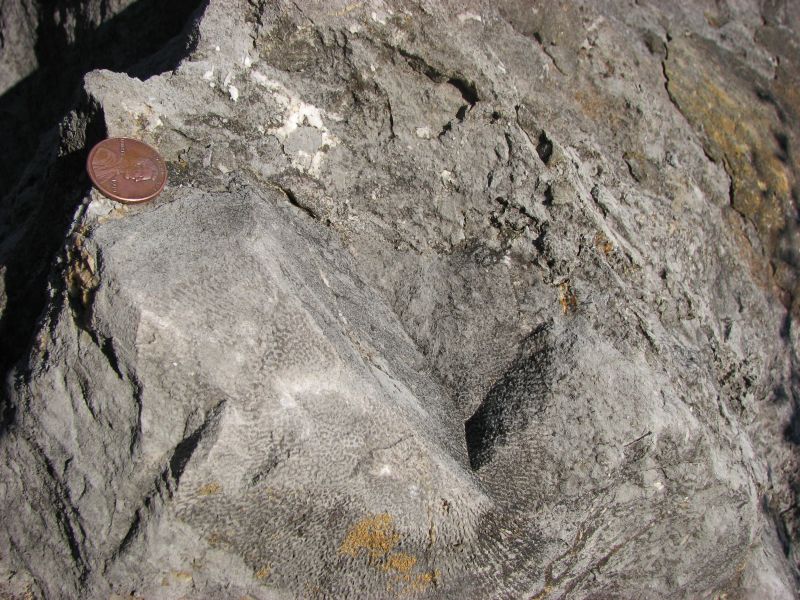
Another view of the same coral.
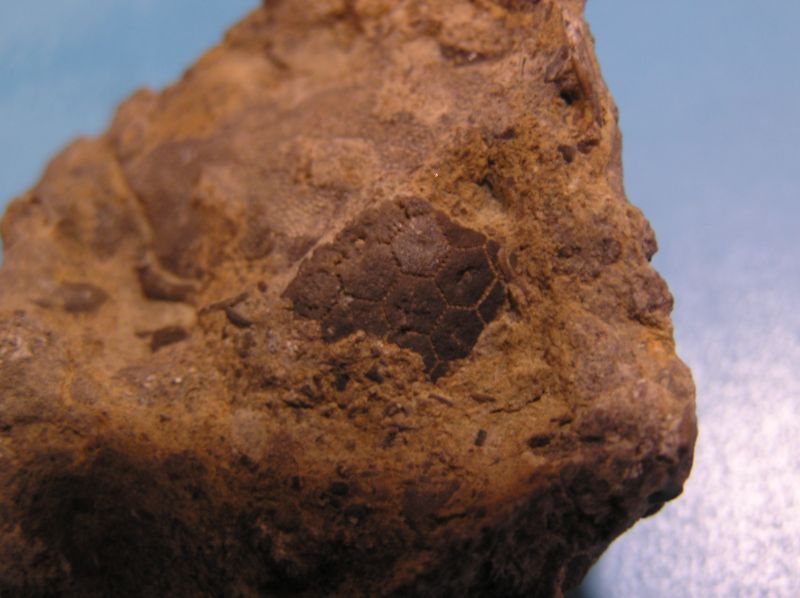
This is very tiny, no more than 1/2 inch across (My apologies for lack of a scale). Dr. Phil Novack-Gottshall says this appears to be a diploporitan, a type of echinoderm .
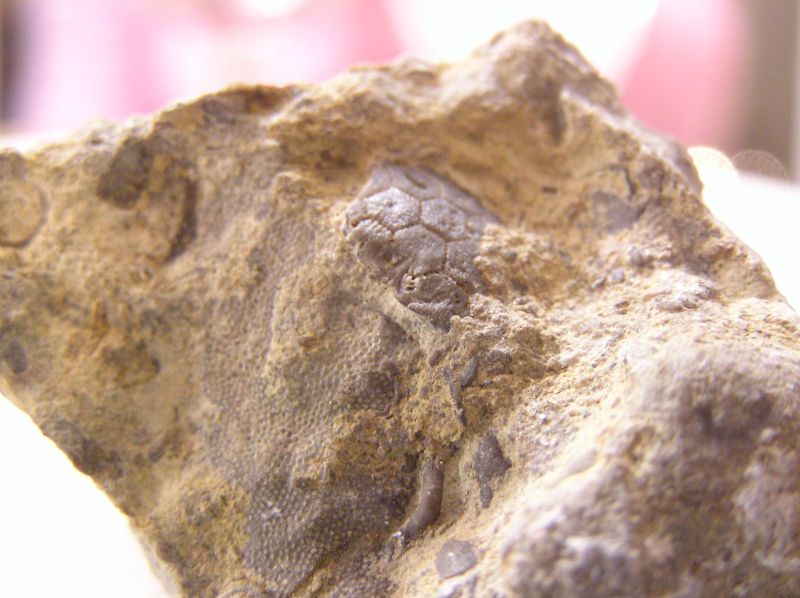
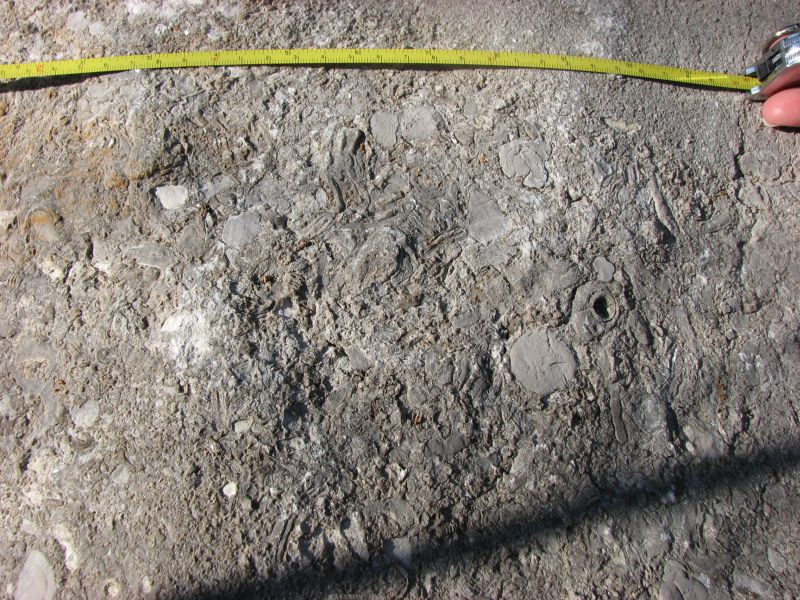
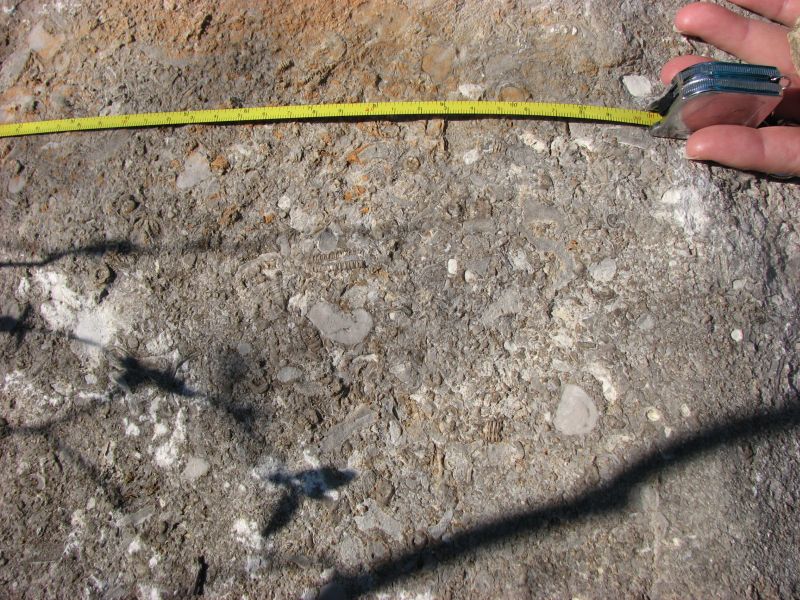
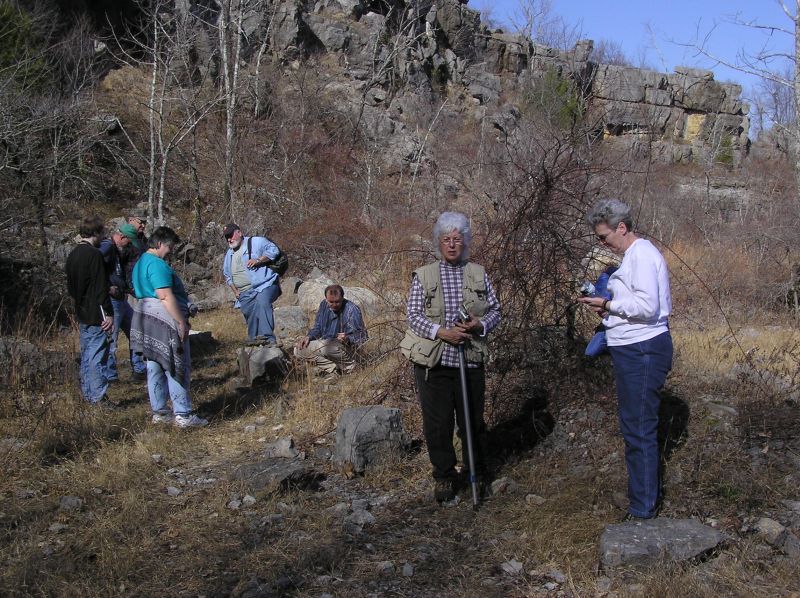
Taking a break.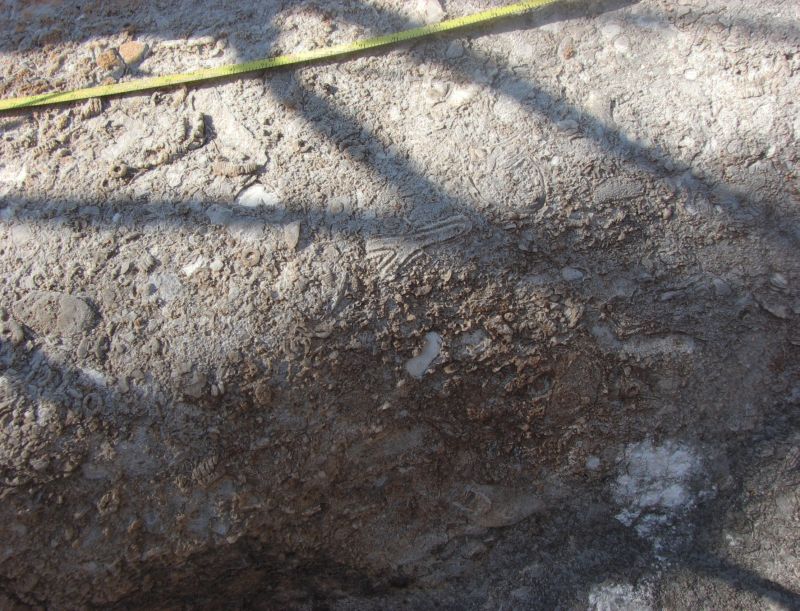
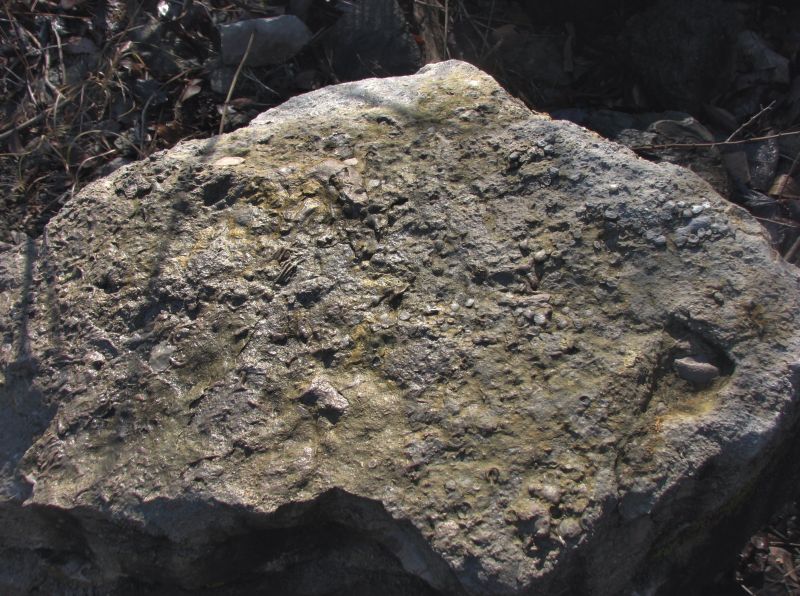
This is the rock/boulder that has been etched so that more fossil material is visible.
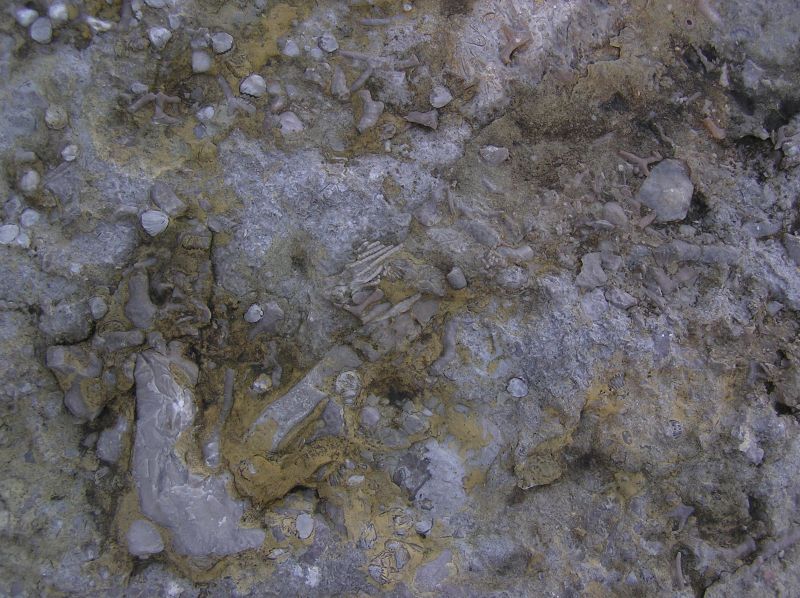
A closer view.
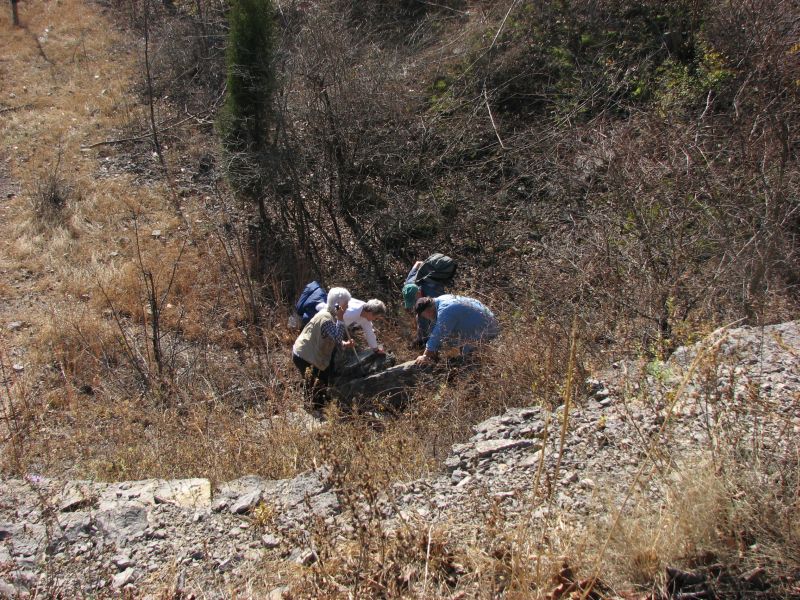
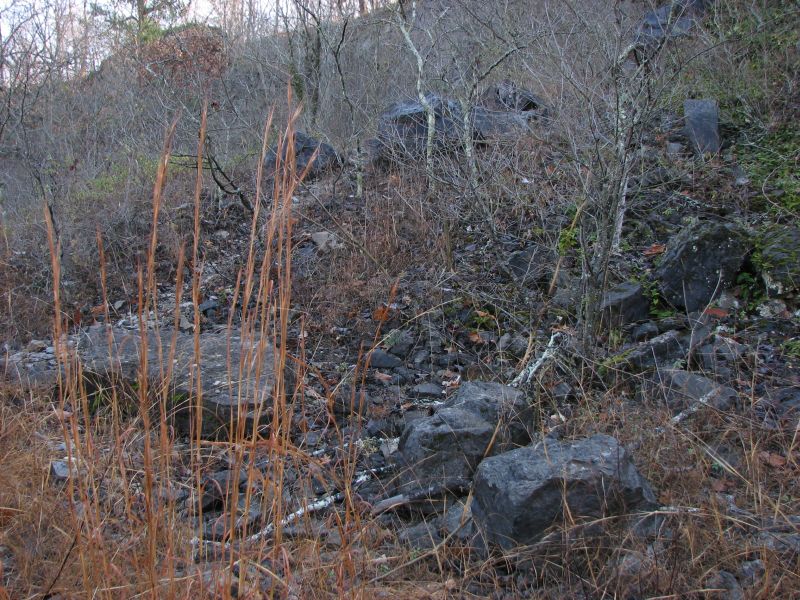
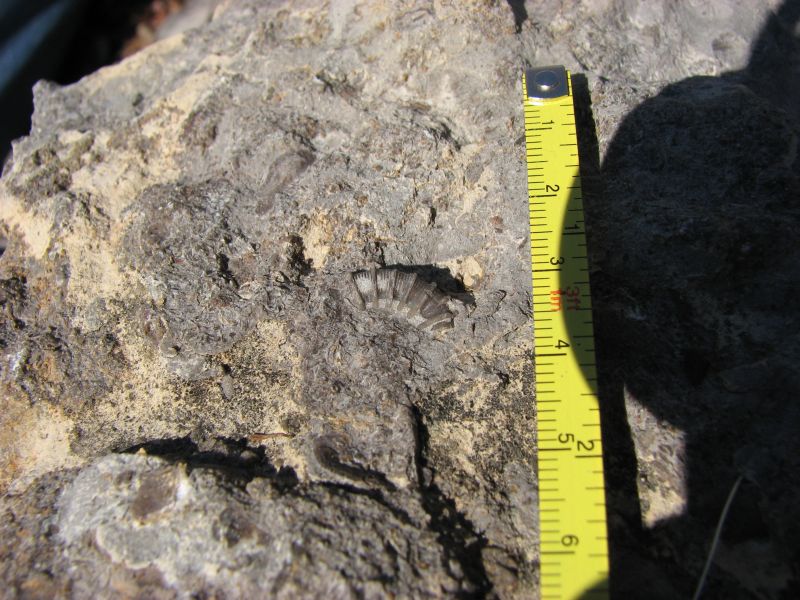
This odd looking fossil had us speculating, but according to Dr. Phil Novack-Gottshall, it is a crinoid stem with very regular cirri.
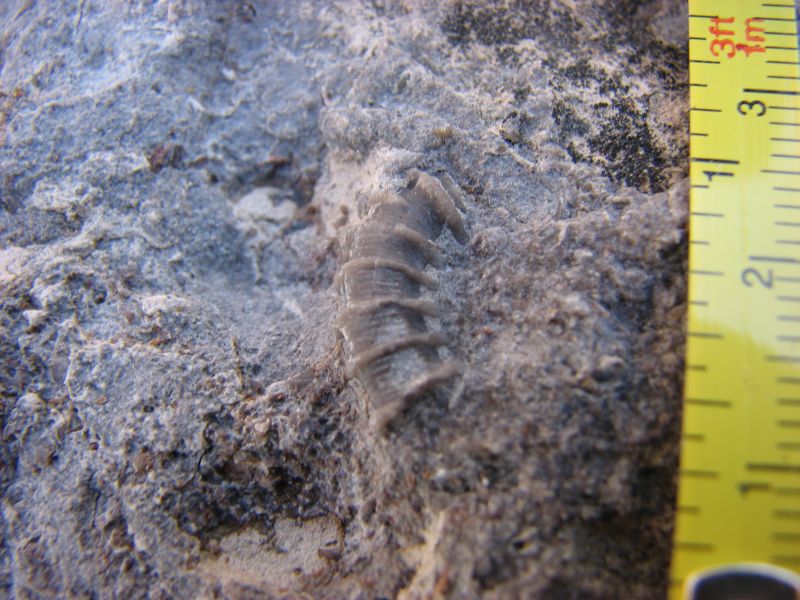
A macro view of the unusual crinoid stem.
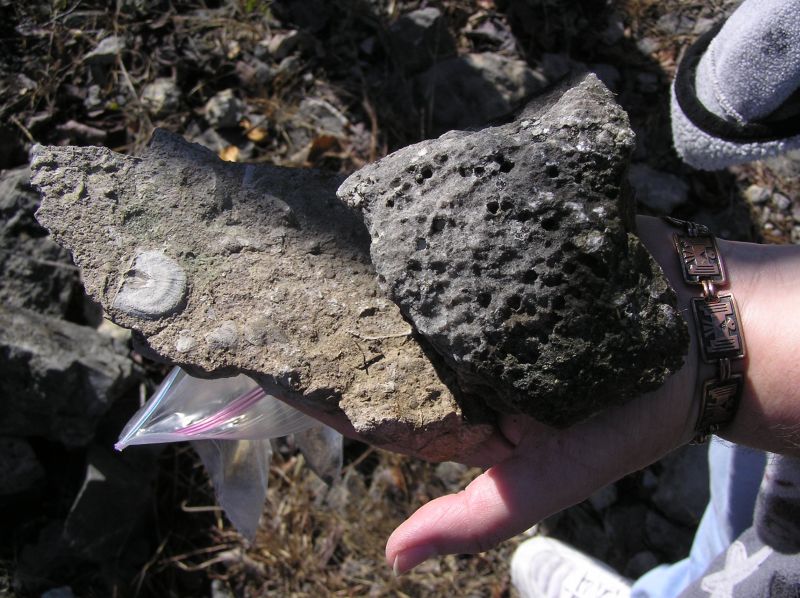
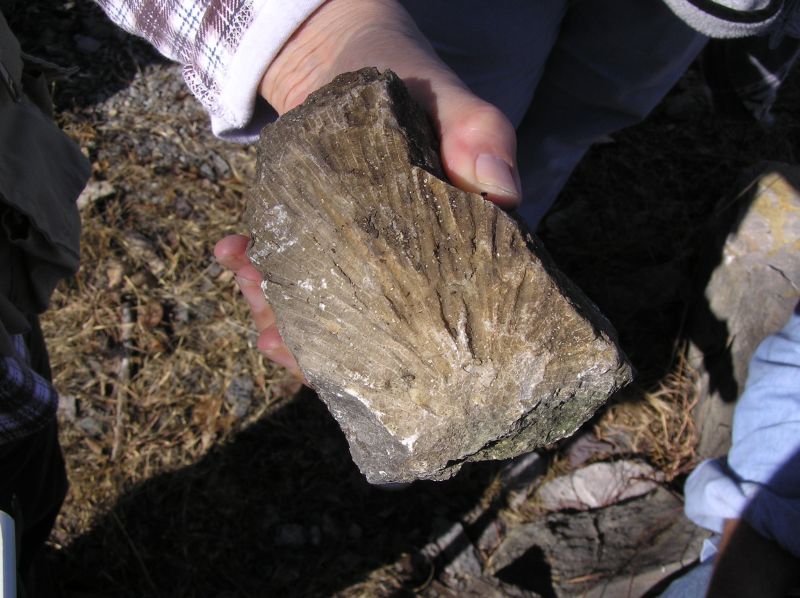
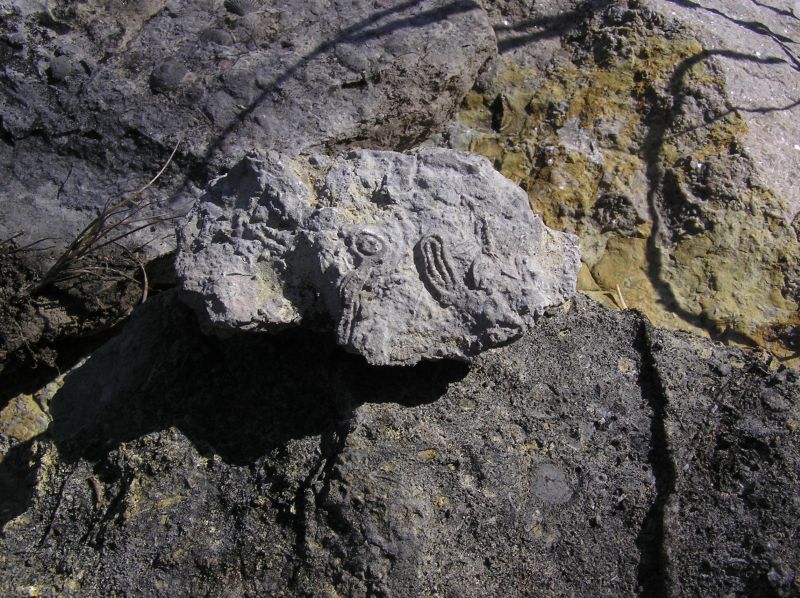
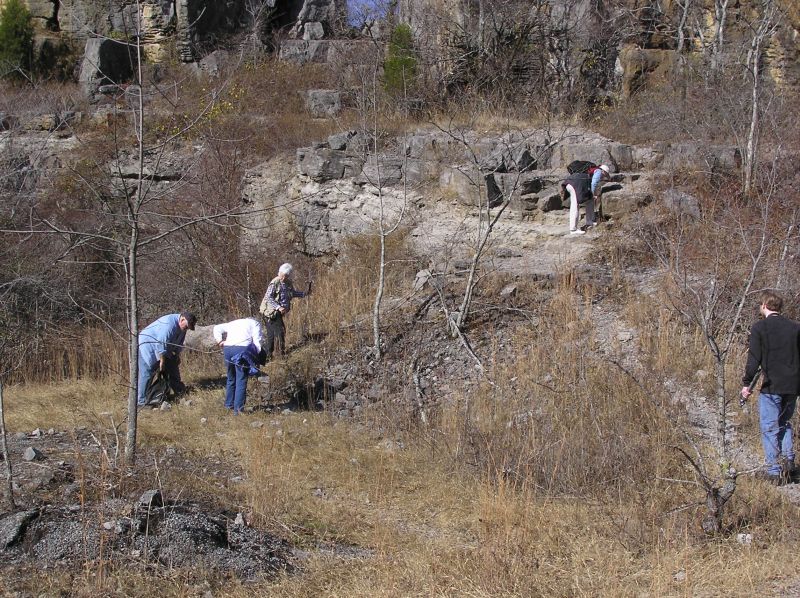
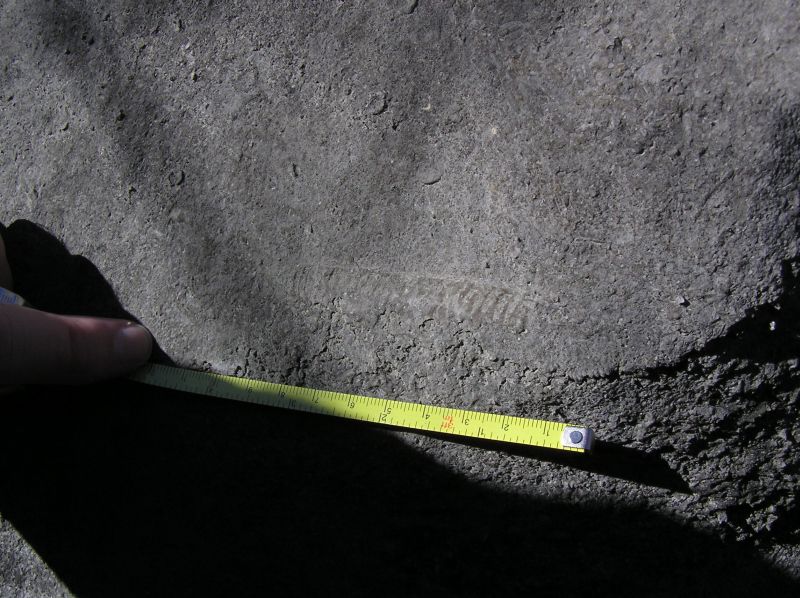
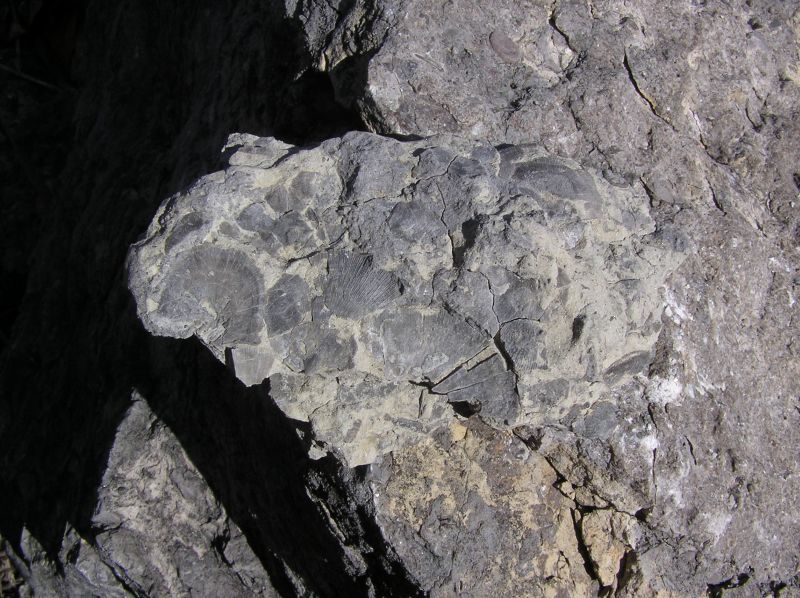
--Edited by Vicki Lais
(Photos courtesy Becky Guthrie and Vicki Lais)
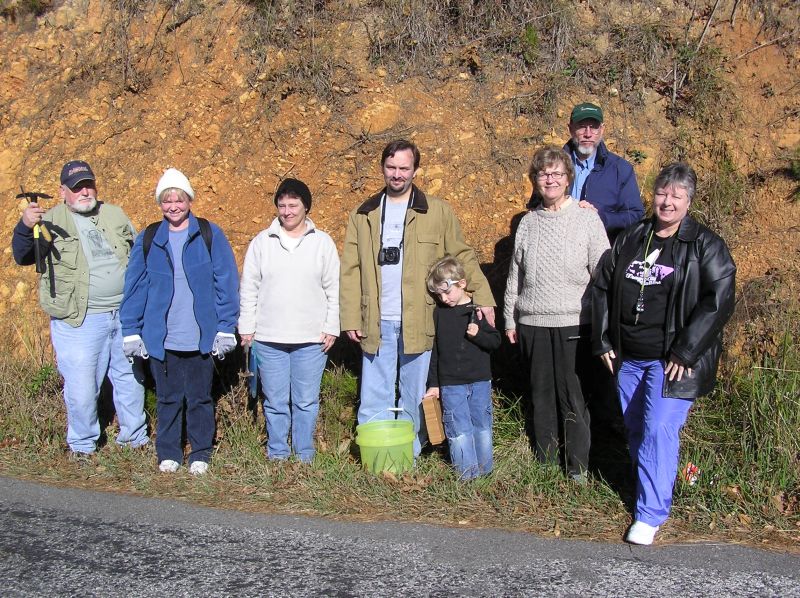
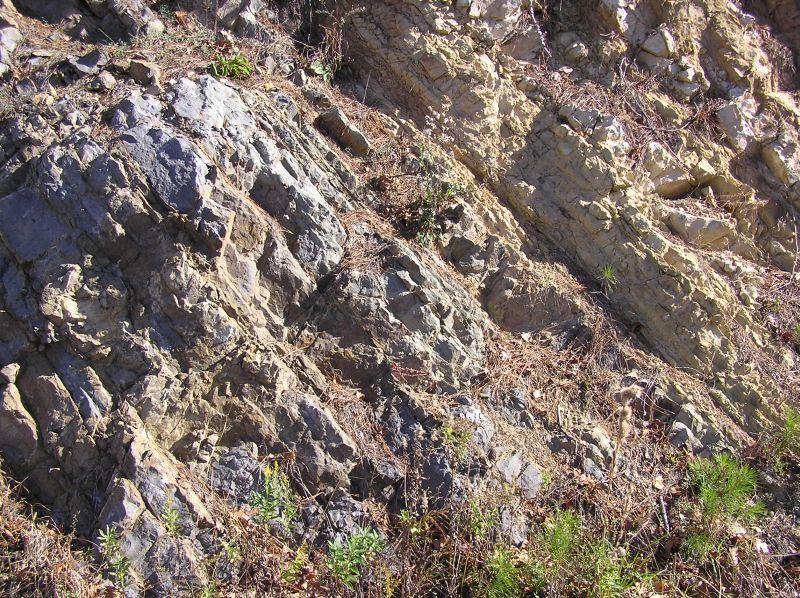
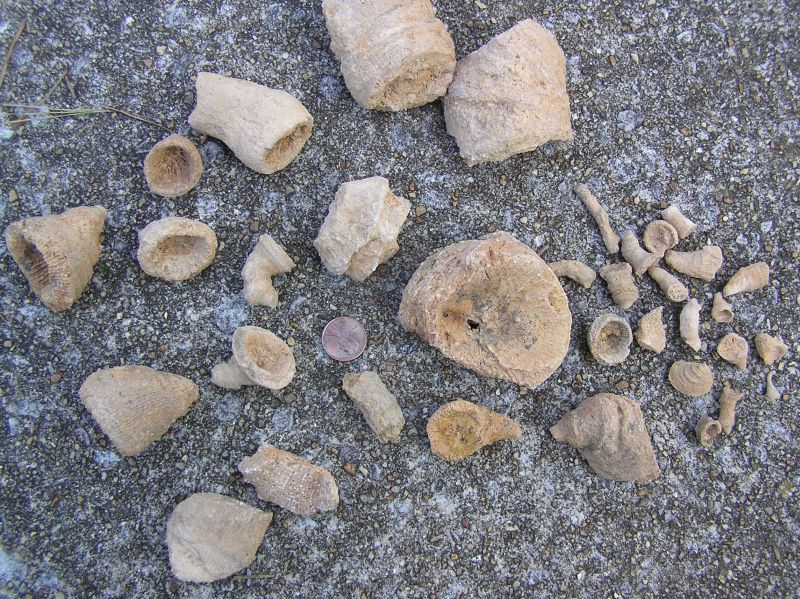
The most common fossil at this location is coral.
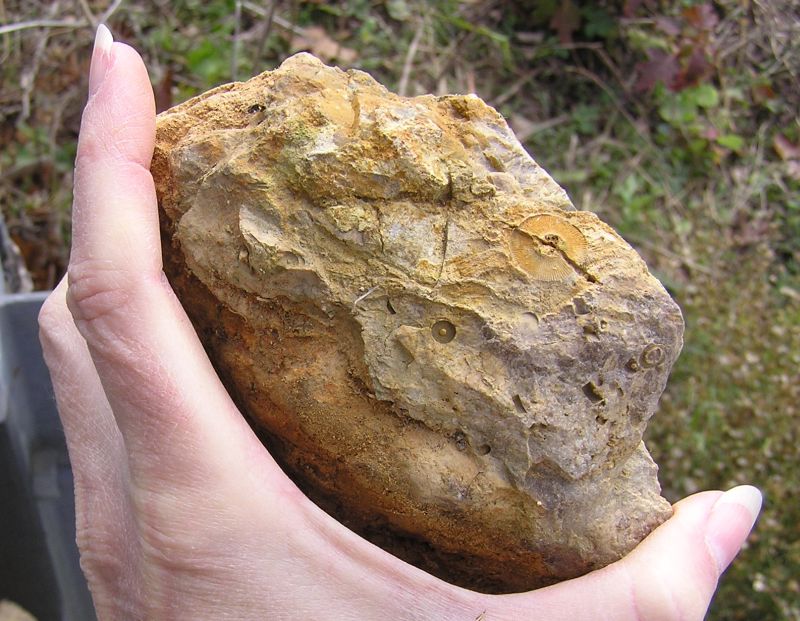
Crinoids are also found.
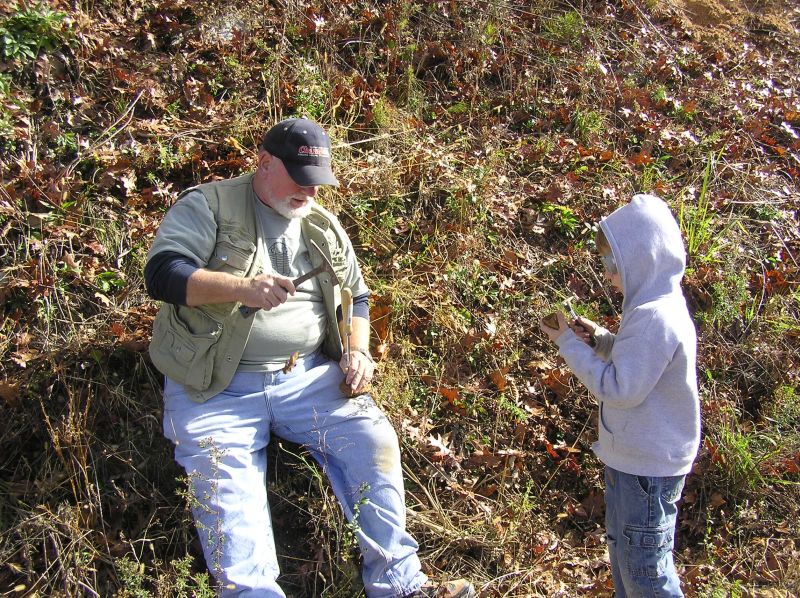
Greg shows Nathan how to crack the rocks to find the fossils inside.
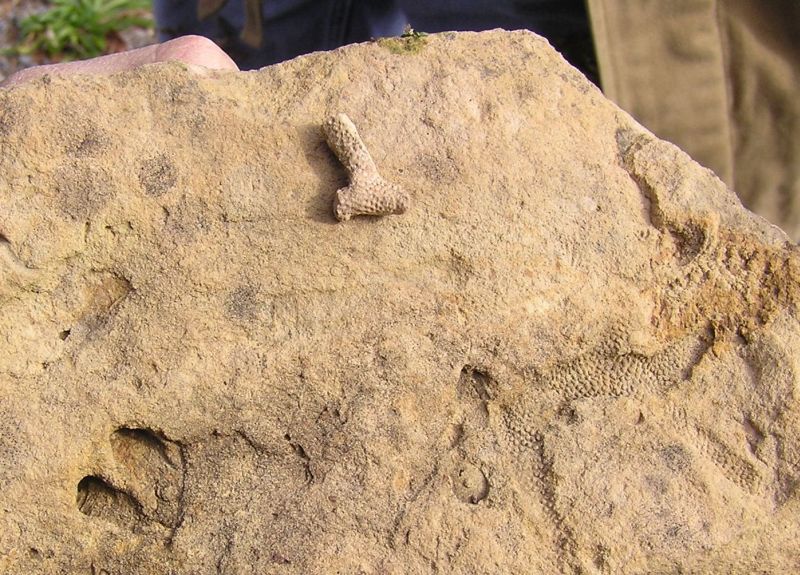
Nice bryozoan impression and actual fossil remains.
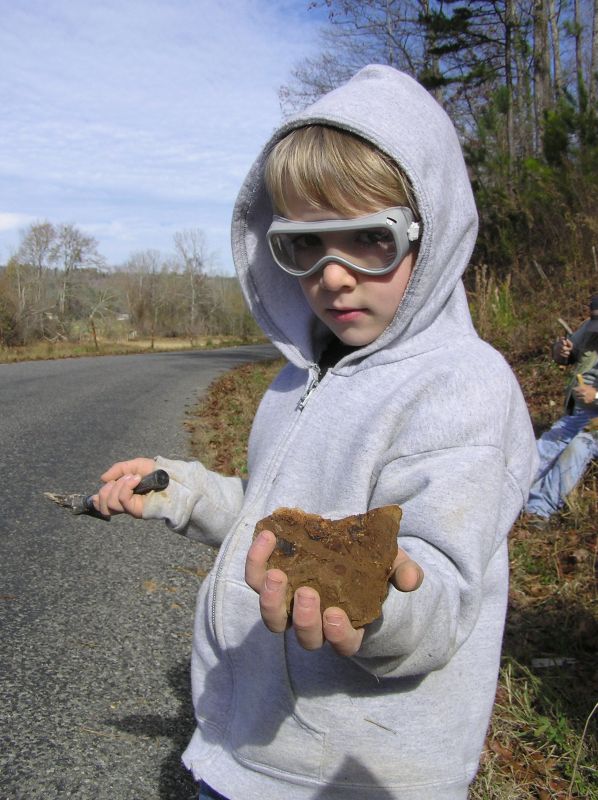
Nathan has found fossil brachiopods. Click picture for closer view.
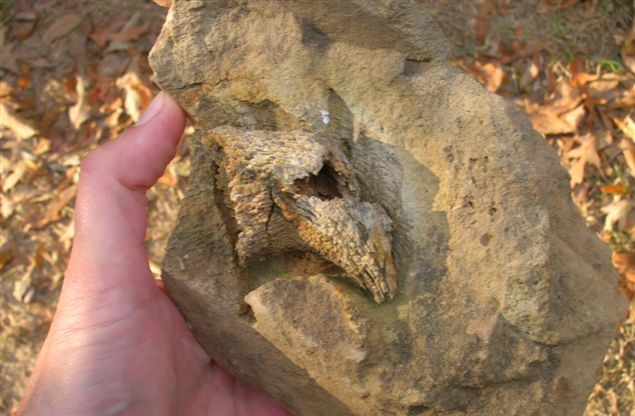
An interesting piece of horned coral, laying loose in a hollow shaped like it. This specimen has obviously been weathering in this same location for many years.
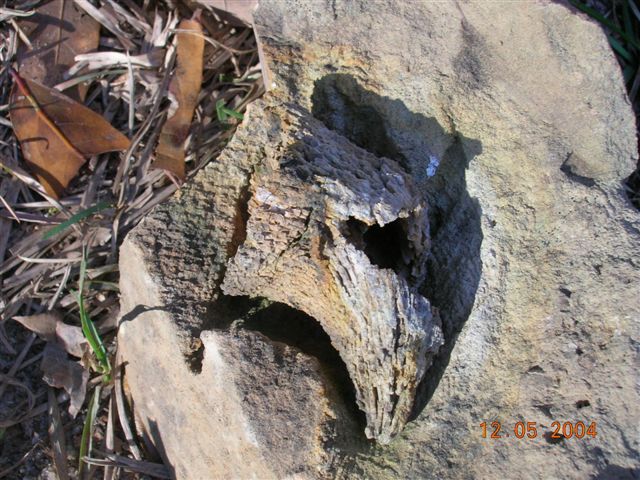
Another view of the horned coral.
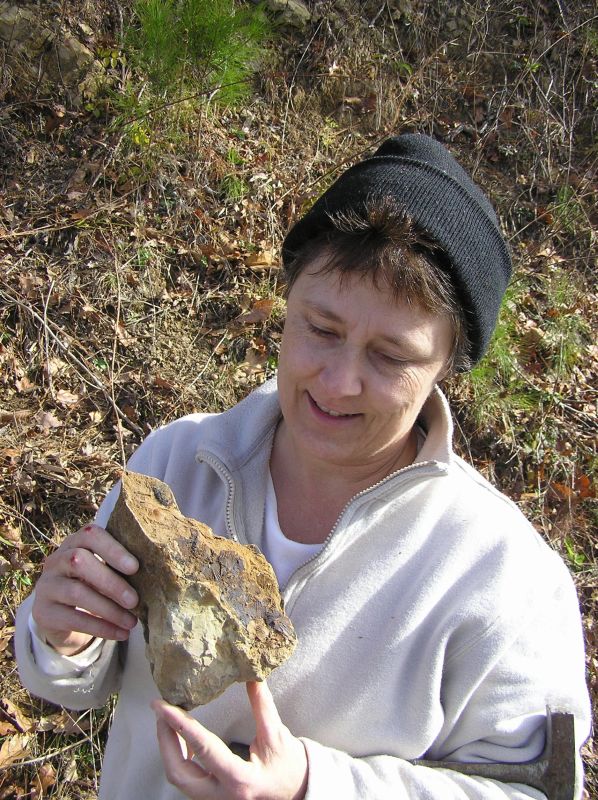
Becky also has a nice slab of brachiopods.
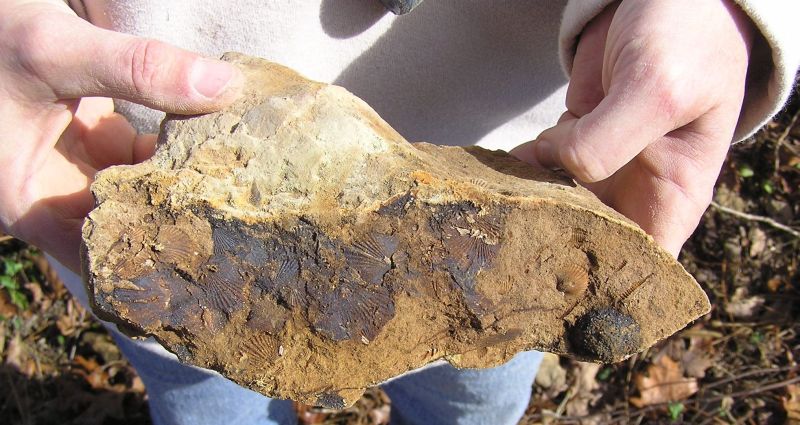
A closer look at Becky's slab.
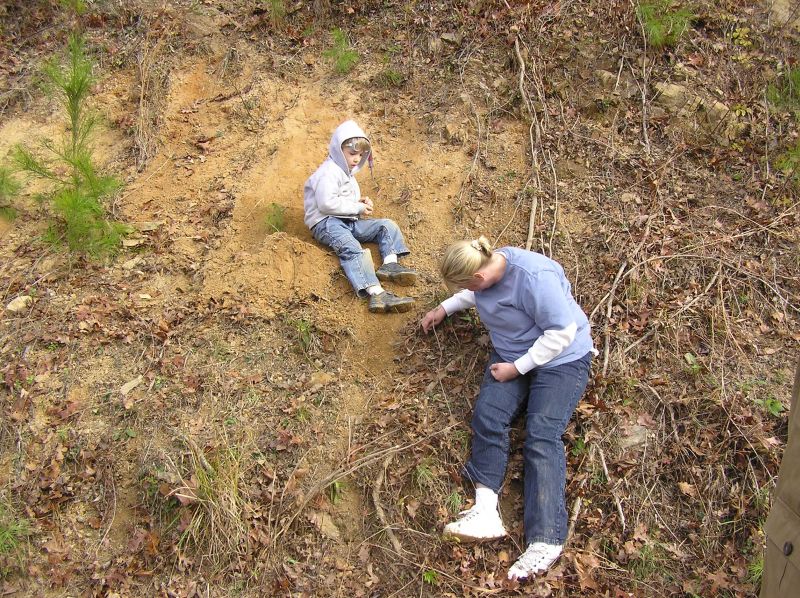
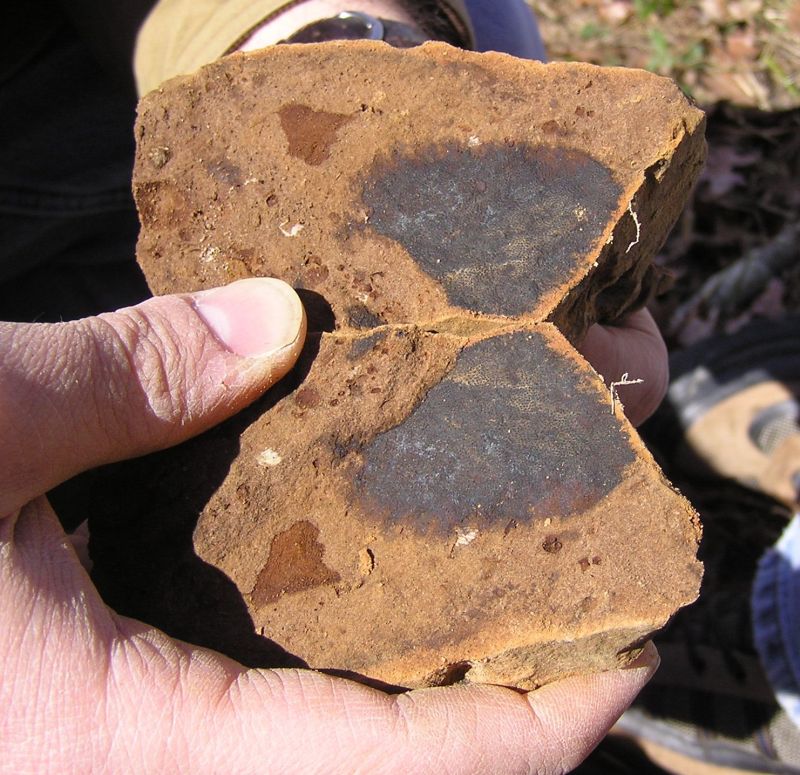
Nice sponge; at higher resolution, the pores are easily visible.
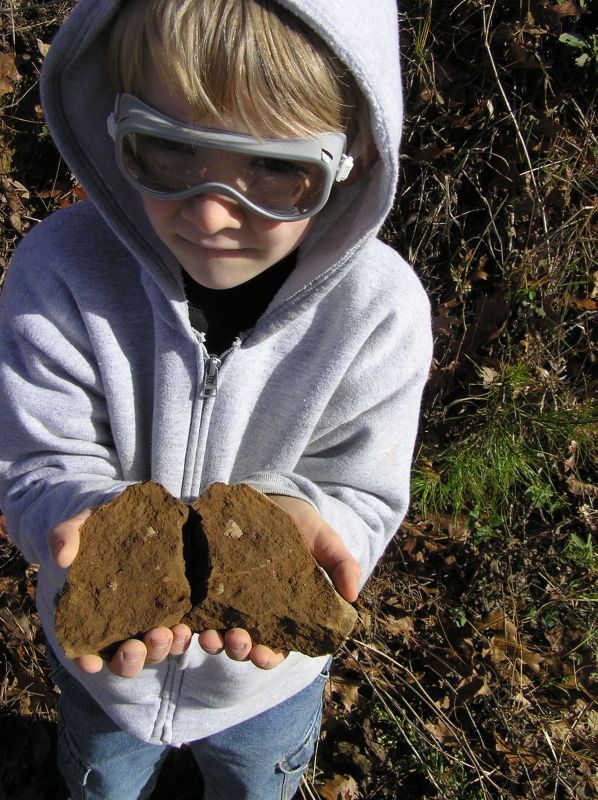
More brachiopods.
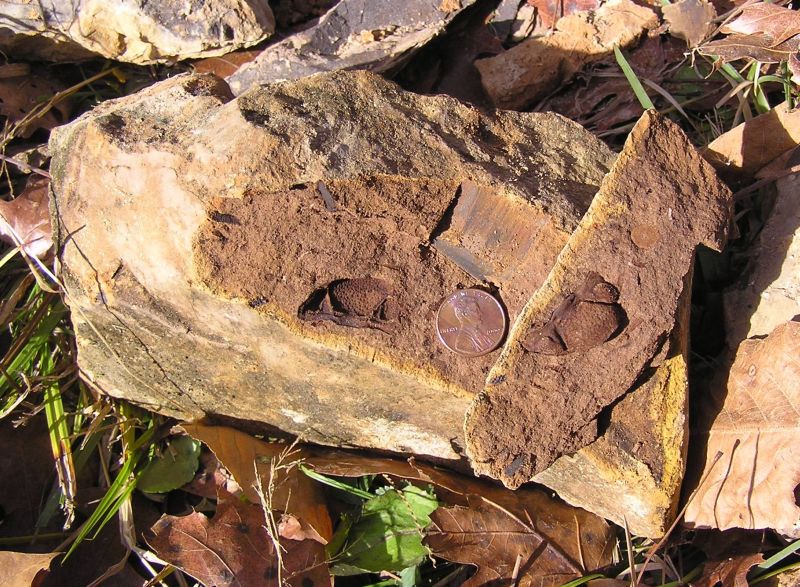
And here's what we were hoping to find - trilobites!
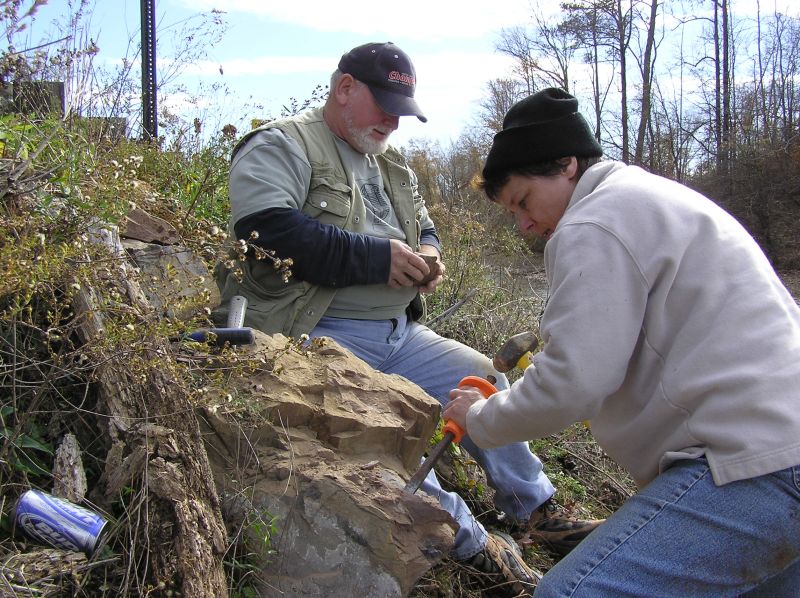
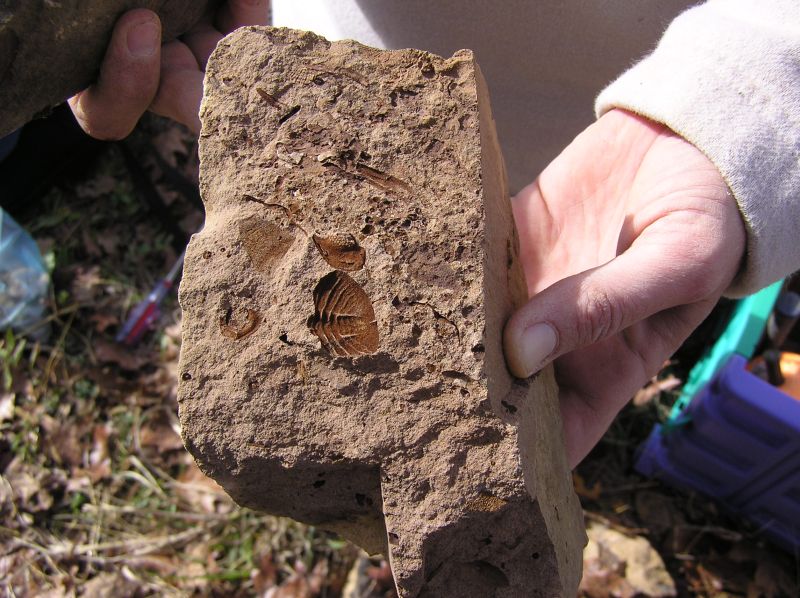
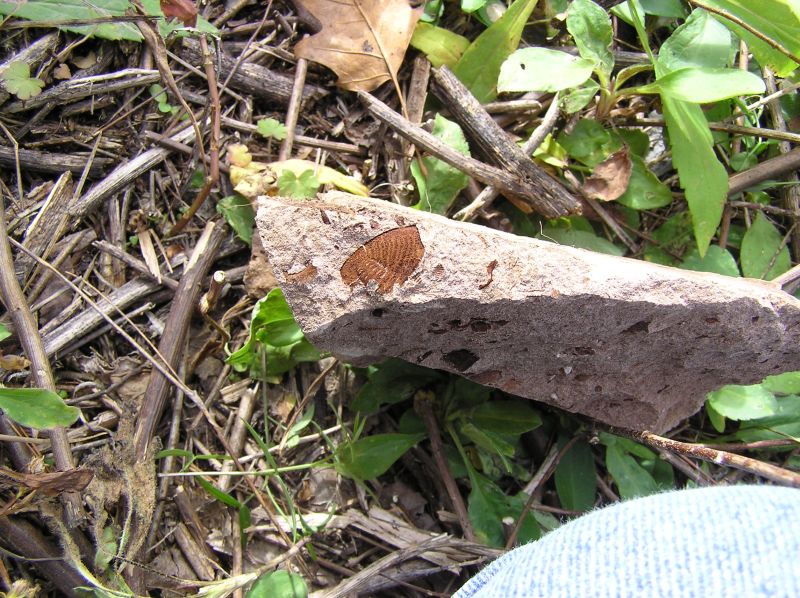
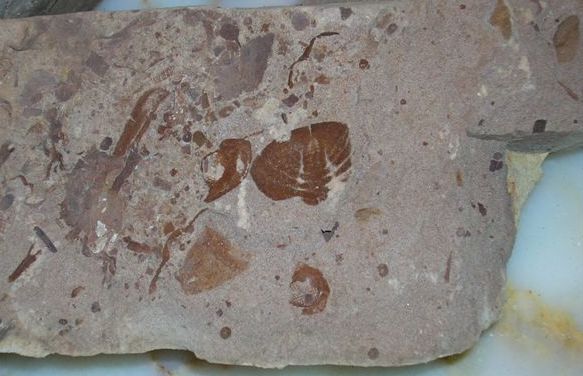
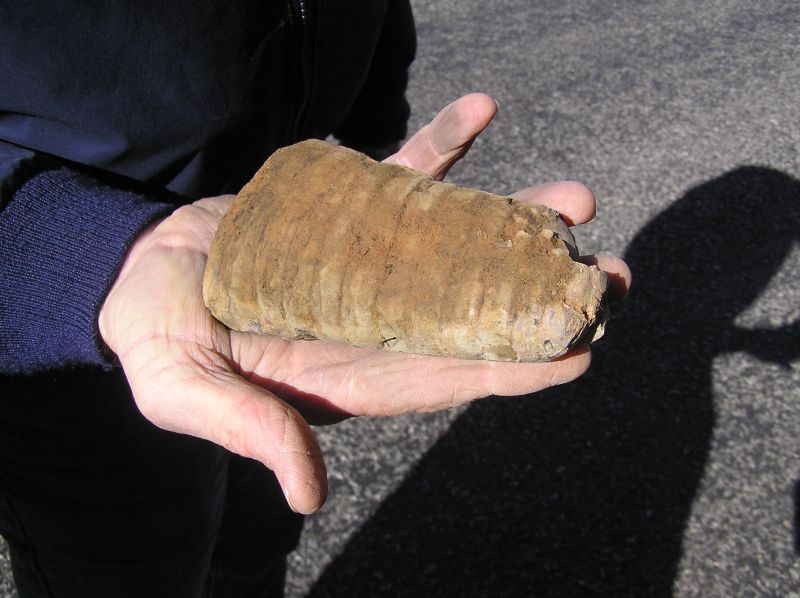
As nice as the trilobites are, this straight cephalopod was the find of the day!
After the butterfly viewing, we then convoyed to a quarry of Mississippian age Fort Payne chert where we had permission to hunt the whole day! Doesn't get much better than this, and the weather was absolutely perfect! Along with more large crinoid stems, several kinds of coral, brachiopods and a few trilobite pieces were found. Quite a few of us found beautiful geodes and concluded that this is just about as exciting as the fossils. They certainly are gorgeous souvenirs.
Later in the afternoon, a few of us sneaked off to one of Greg's barbecue spots and chowed down on some excellent vittles while our more dedicated crew-members devoted themselves to the task at hand. Well, you can't have everything. Sometimes a blackberry cobbler just has your name on it.
--Edited by Vicki Lais
(pictures courtesy Bill Fowler and Vicki Lais)
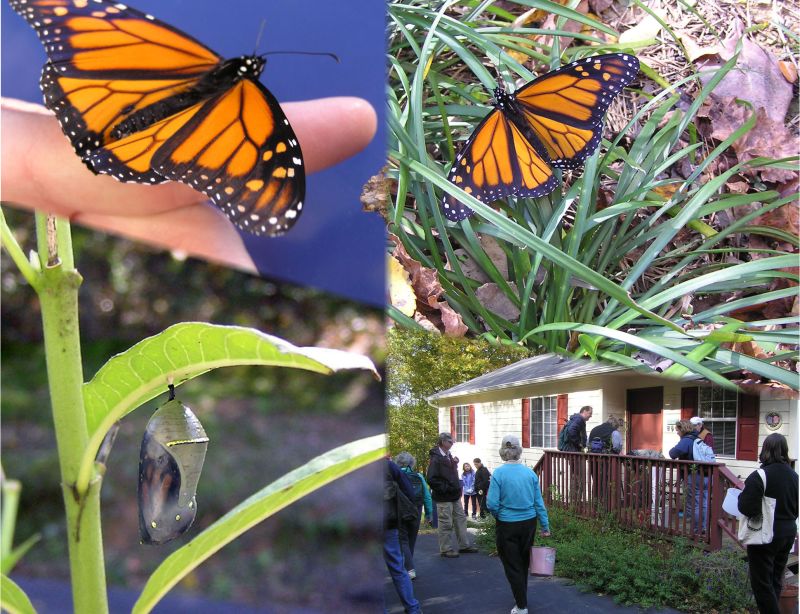
Our first stop of the day, where we found Monarch chrysalis on numerous surfaces, including plants and house siding. This chrysalis has turned clear, and you can see the butterfly inside. There were several newly emerged Monarch butterflies slowly pumping their wings, waiting for them to harden (that's what everyone's staring at on the porch.)
We had a great turnout and beautiful weather; here we pose for a group picture before setting off on our day's adventure.
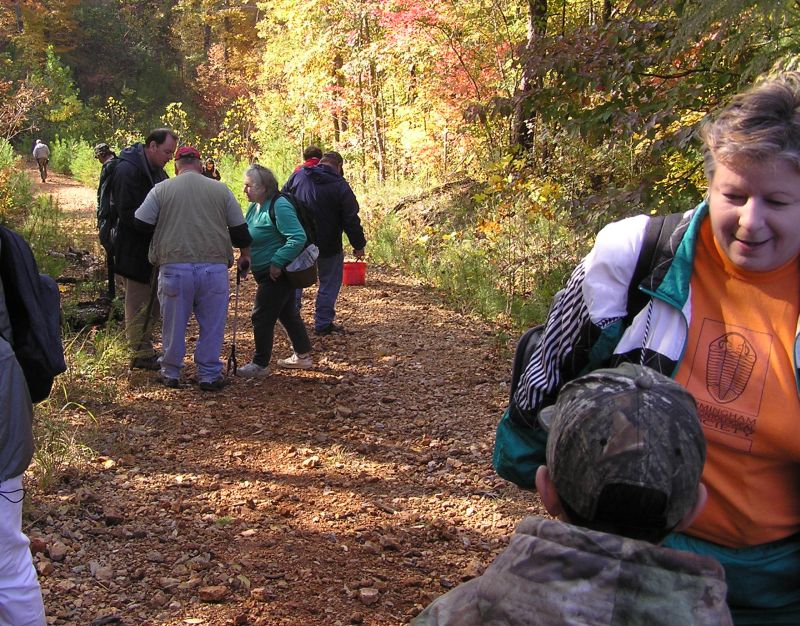
The first fossil stop, a gravel road paved with chert from the Mississippian age. Almost all the rocks have crinoid stems or impressions in them.
Examining recent finds.
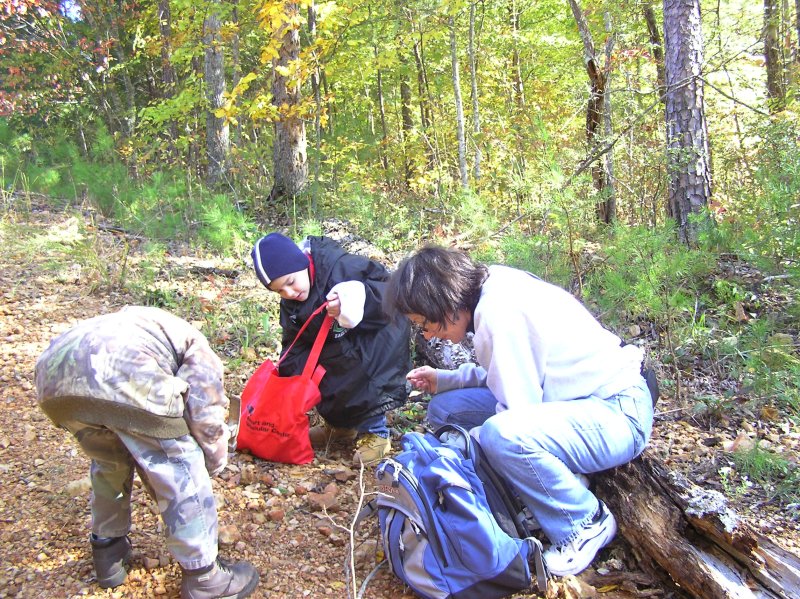
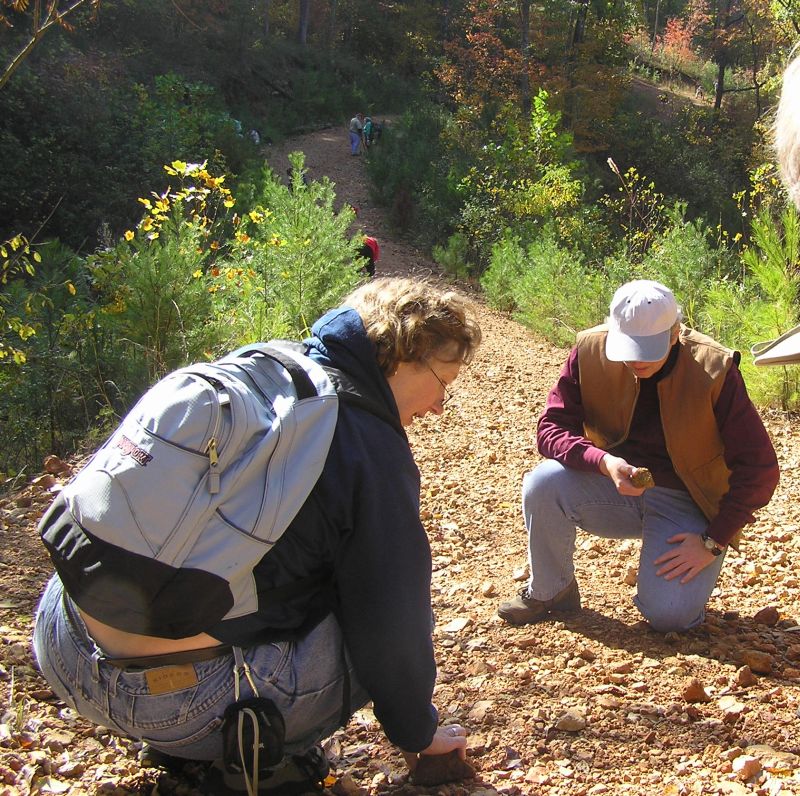
Samples of fossils found today.
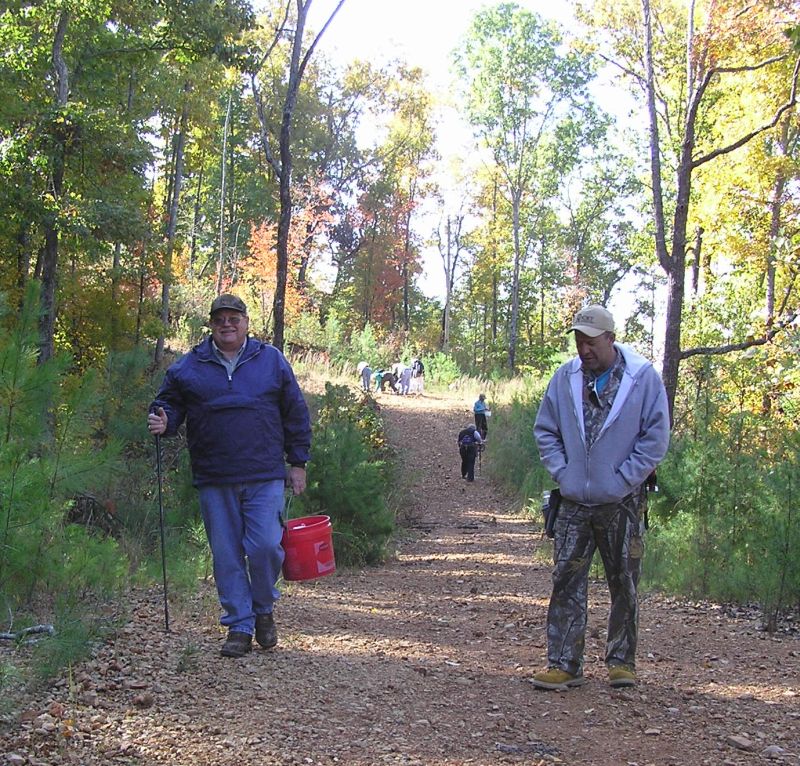
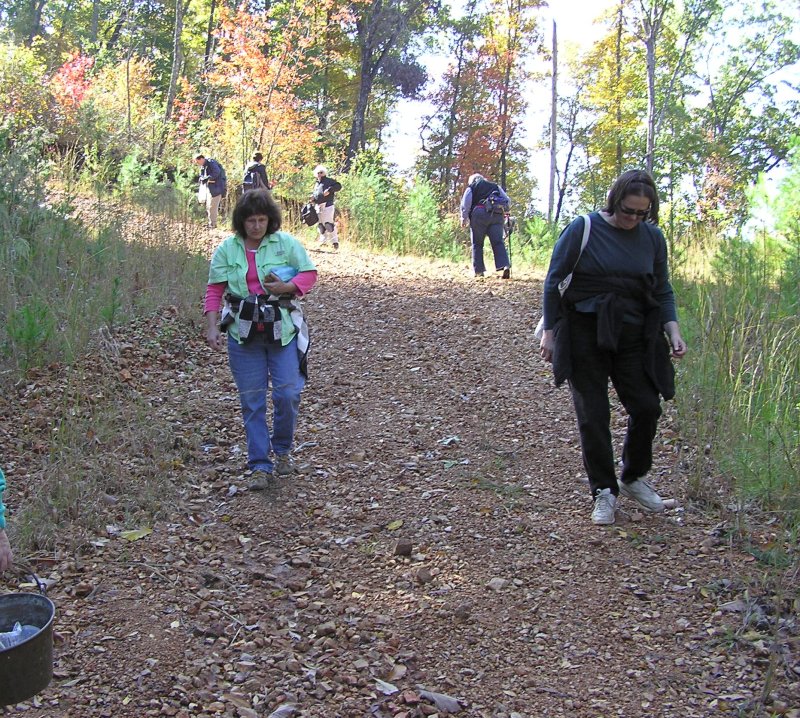
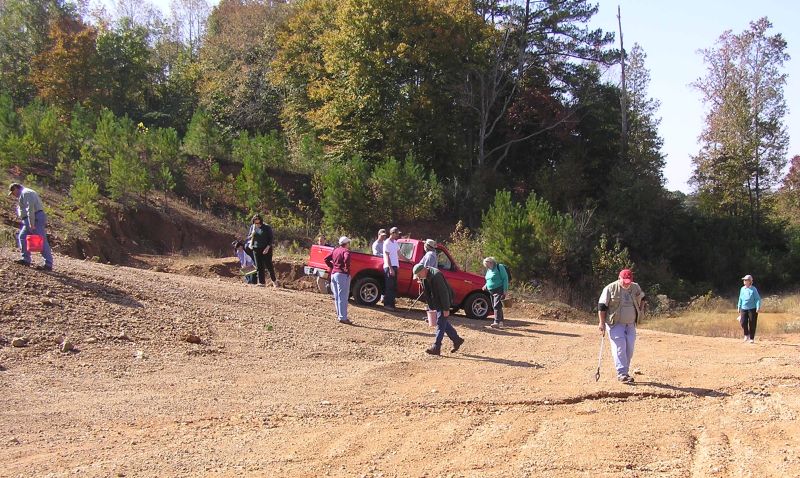
On to the next stop at a nearby quarry which was large, hilly and had multiple collecting areas. Everyone scattered in different directions to collect, so it was difficult to get closeups of people and their finds during the day.
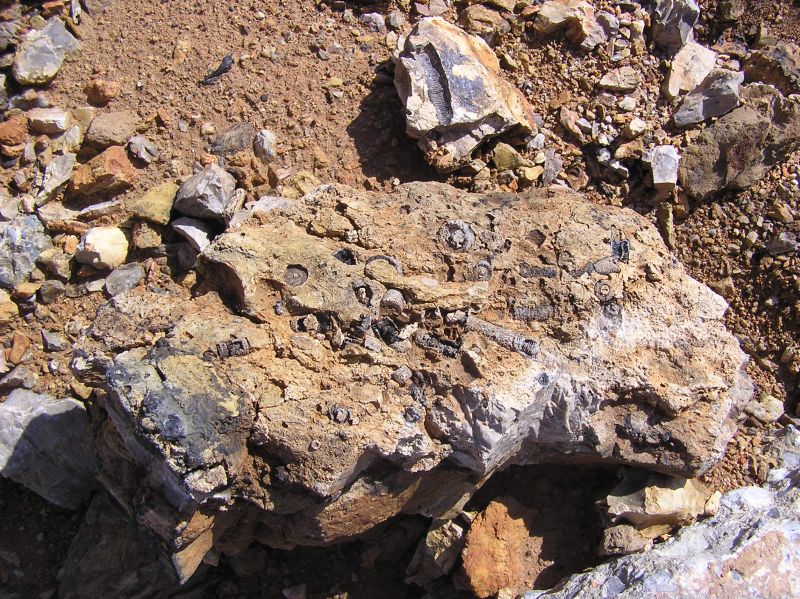
Crinoid stems in matrix.
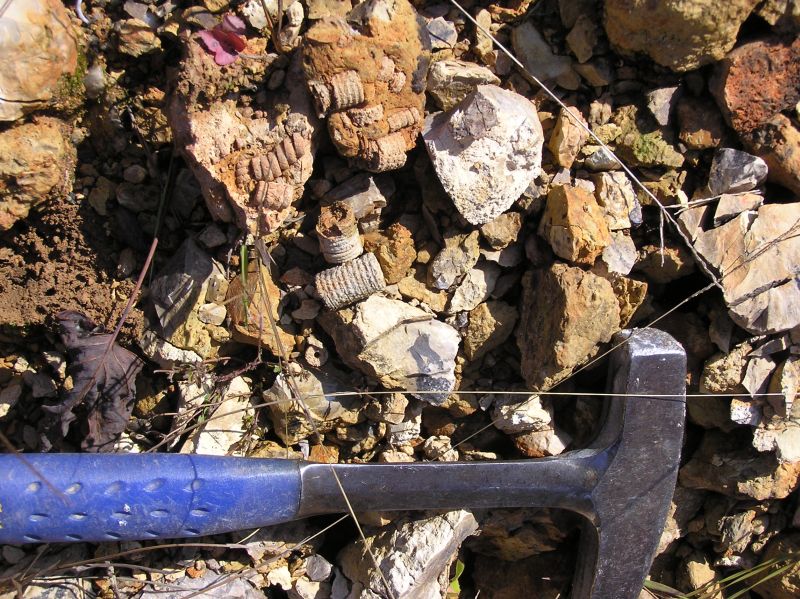
Crinoid stems.
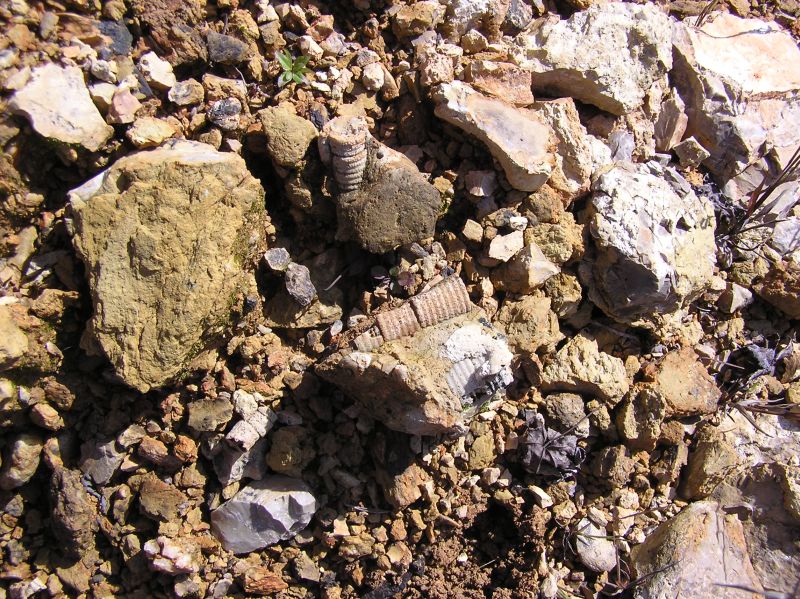
Crinoid stems. Click picture for closer view.
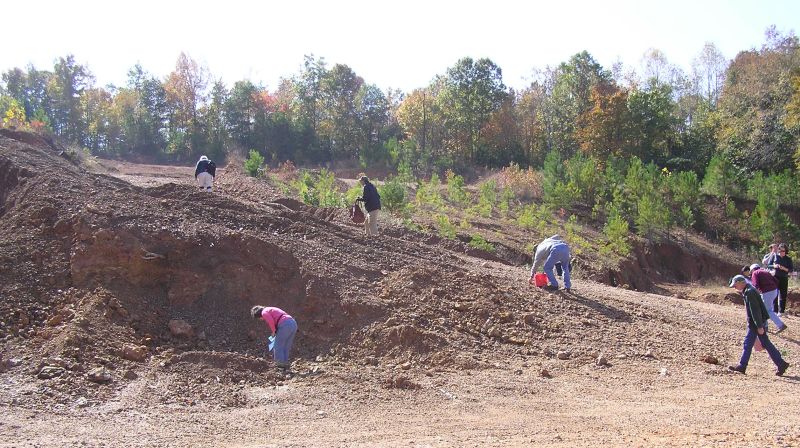
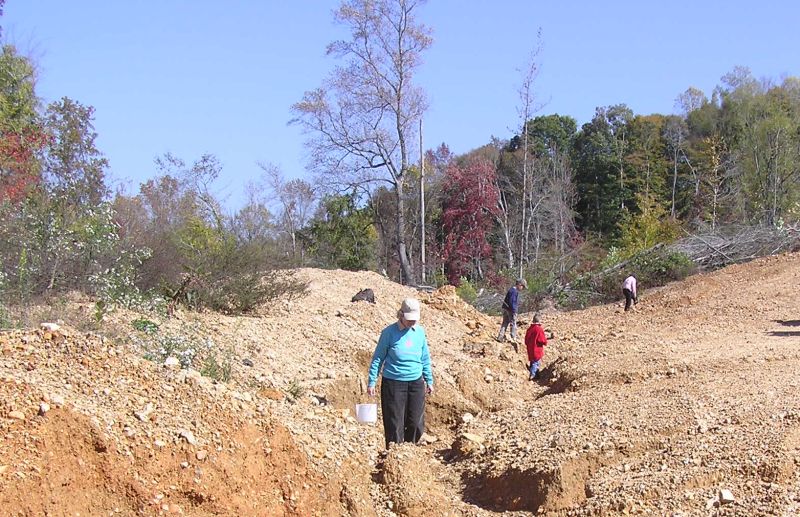
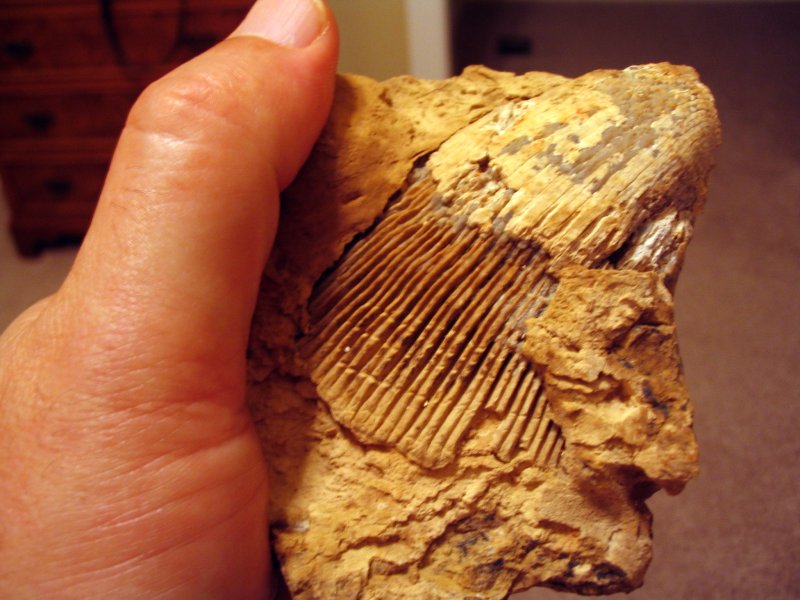
Horned coral found by Bill.
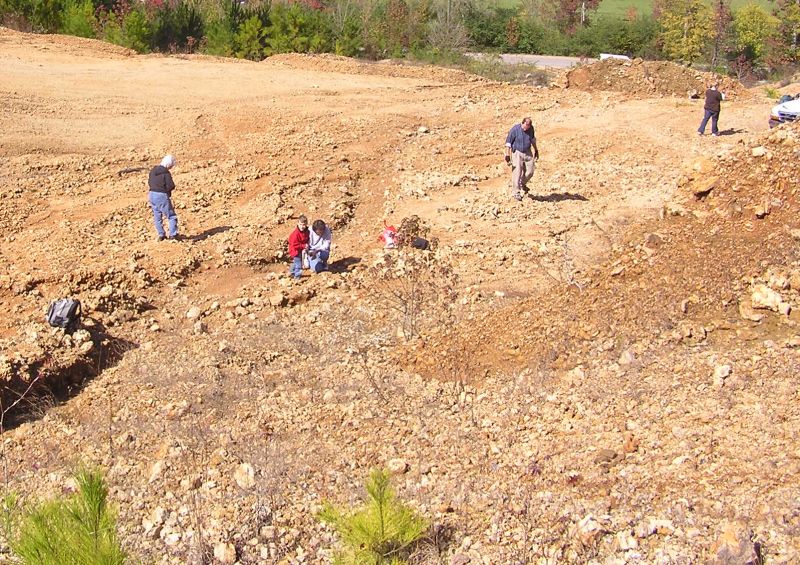
Clockwise, from upper left - unknown (possible stromatolite), possible burrow, part of a trilobite and shell, bryozoan.
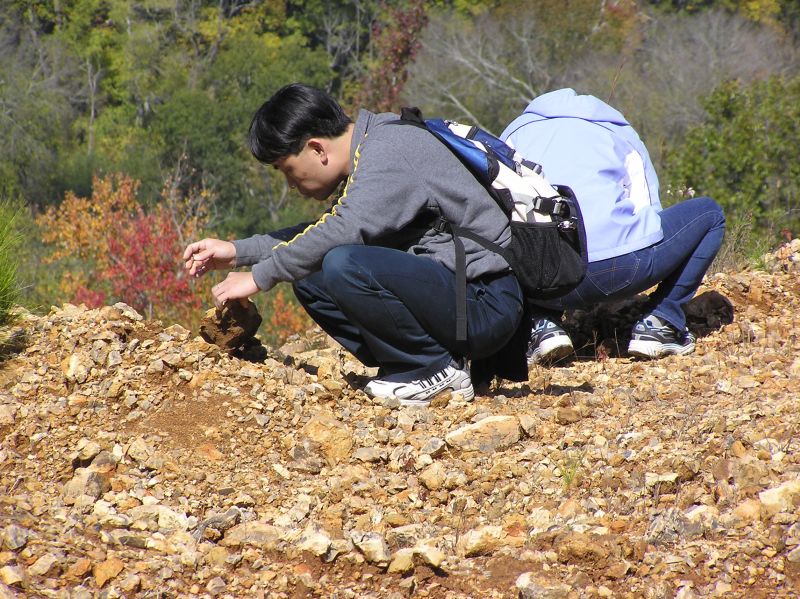
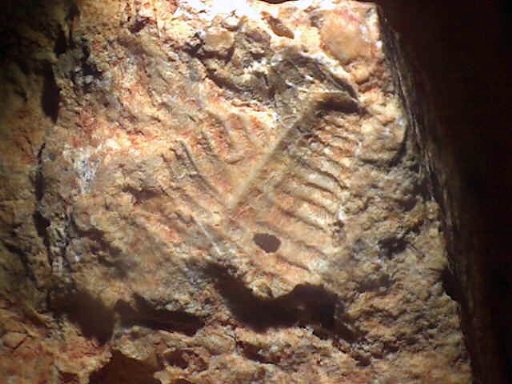
Small trilobite found by Bill, magnified.
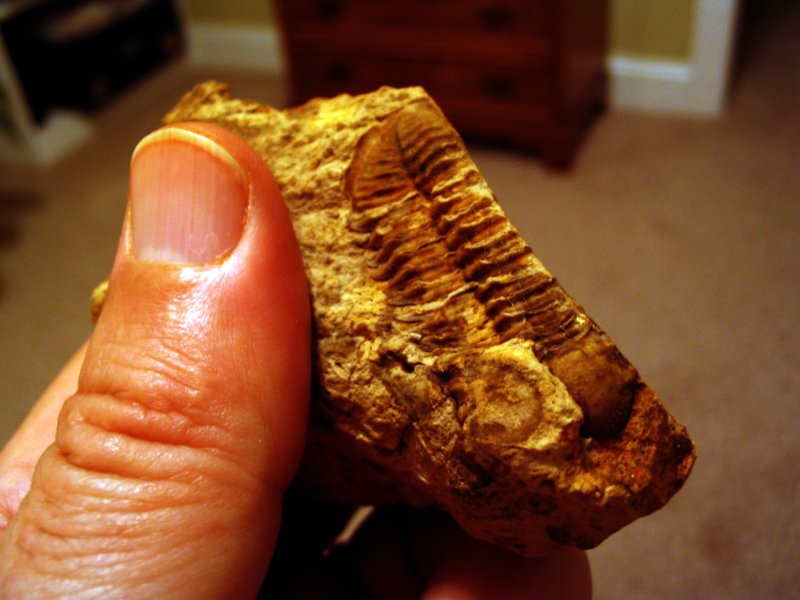
Large trilobite found by Bill. This is what we came for, he must have found their secret hiding place!
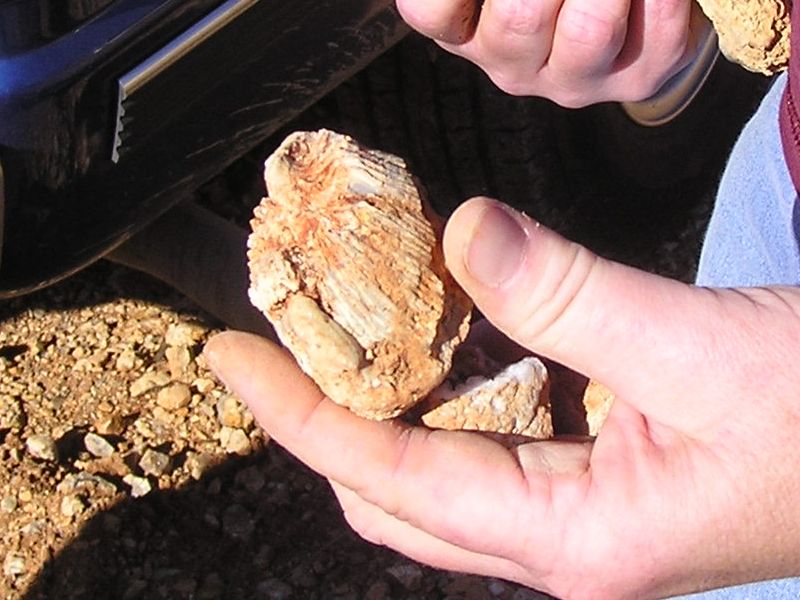
Coral.
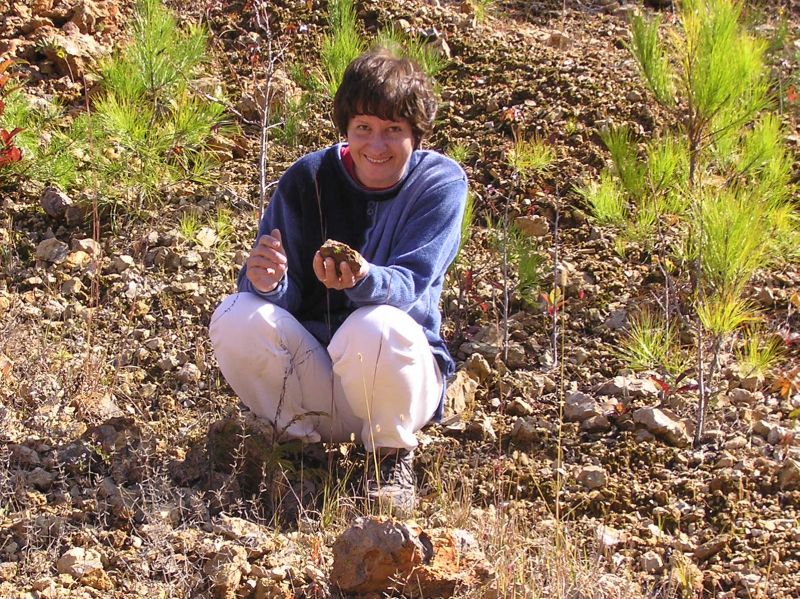
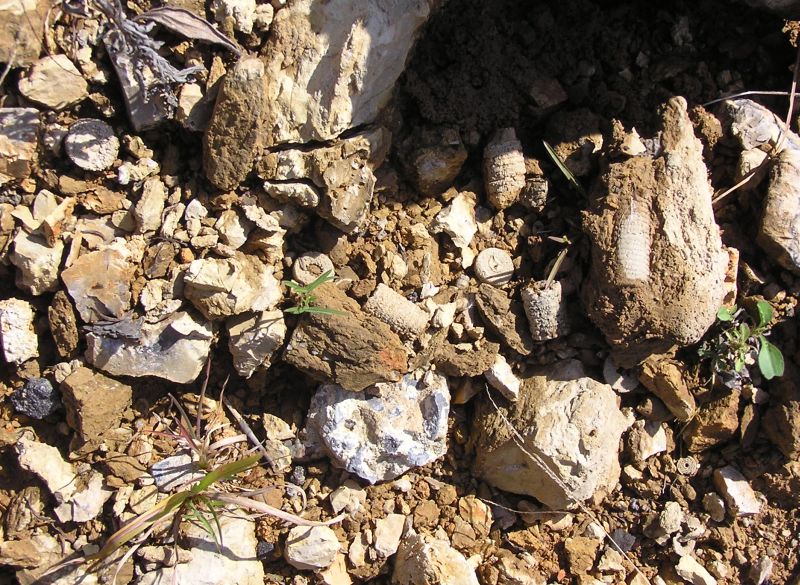
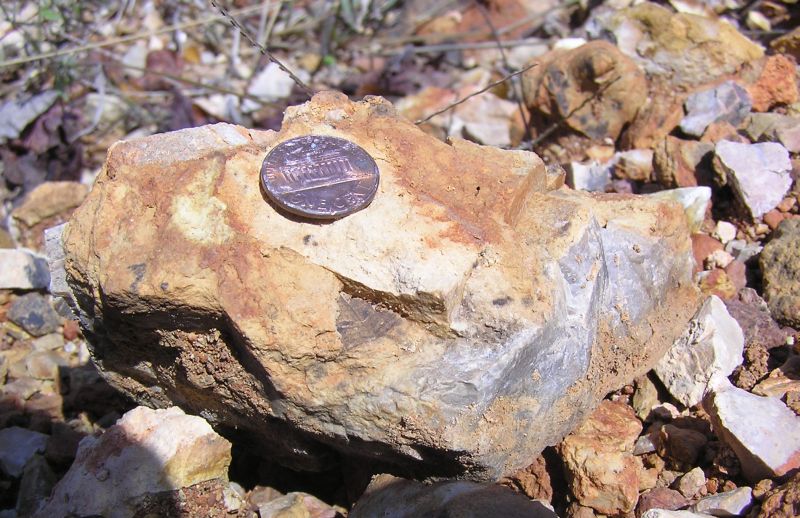
Part of a trilobite.
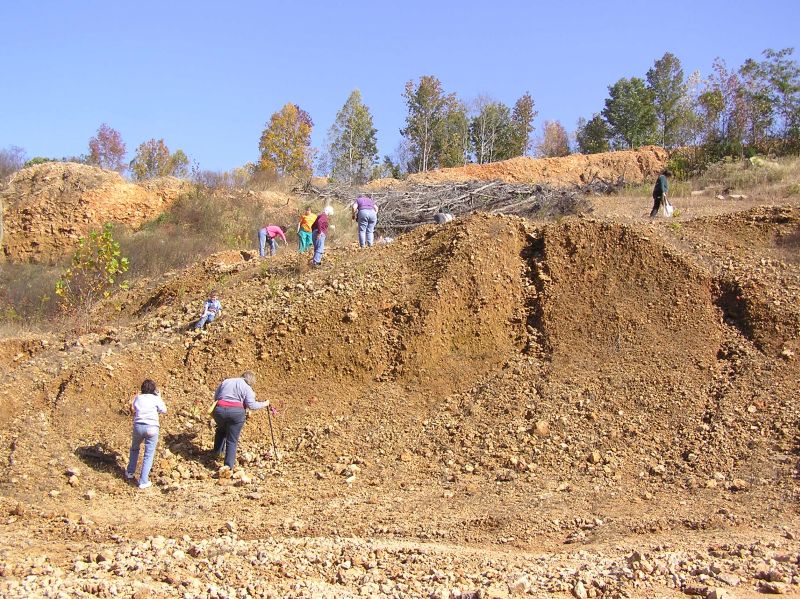
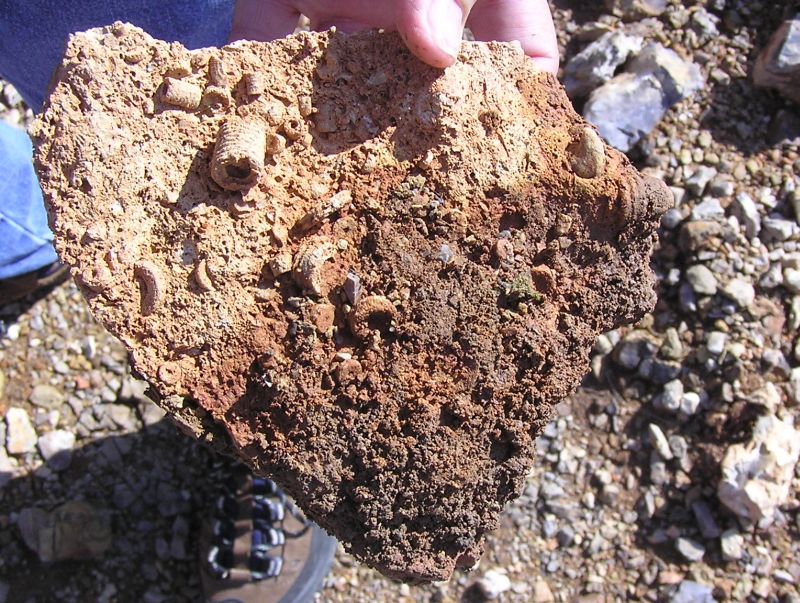
Crinoid encrusted rock.
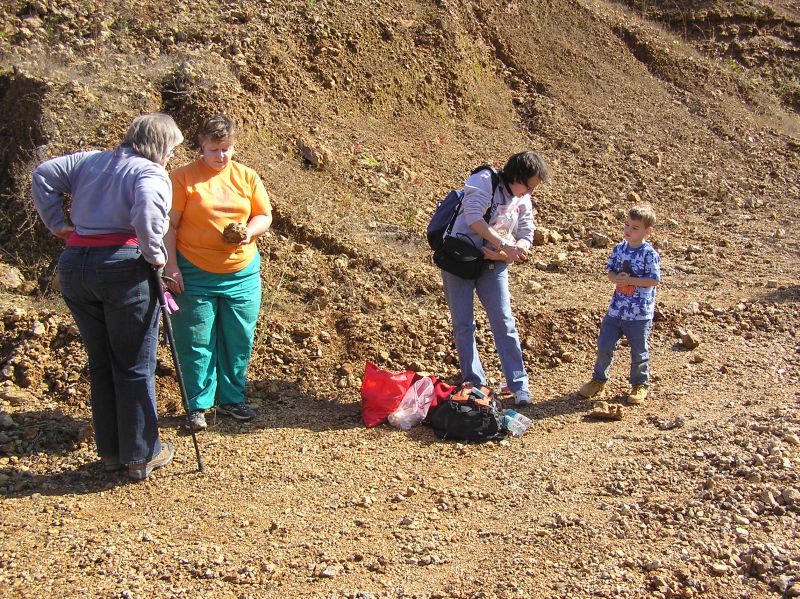
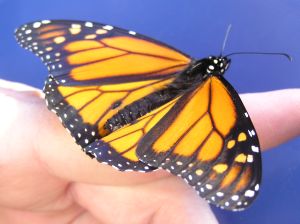
(Photos courtesy Chris and Vicki Lais)
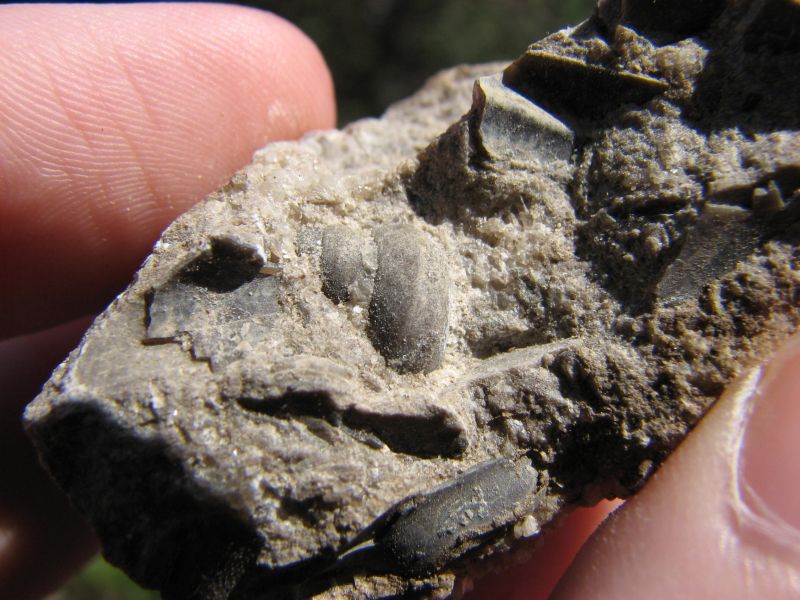
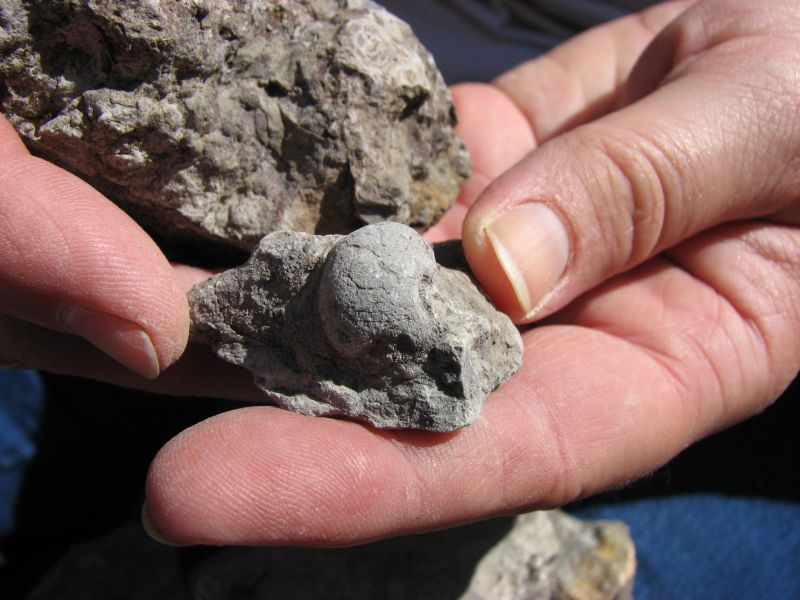
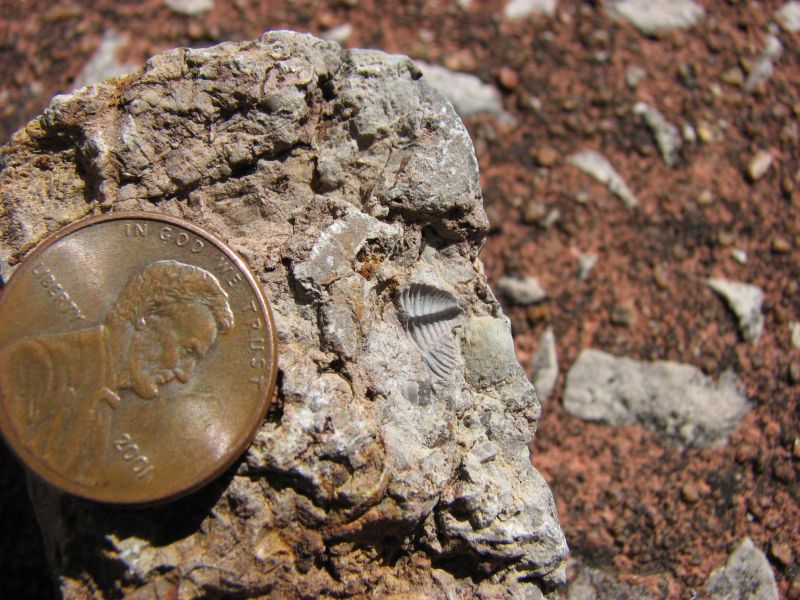
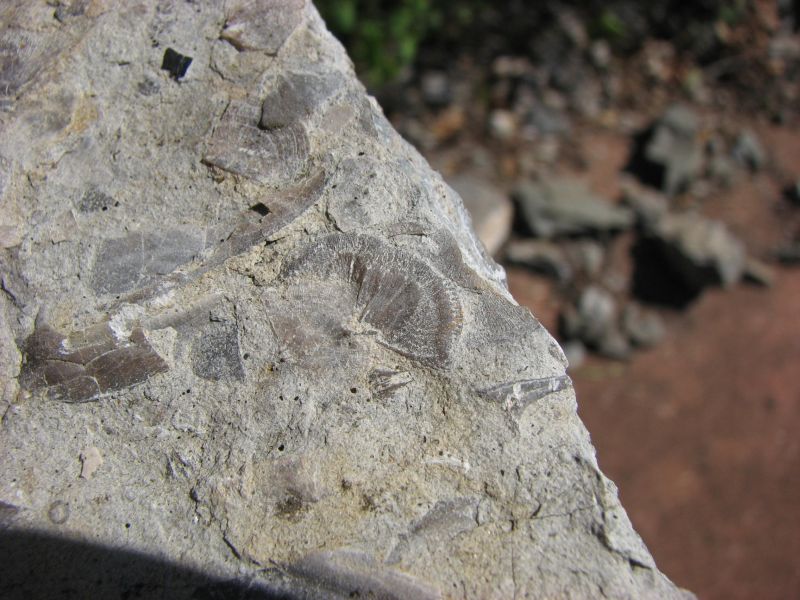
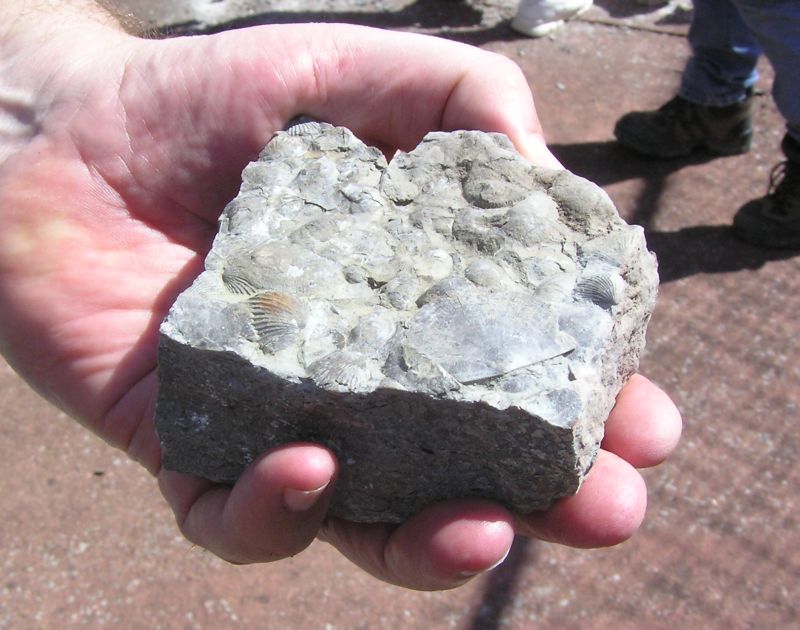
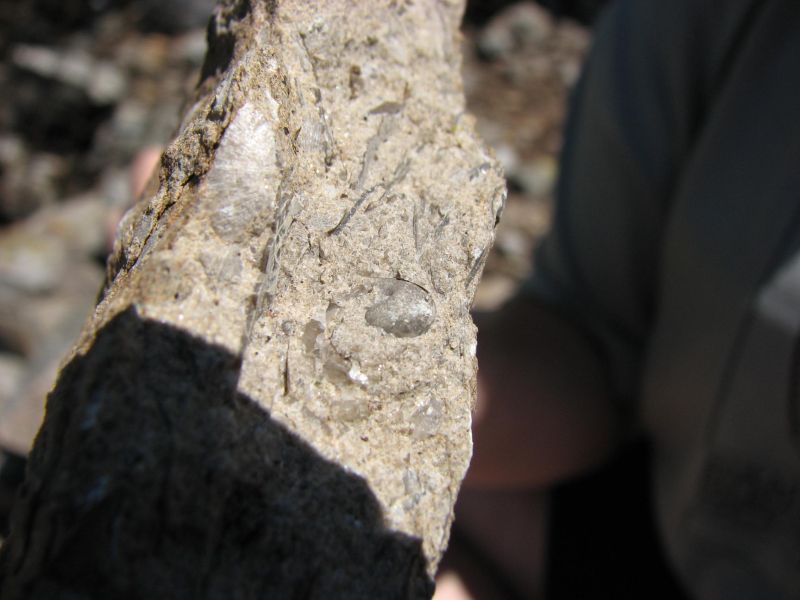
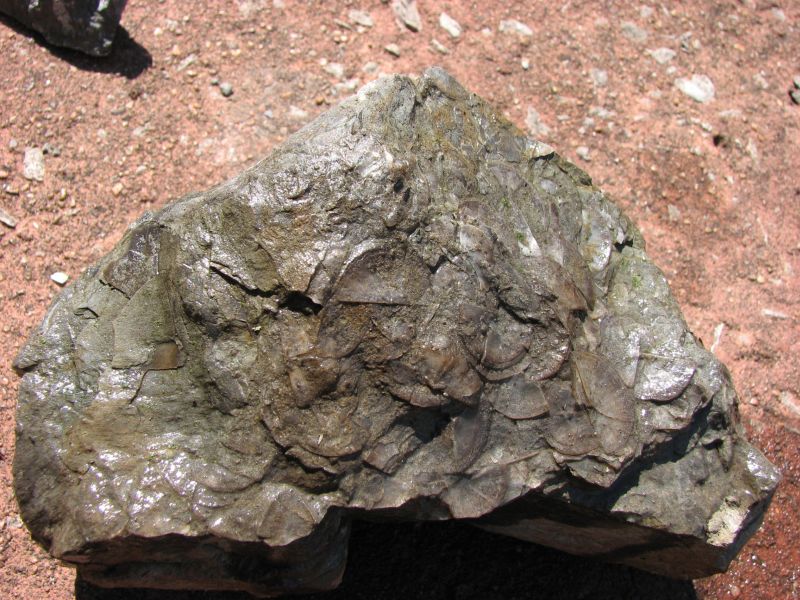
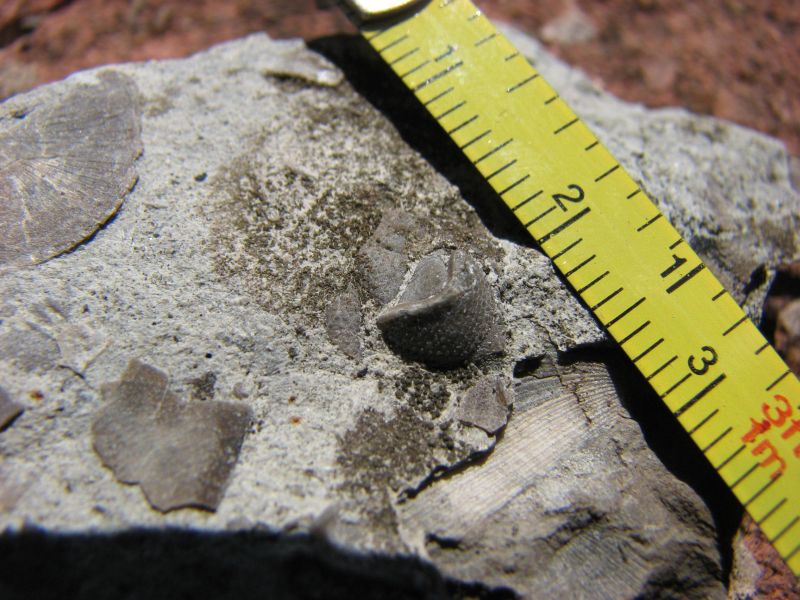
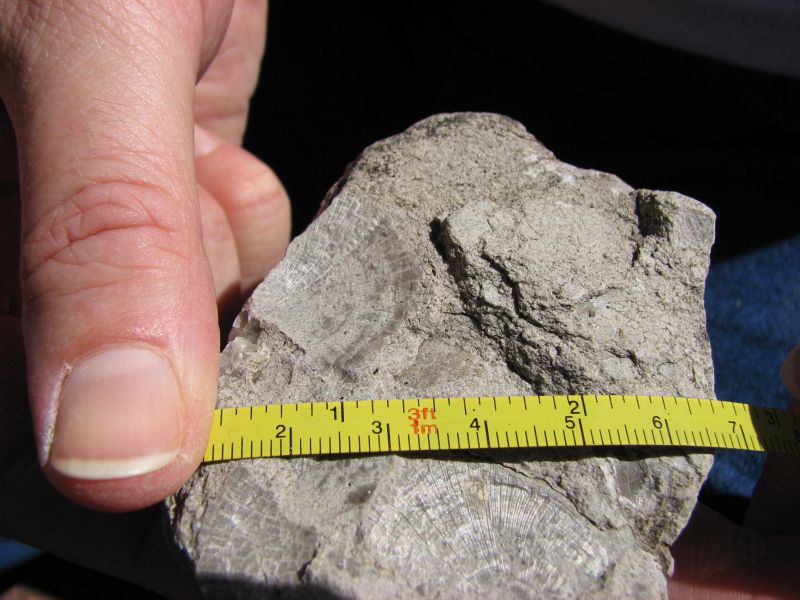
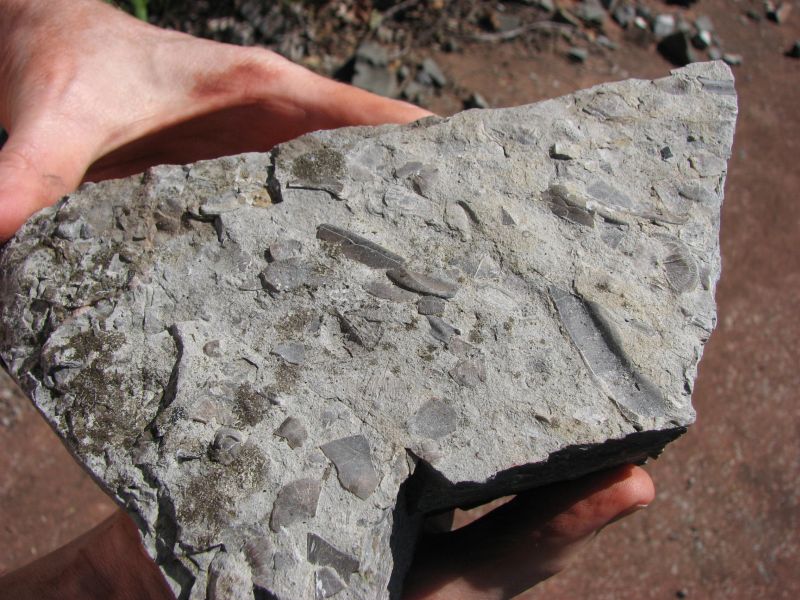
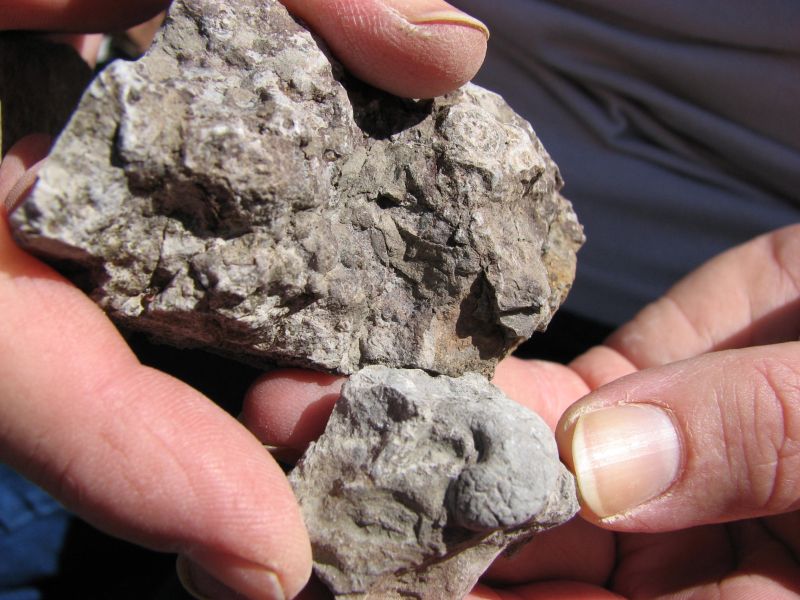
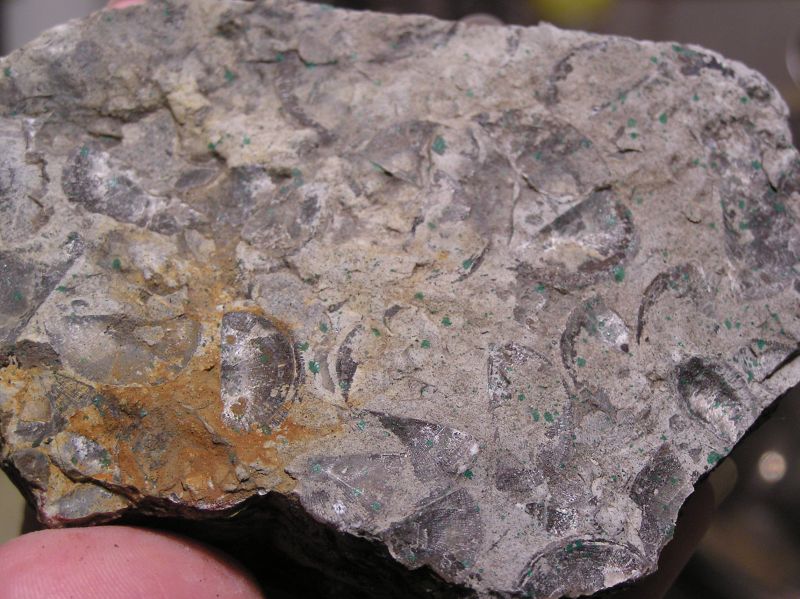
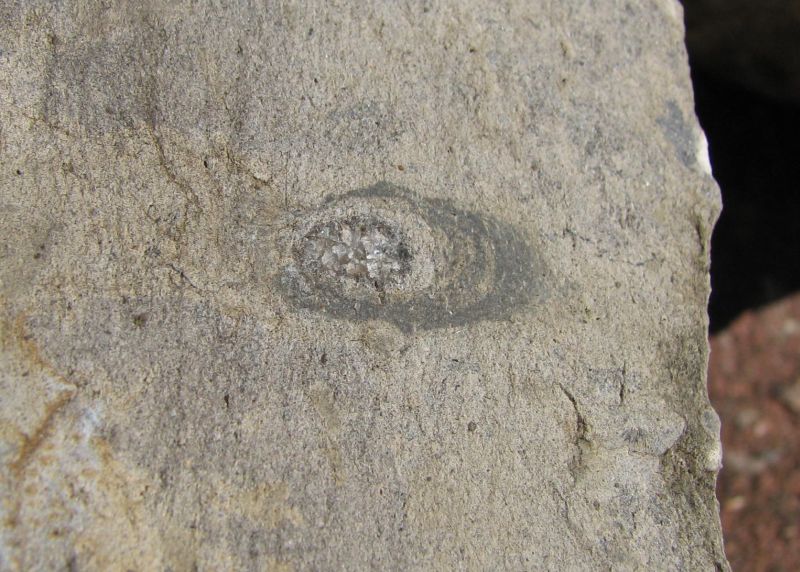
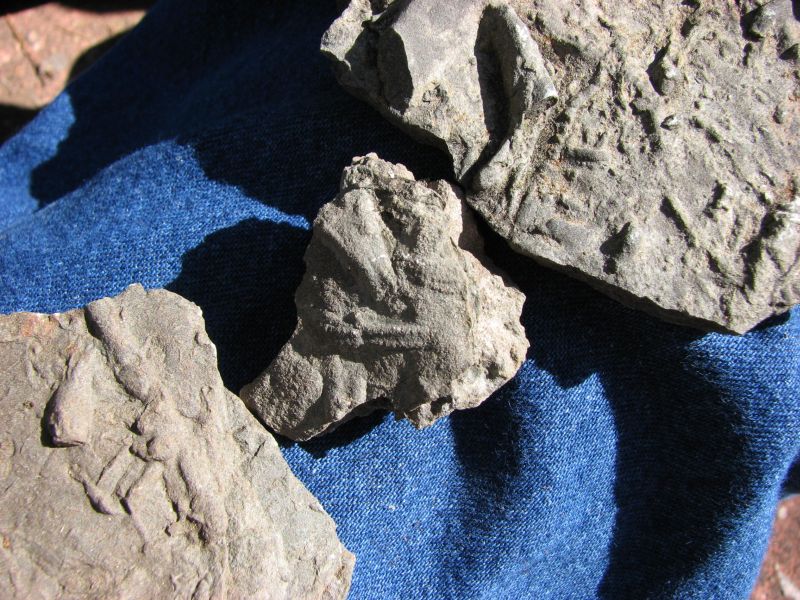
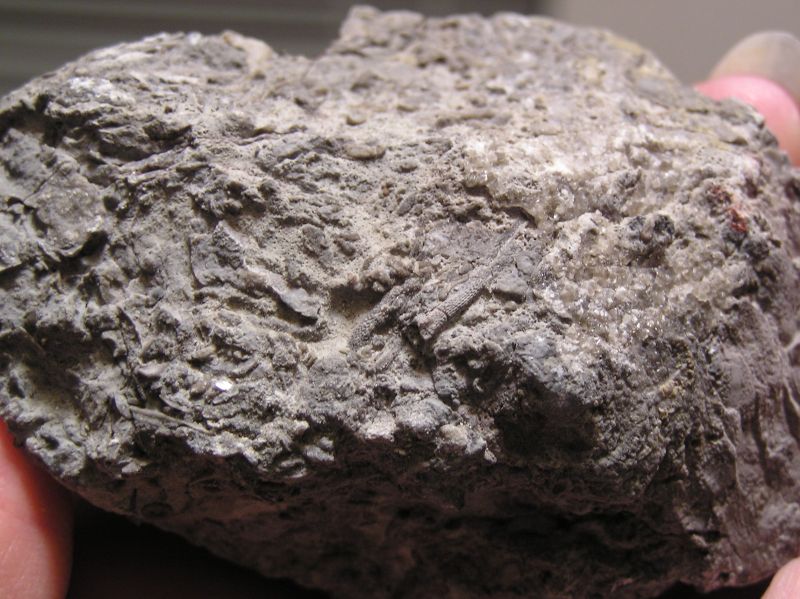
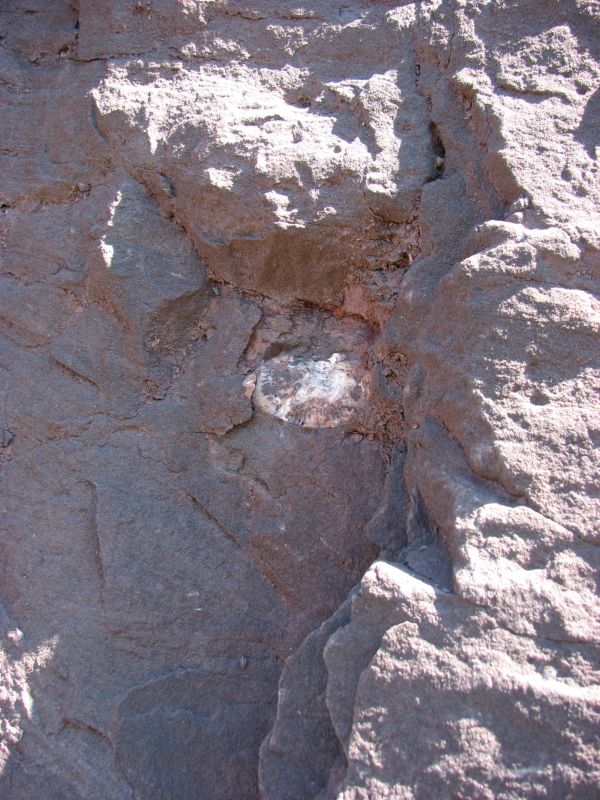
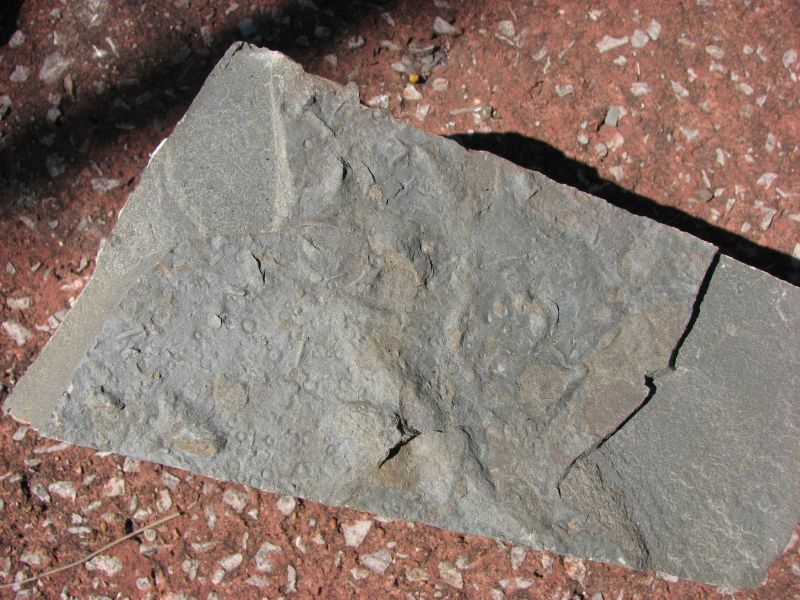
And some mineral specimens:
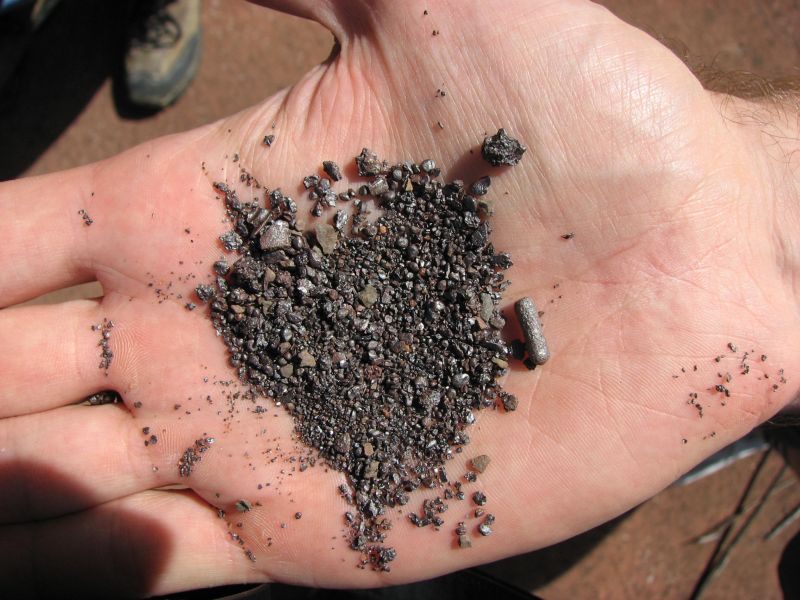
Hematite
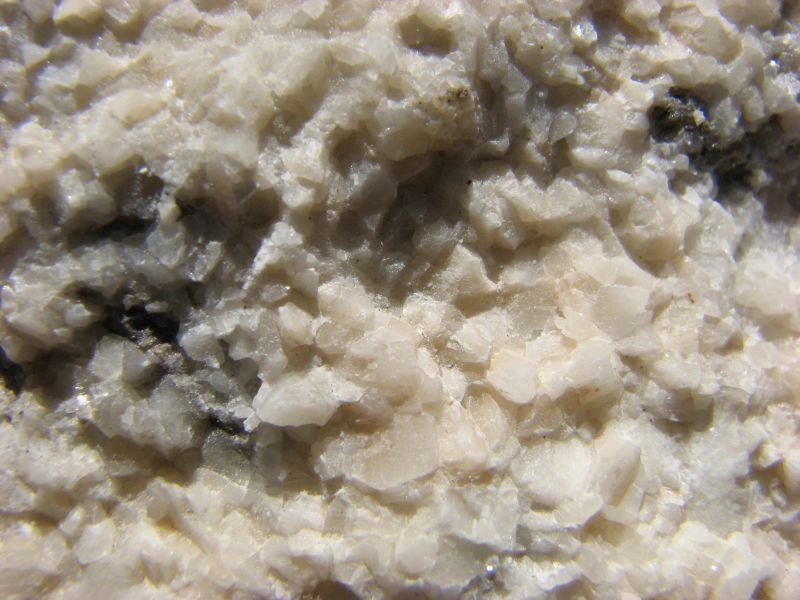
White calcite crystals.
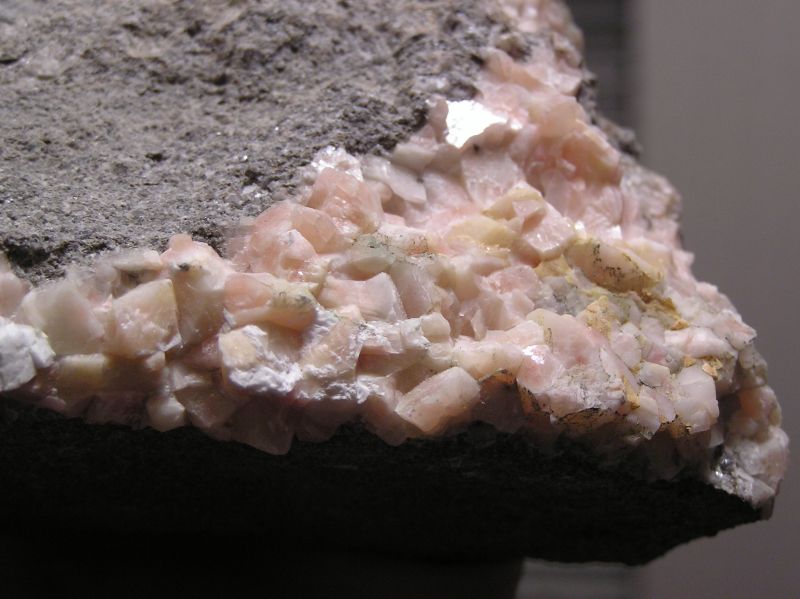
Pink calcite (dolomite) crystals.
Page 1 - General trip photos
Page 2 - Fossils and minerals (this page)